"It's so cold I can't feel my face. The air is filled with sulfur, the flora is nothing more than a few twigs peeking out of the thick snow cover, and I am miles from what anyone would call "civilization." Why am I here? Because I am willing to hate myself in order to get intimate with wildlife, and there is no better time or place for that."
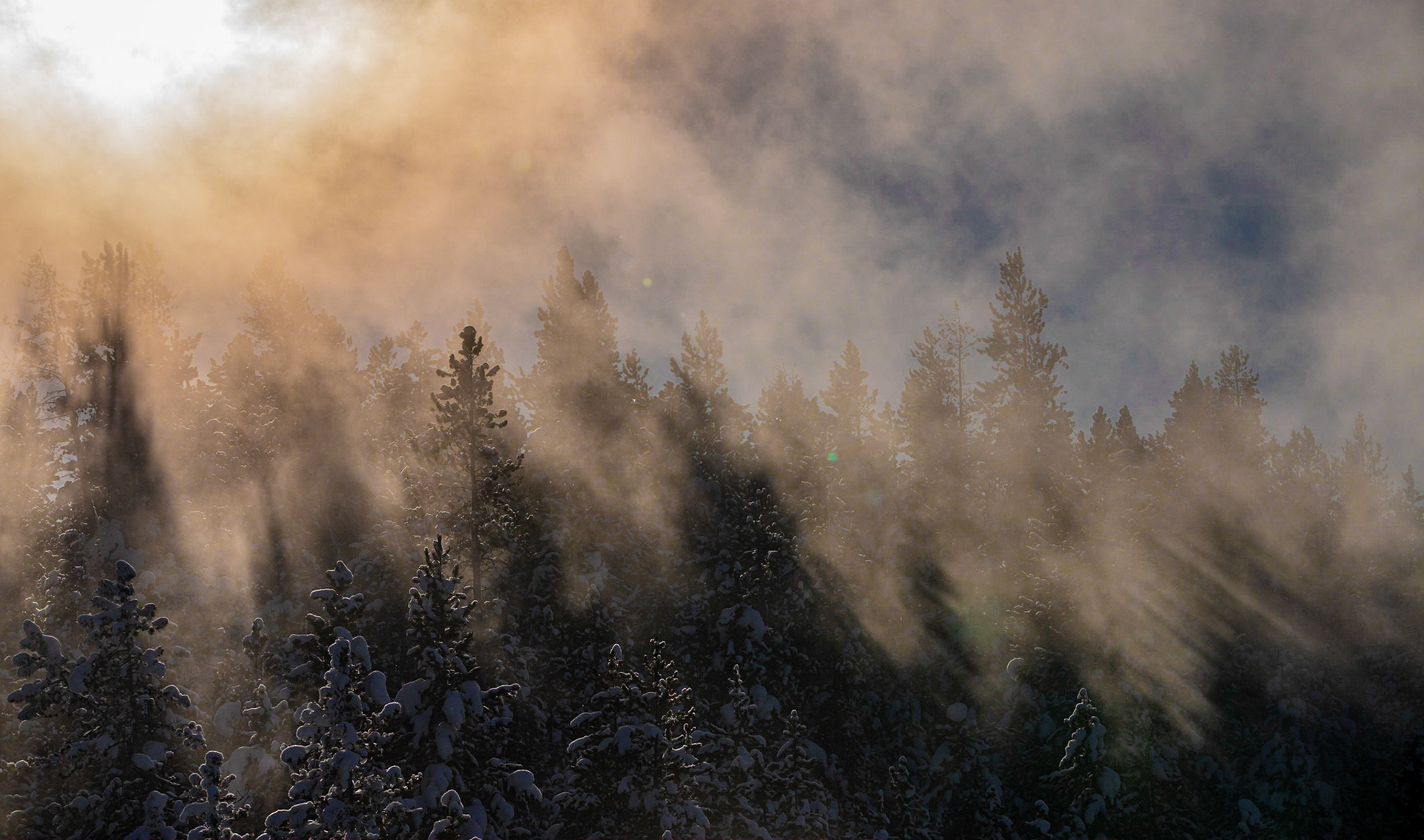
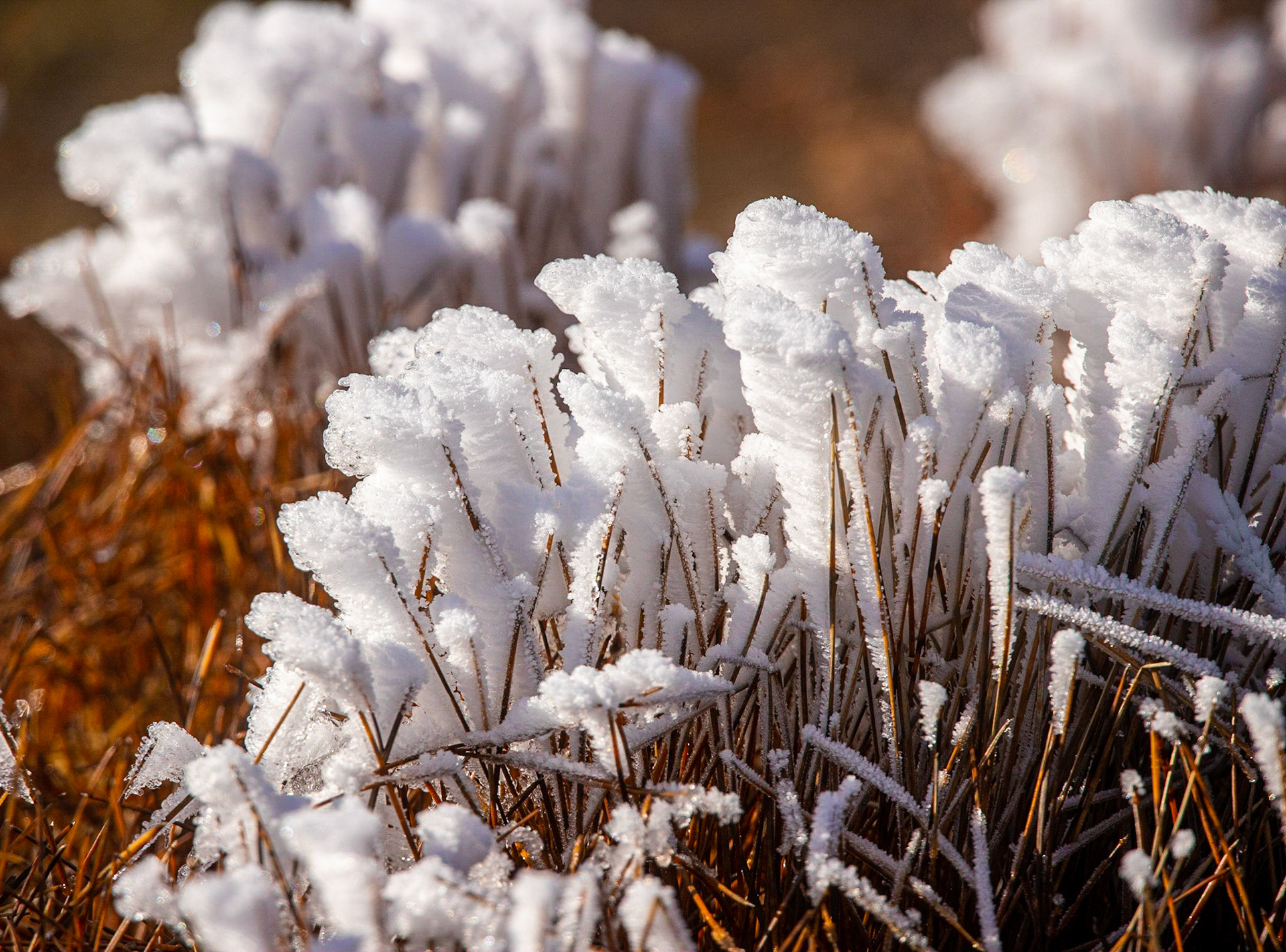
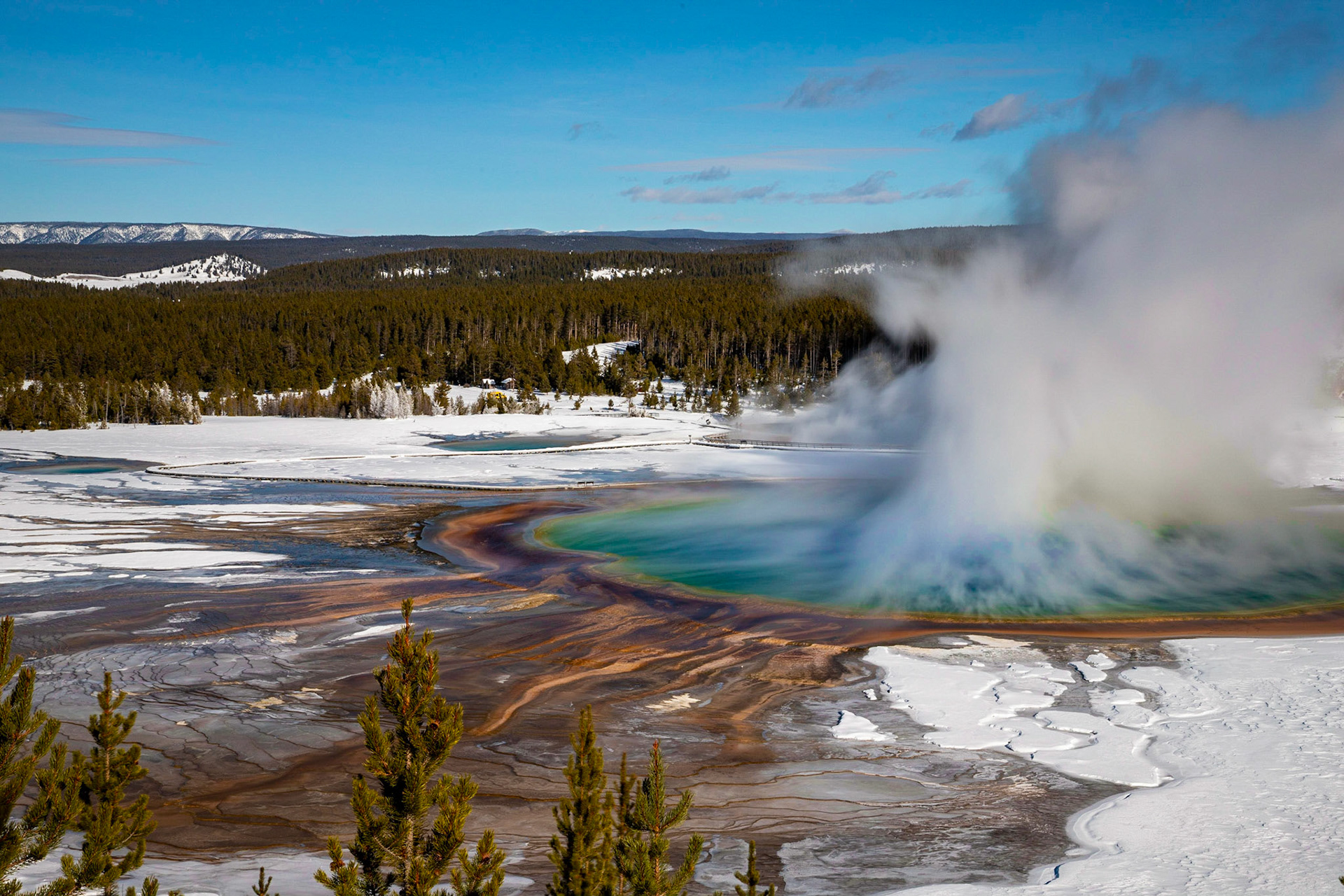
Grand Prismatic Spring
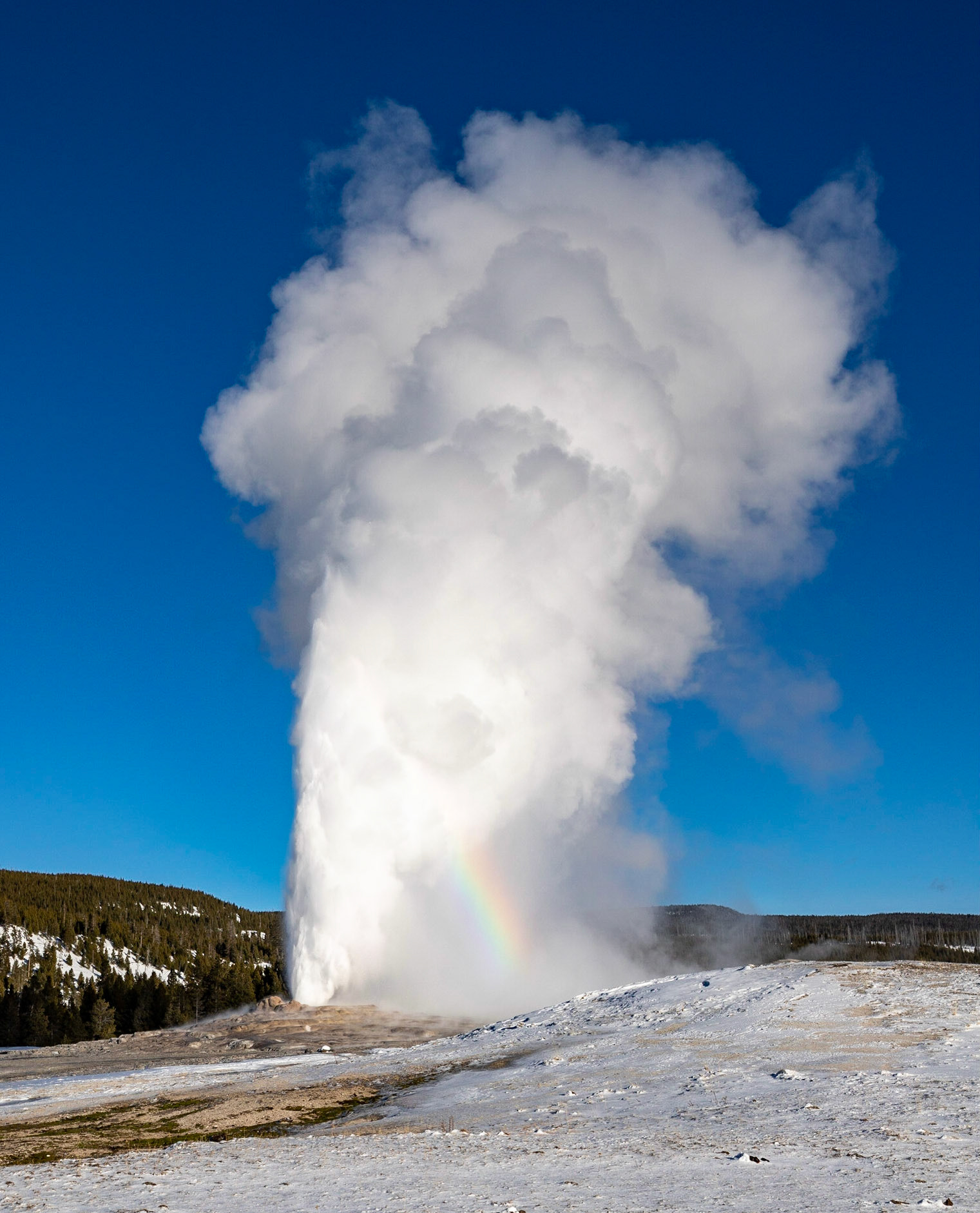
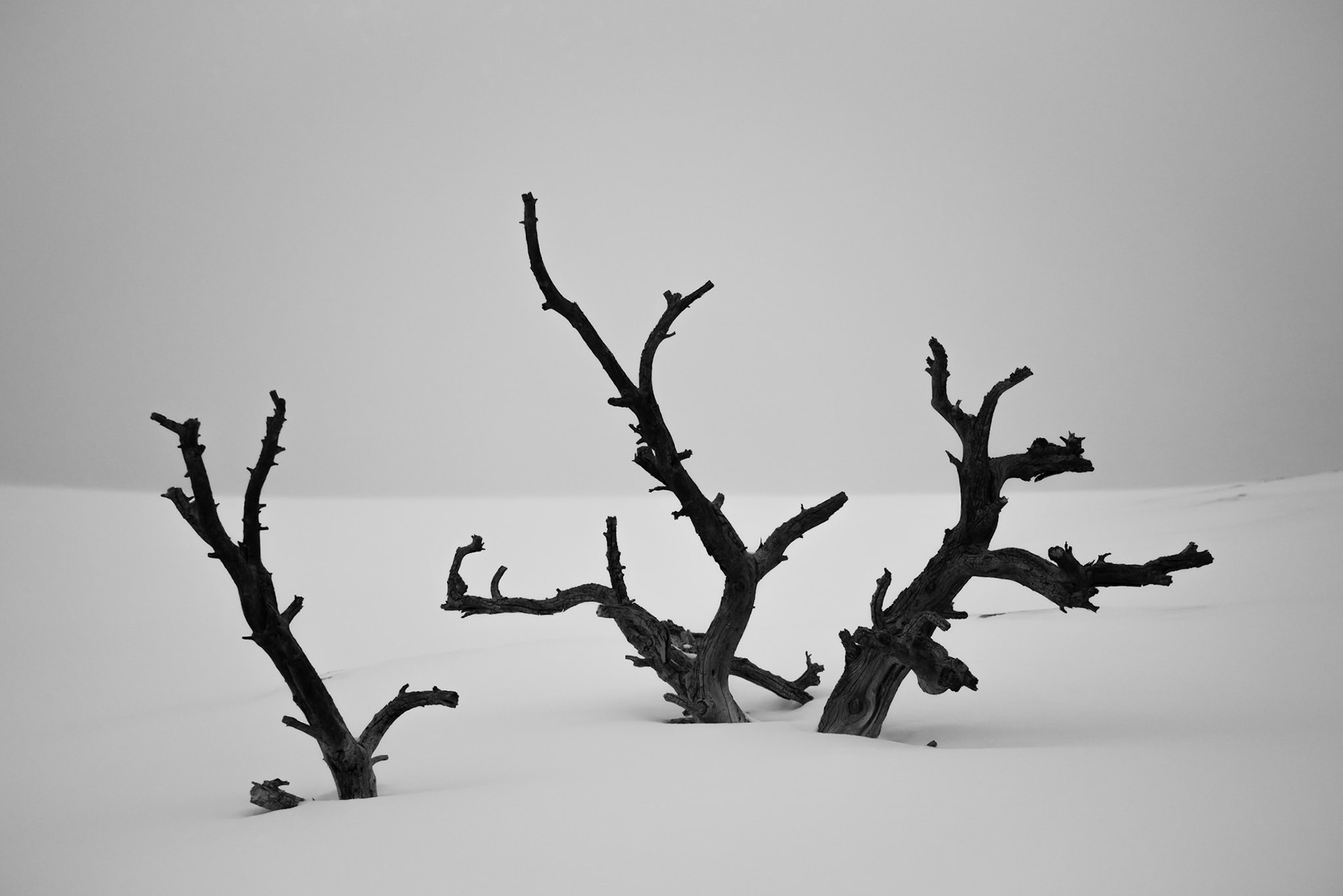
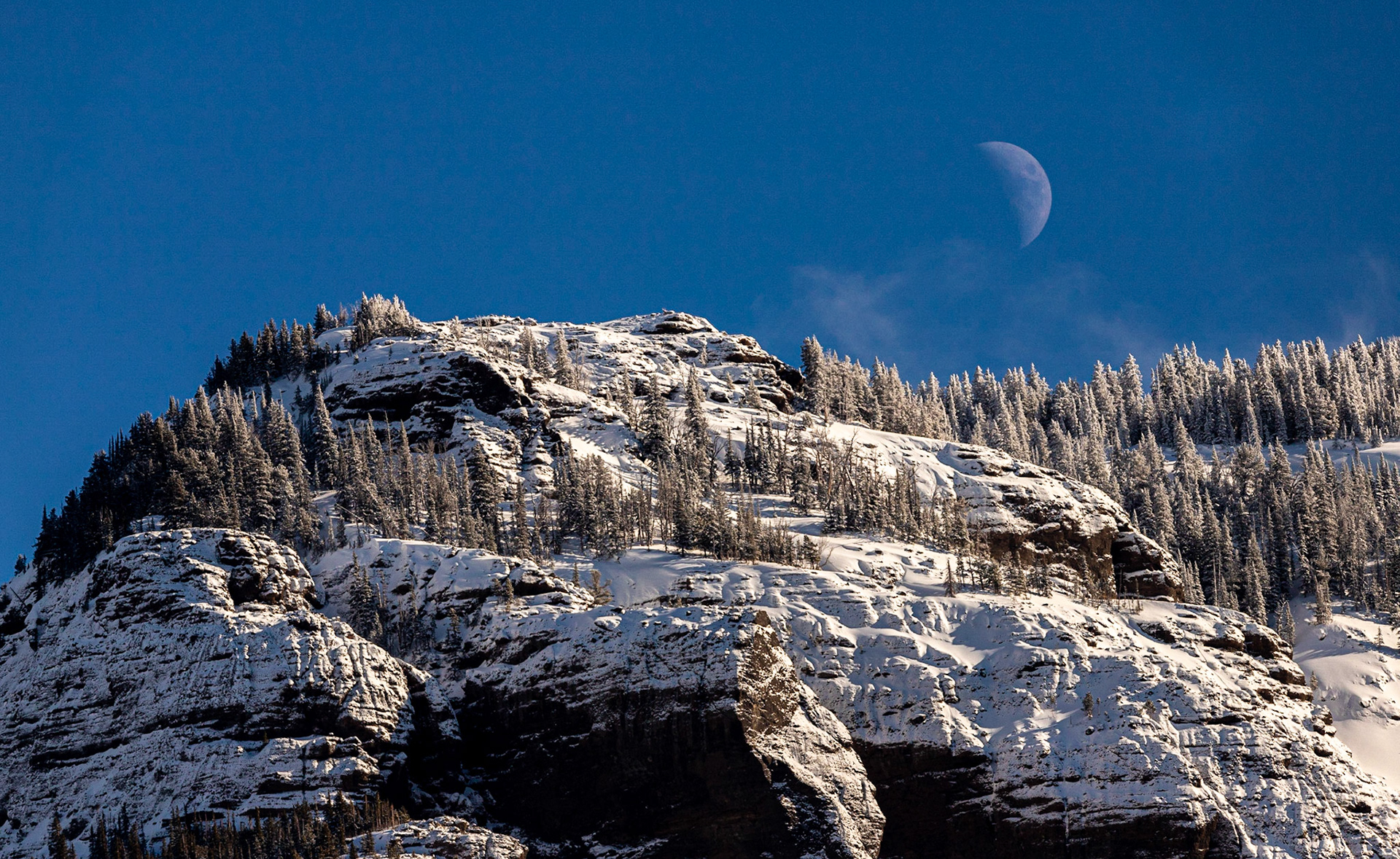
I never thought I could be so hot and yet so cold at the same time. In the winter, parts of Yellowstone can reach temperatures below zero Fahrenheit. The wildlife there is well-adapted to such conditions, as we found out. Still, marching through thick snow to get just the right angle on a landscape or to discover a rare owl or fox can really work up a sweat (while still leaving your fingers and nose to freeze). Meanwhile, Yellowstone's signature geothermal features continue their normal bubbling and spraying, completely unaffected by the climate and producing impressive clouds of steam and poison to cover the otherwise frozen landscape.
We began our exploration at Teton, a fitting place to get in the right mindset, with soaring peaks, wide open plains, and a deafening silence freezing the otherwise vibrant landscape. We would next visit western Yellowstone via snow coach (a requirement due to the road conditions there) along with its geysers, hot springs, and characteristic wildlife. We topped it all off with a tour of northern Yellowstone and the Lamar River valley for an intimate look at the wildlife that makes Yellowstone so famous. We hope you enjoy this significantly watered-down version of what we experienced - it will truly enter our books as one of our favorite trips of all time.
Foxes
Perhaps one of the prettiest animals we saw in the park, foxes boast bright smooth fur and fluidity of motion unmatched by most other forest creatures. Their intelligence shines brightly in their soft eyes as they stalk bison-trampled snowfields looking for rodents stirred up by the carnage. One of my goals for the trip was to capture a fox leaping in the air, as they tend to do while hunting. I would not be disappointed.
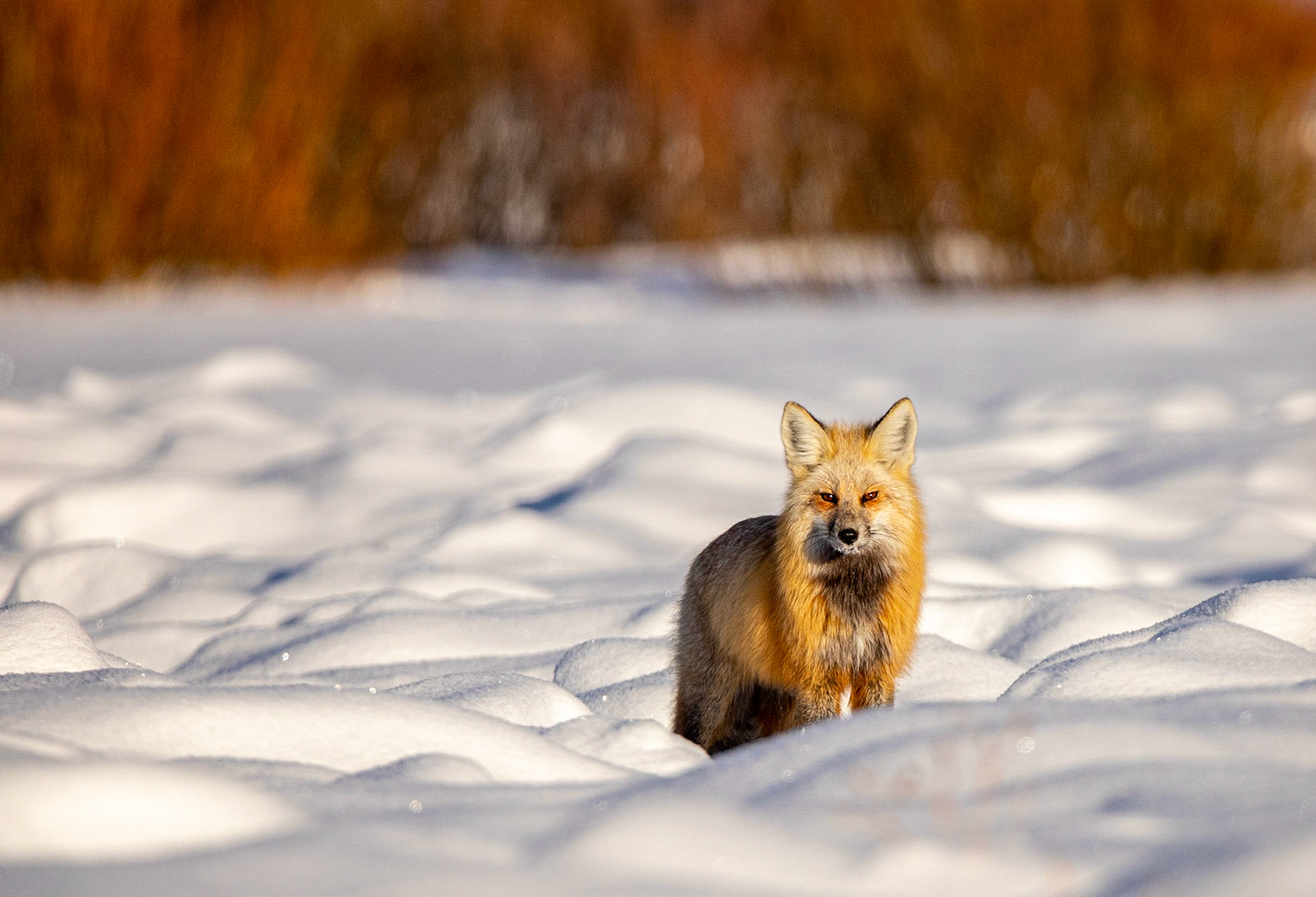


Though we had spotted a couple of foxes earlier in the trip, this would be our best shot at getting close to one. It was hunting just a couple of hundred meters from the road in what seemed to be a big open field, completely mottled by bison hoofprints. Some bushes lined up on the far side of the field, close to the river, would offer a nice hiding spot for us to observe the hunt. Unfortunately, my bright orange jacket (from our Antarctica trip) gave me away. I knew full well the fox had seen me the second I stepped onto the snow, but I still crept up behind it as if stalking a helpless baby (which is a thing I do not ever actually do, I promise).
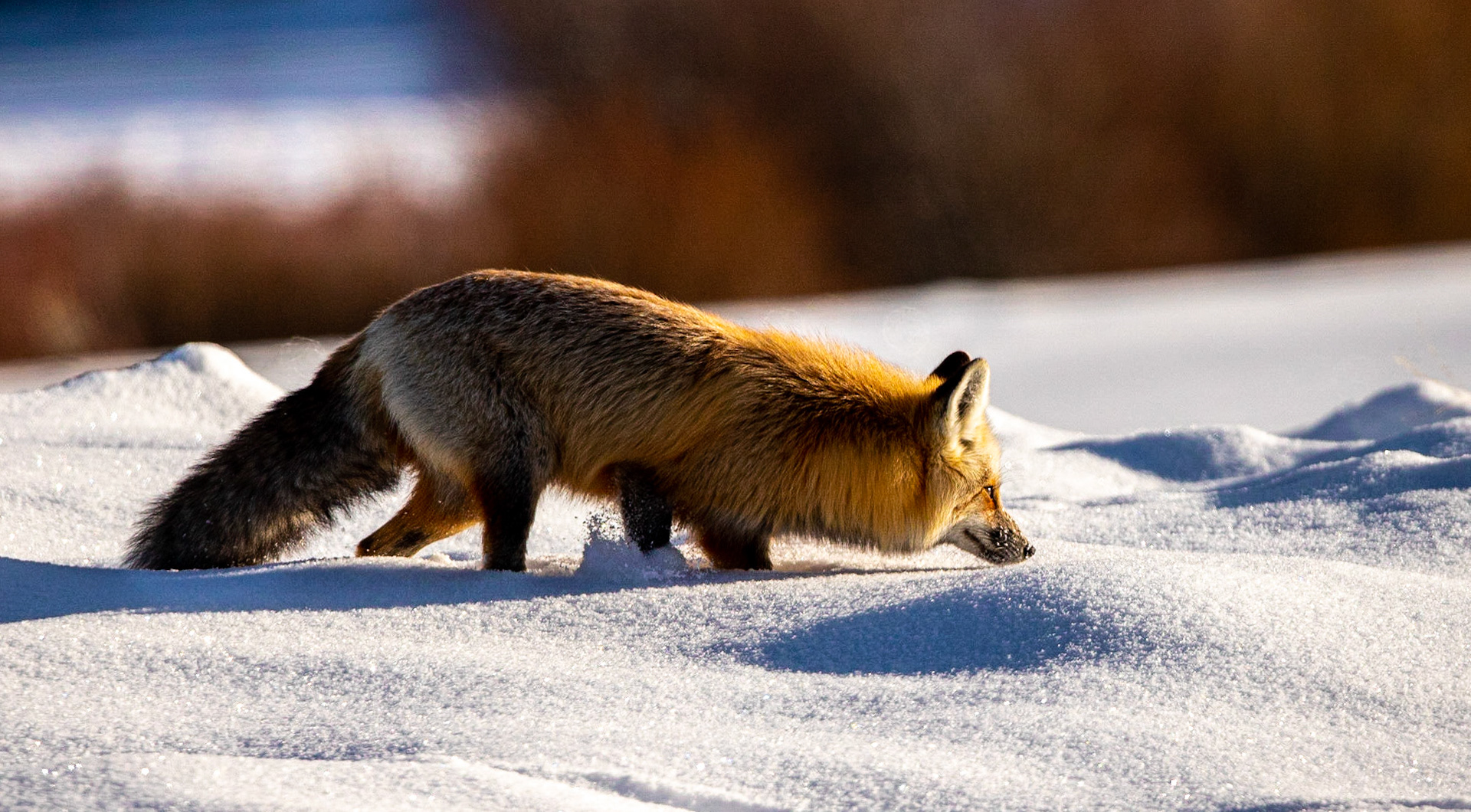
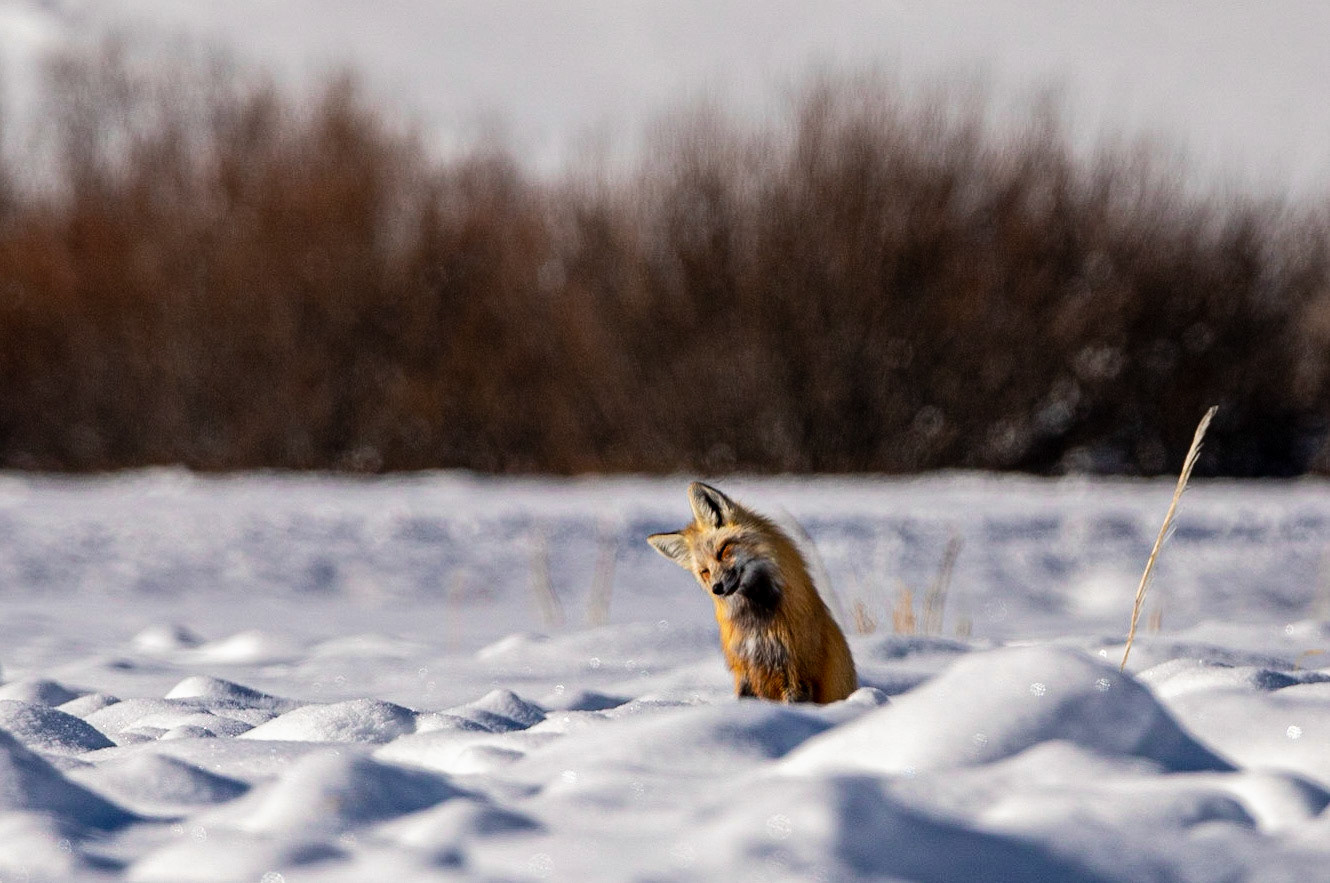
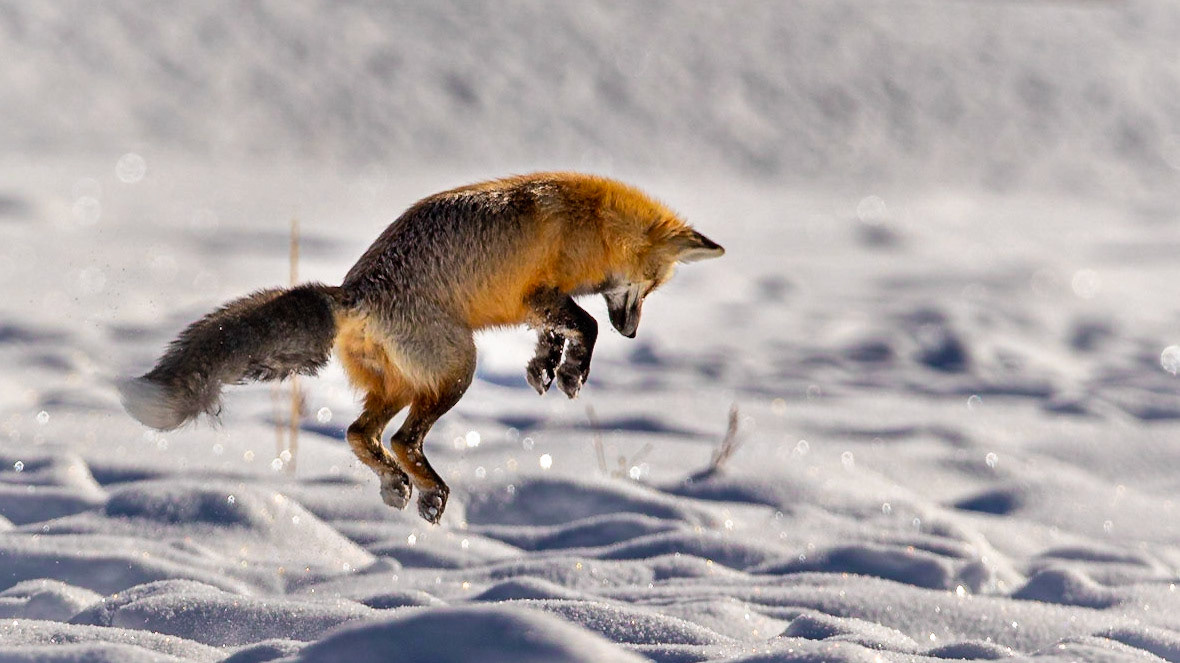
Though the fox glanced our way a couple of times, we didn't seem to bother it further. It continued stalking the field, stopping to listen every so often using its satellite dish ears. When the moment was right, it would tighten up its entire body, then execute a perfect leap and precision dive into the snow. Only a puffy tail would remain above the snowline. A bit of frantic digging would sometimes follow in case of a miss, but often it would emerge victorious with a tail or a tiny leg sticking out of its snout. We watched it for over an hour before it decided to curl up into a ball for a quick nap, at which point we snuck back out the way we came to give it some privacy. How would you like it if an ugly furless biped watched you sleep?
Hayden Valley
Hayden Valley offers a grand view of Yellowstone's caldera rim with rolling plains crisscrossed by streams and rivers. We spent many hours here tracking a lone fox or coyote or just absorbing a fantastic sunset reflected off the snowy hills. This place also seemed to get more snow and wind than other parts of the park, making it a great place to witness the raw power and beauty of nature.
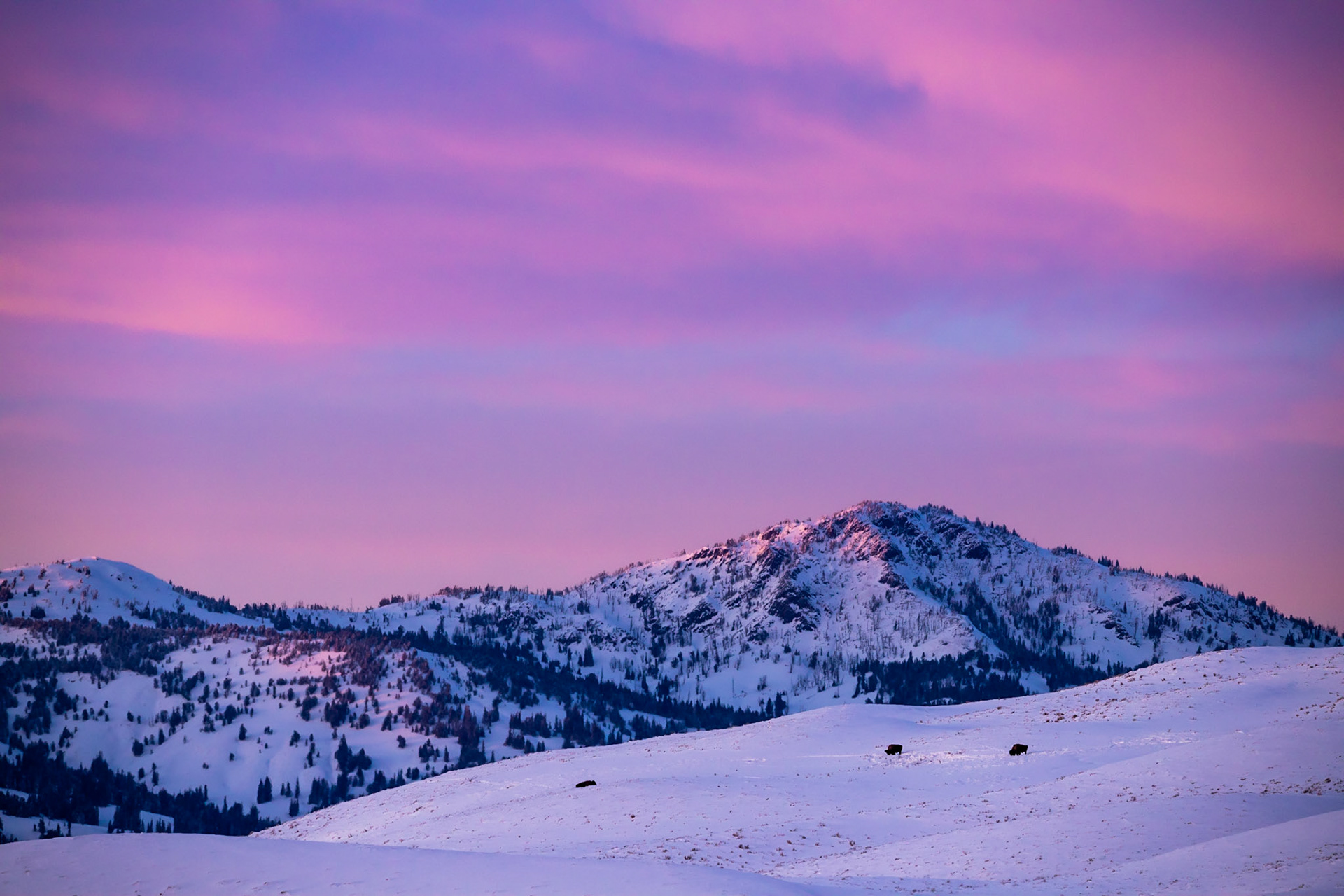
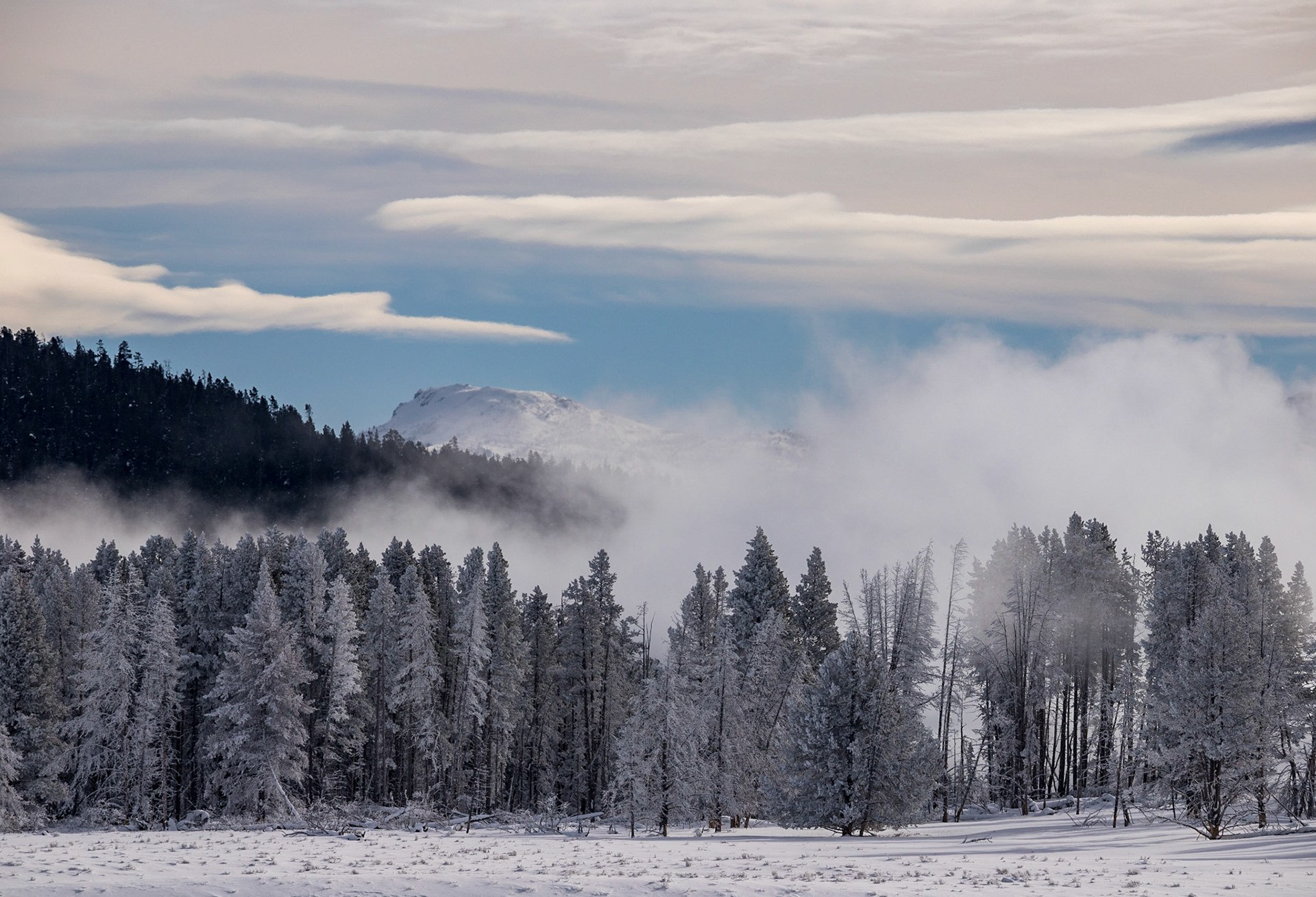
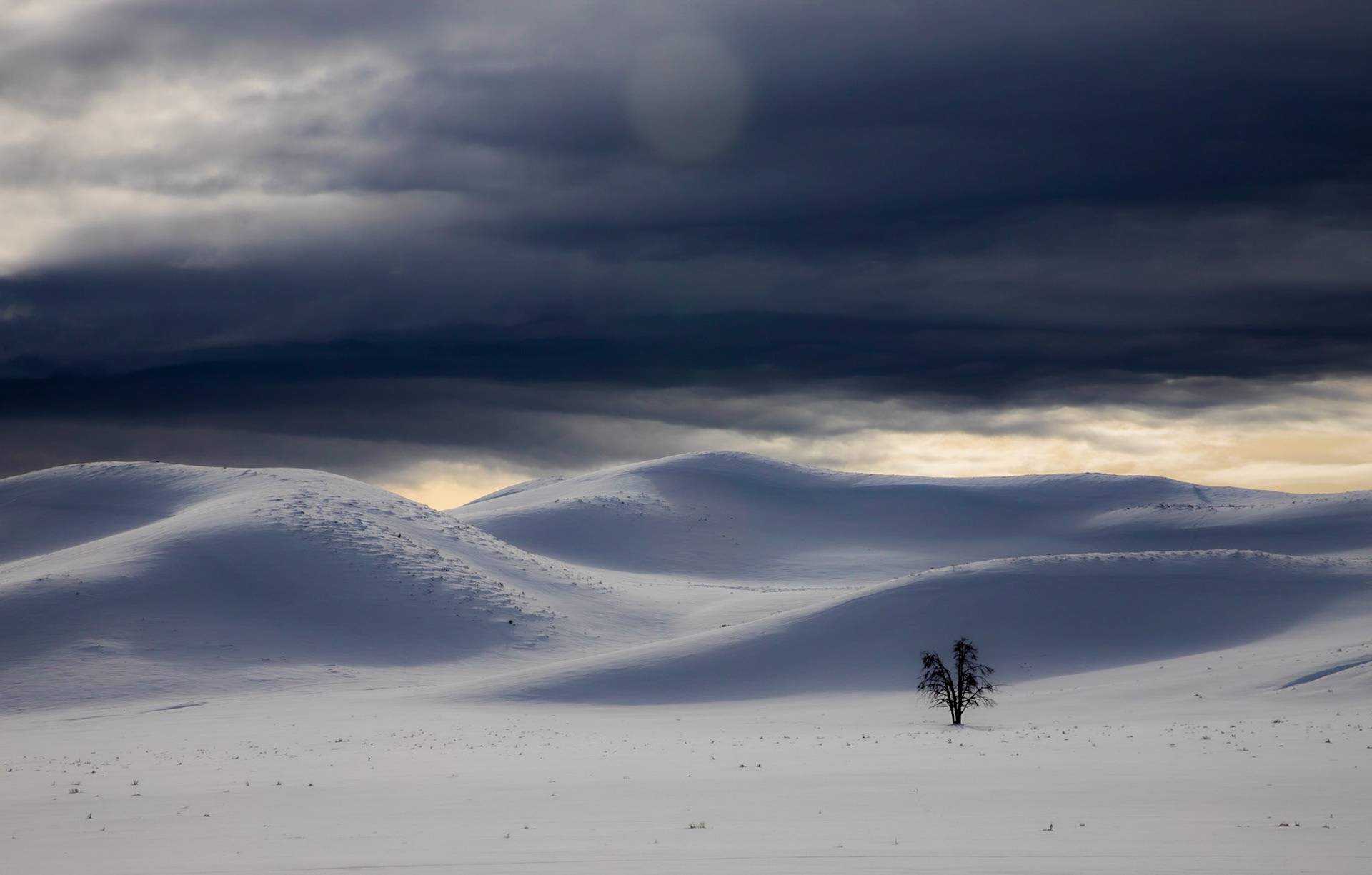
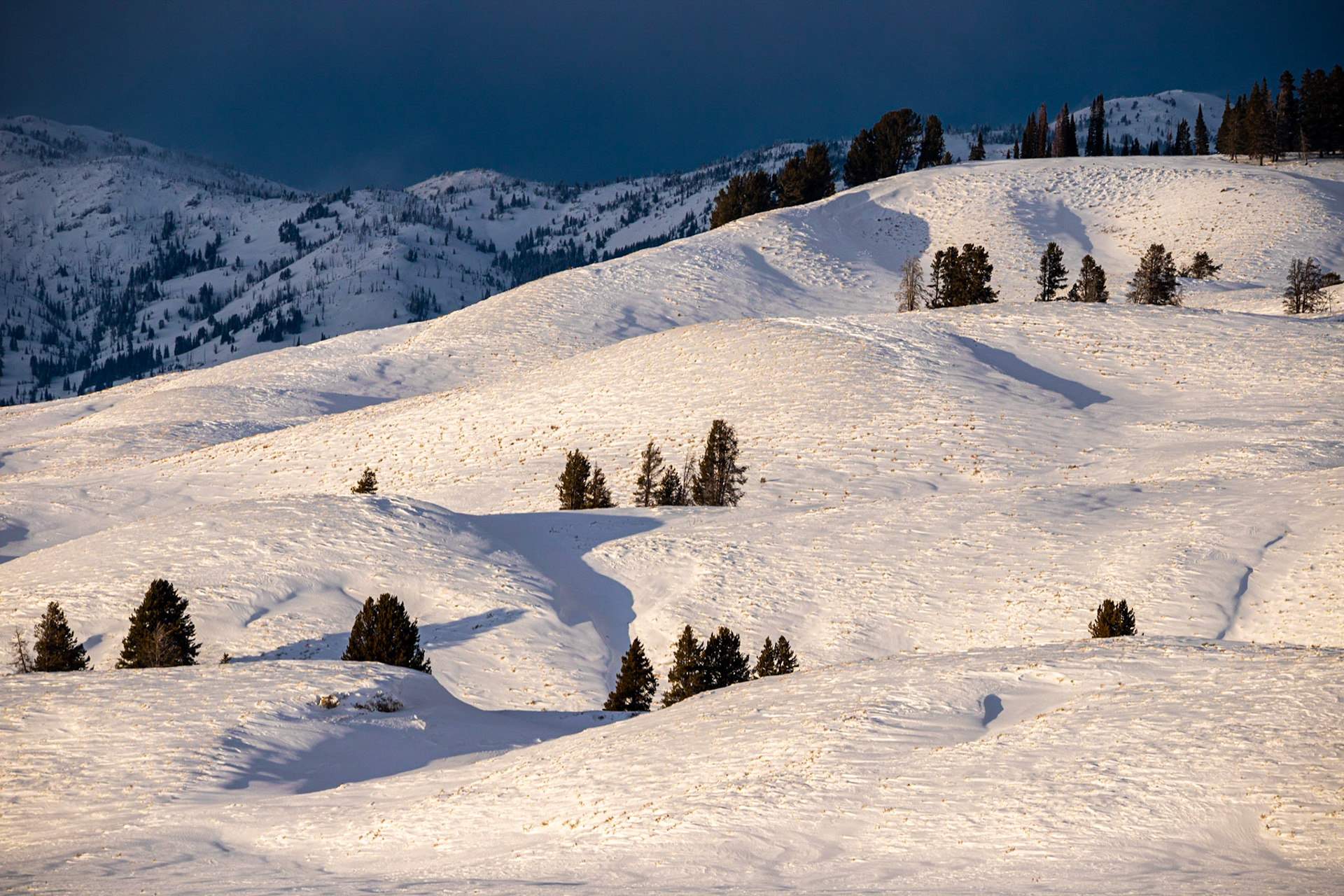
Near dusk a couple of days in, a bit of a blizzard opened up the real beauty of the valley. Strong winds blew snow crystals across the rolling hills sending them shimmering in the failing sunlight. The combination of biting cold and ice tearing at my face made me feel like I was being sandblasted. Still, I couldn't turn away from the horrible beauty of this place. The wind created patterns in the snow drifts that reminded me of flowing water, all backlit by a hazy but warm glow from the sun. Even the most tenacious shrubs bent and swayed with the gale, leaving their silhouettes to dance in time with the gusts. Our cameras required a good deal of cleaning and drying after this episode, and we celebrated with some hot toddies back in the camp to return the feeling to our trigger fingers.

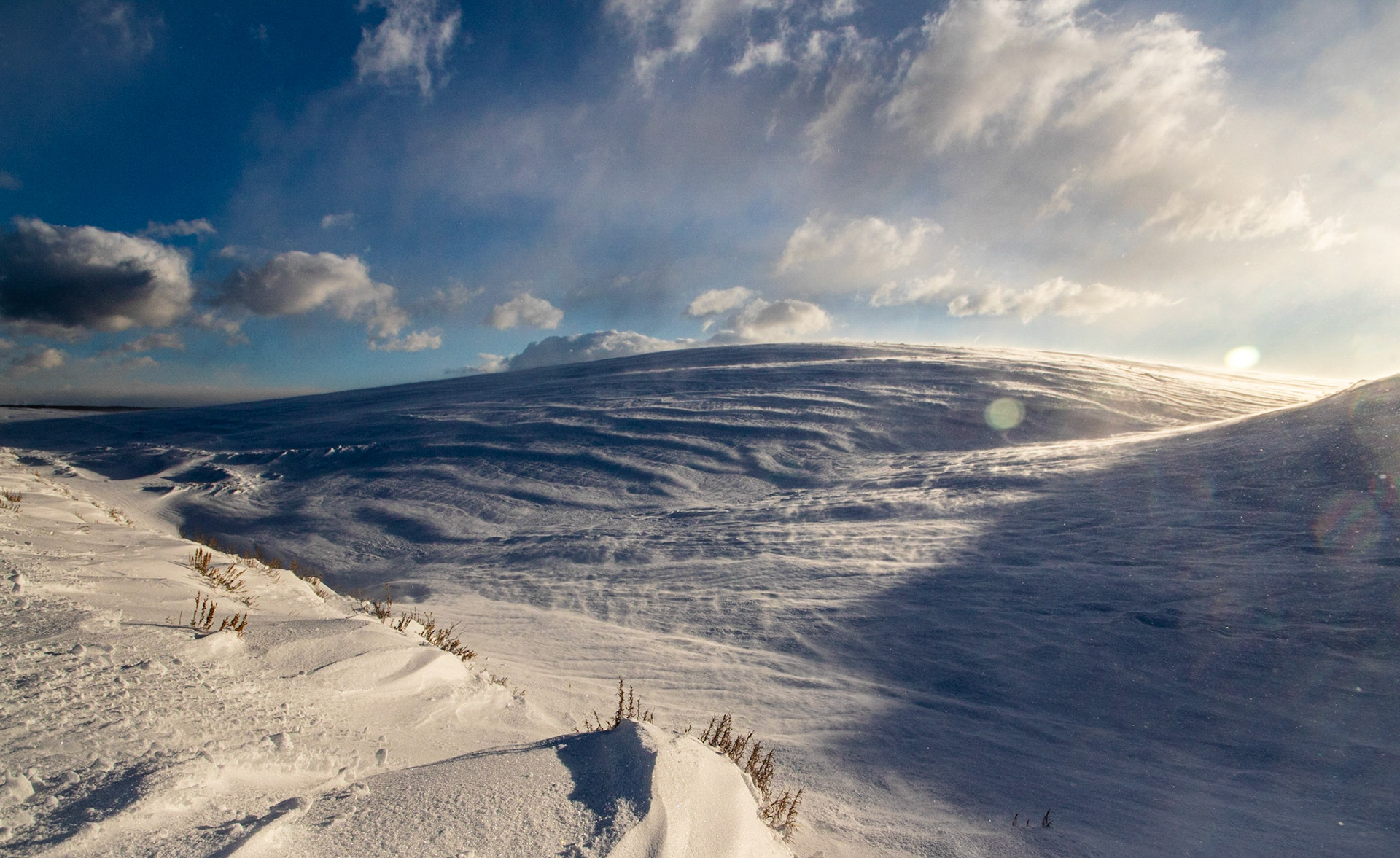
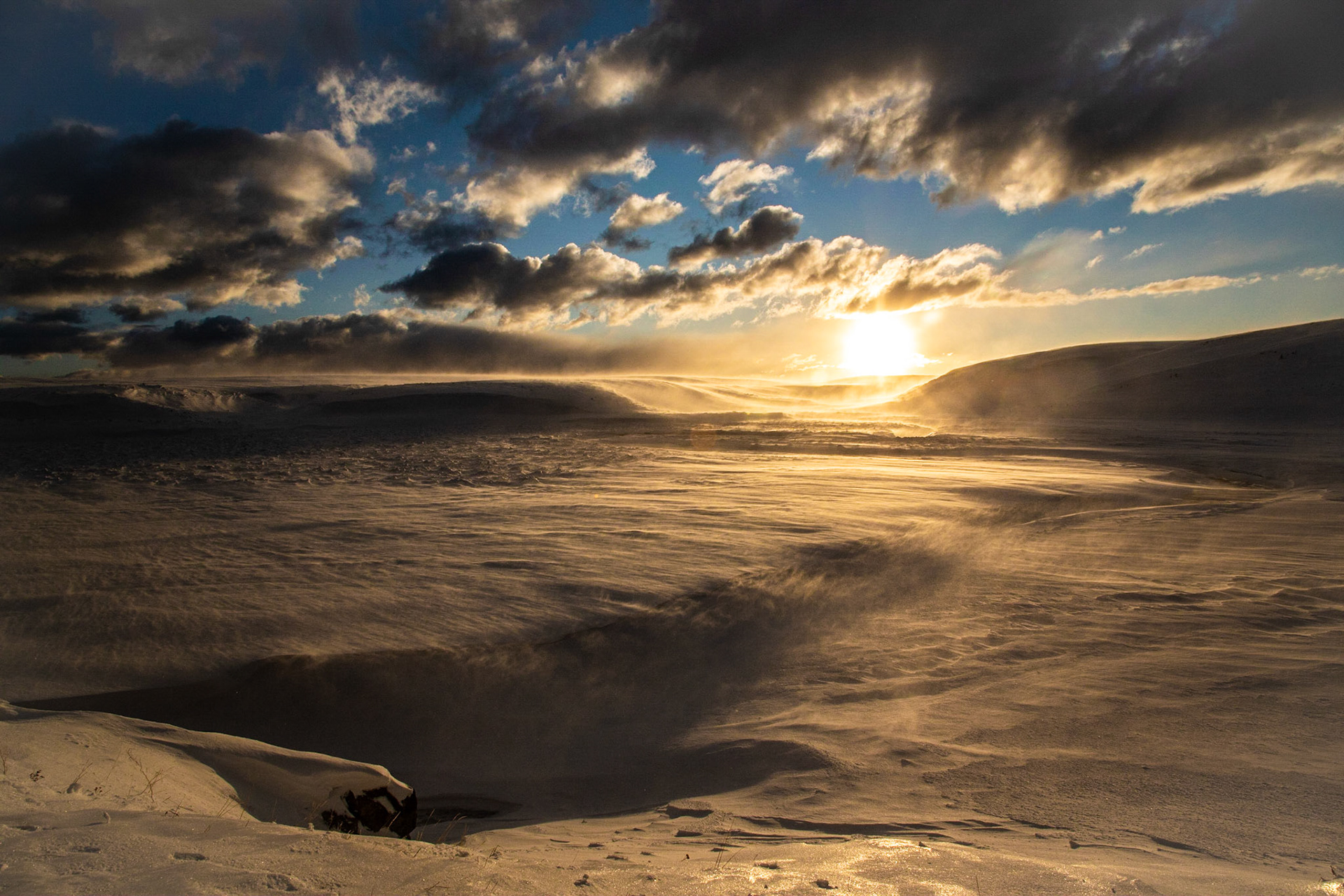
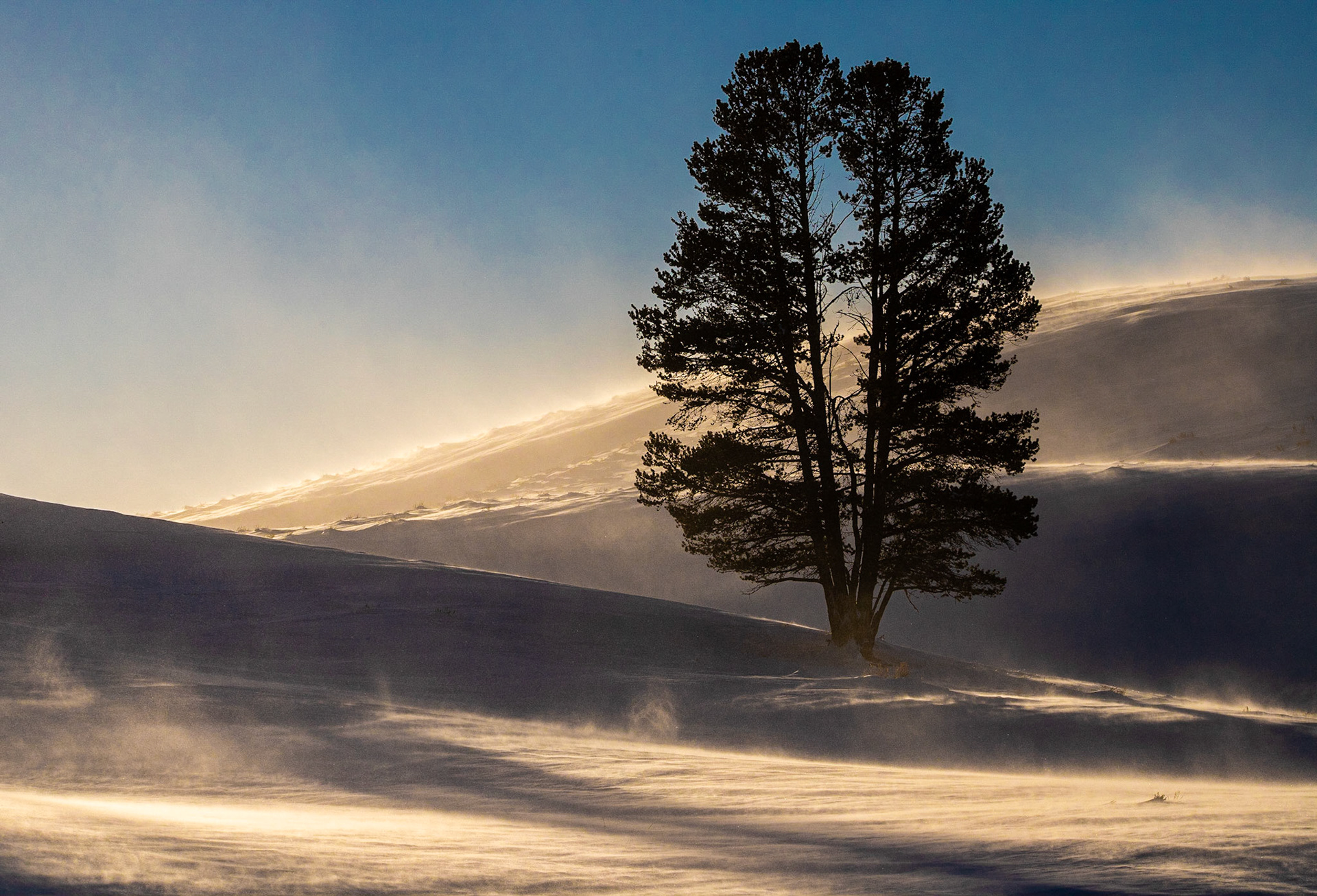
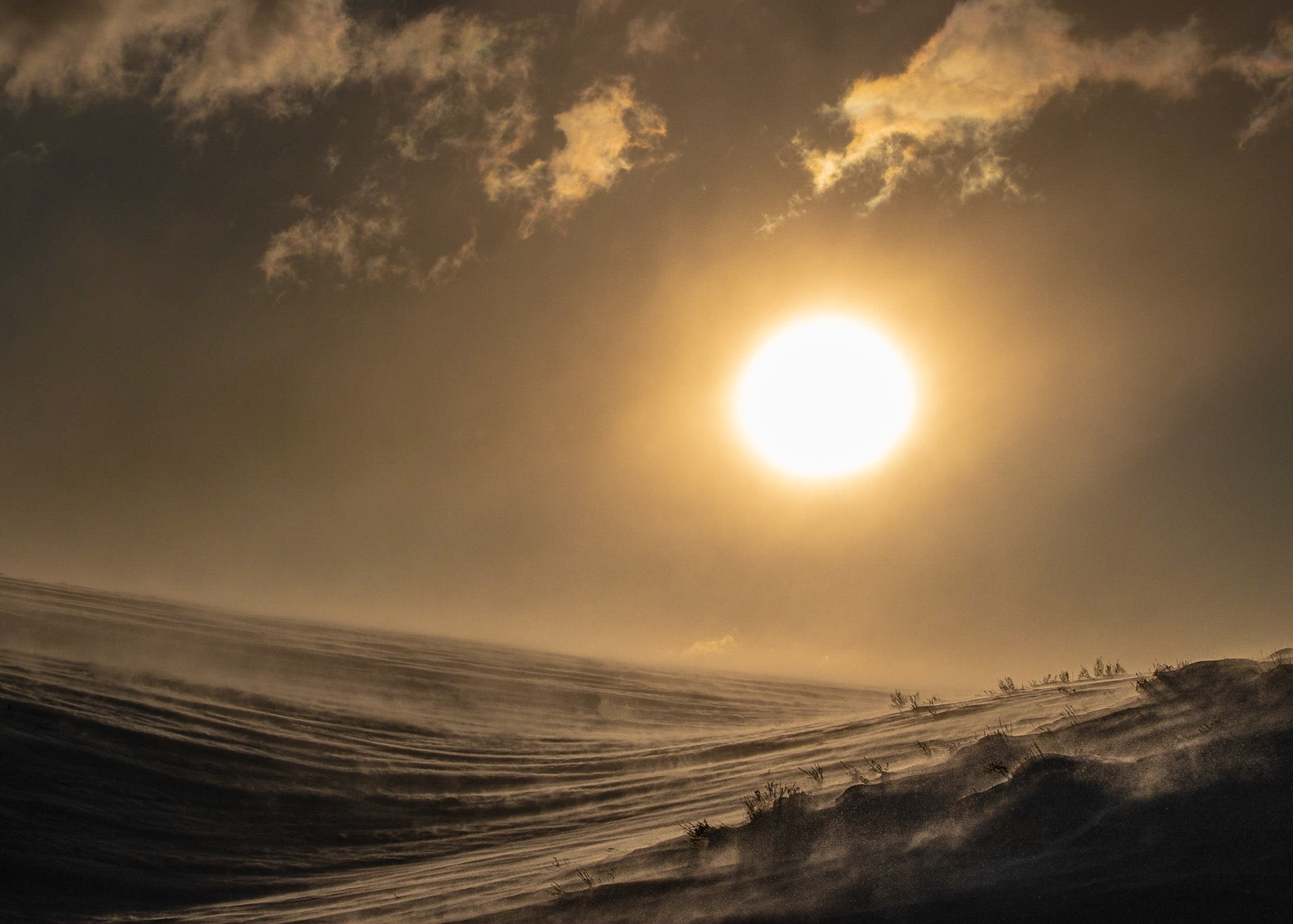
Otters
Few animals can claim to be more playful than the otters. Otters seem to delight in putting on a show, and they also seem to enjoy a good chase. This was the only animal that, to my eyes at least, seemed downright comfortable in this frozen landscape.
We glimpsed one otter in the Lamar River as it quickly popped its head out of the water for a look around. It moved downstream gradually, peeking out occasionally to make sure we were still following it. I have to say at this point that we had tracked it a good kilometer from the car through snow that went up to our knees, and yet the best view we had gotten of the critter was a wet nose with whiskers. I trekked back to move the car a little closer and grab my gloves; I had forgotten them in the excitement of seeing the otter, but I also noticed their absence after standing by the river holding my camera poised for half an hour. Besides, it looked like we had seen all we were going to see - the otter had not appeared for the last half an hour.
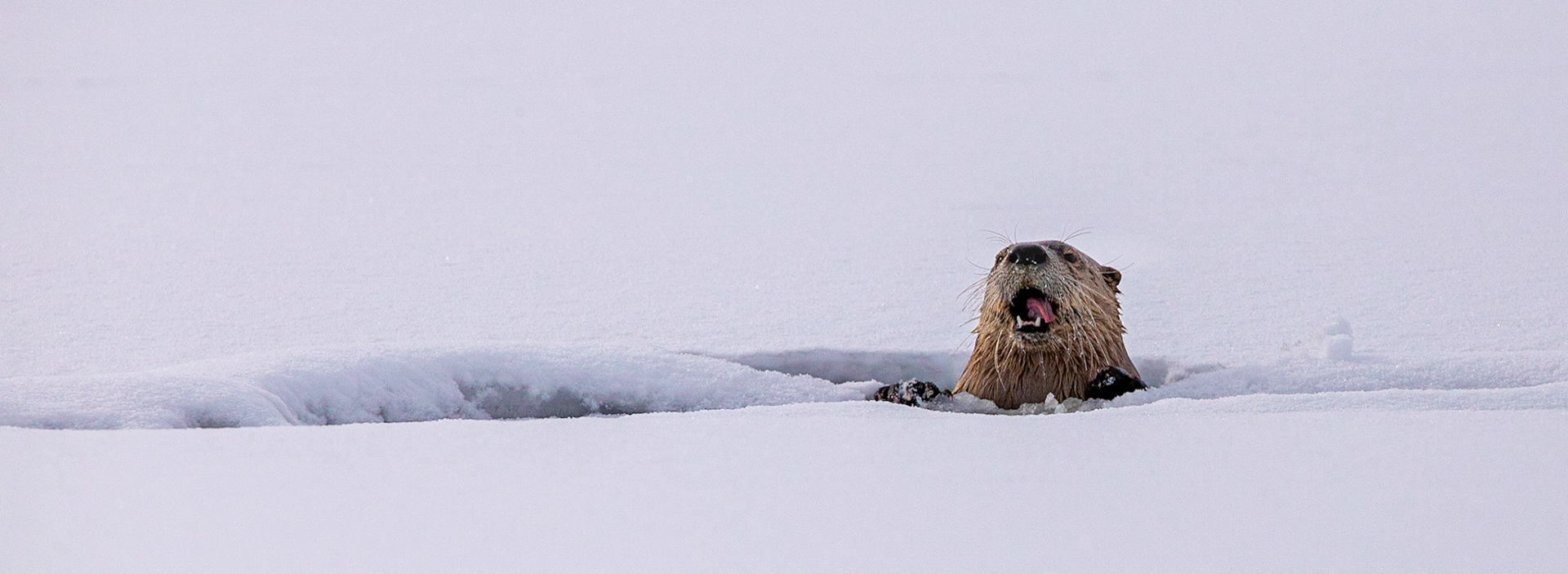
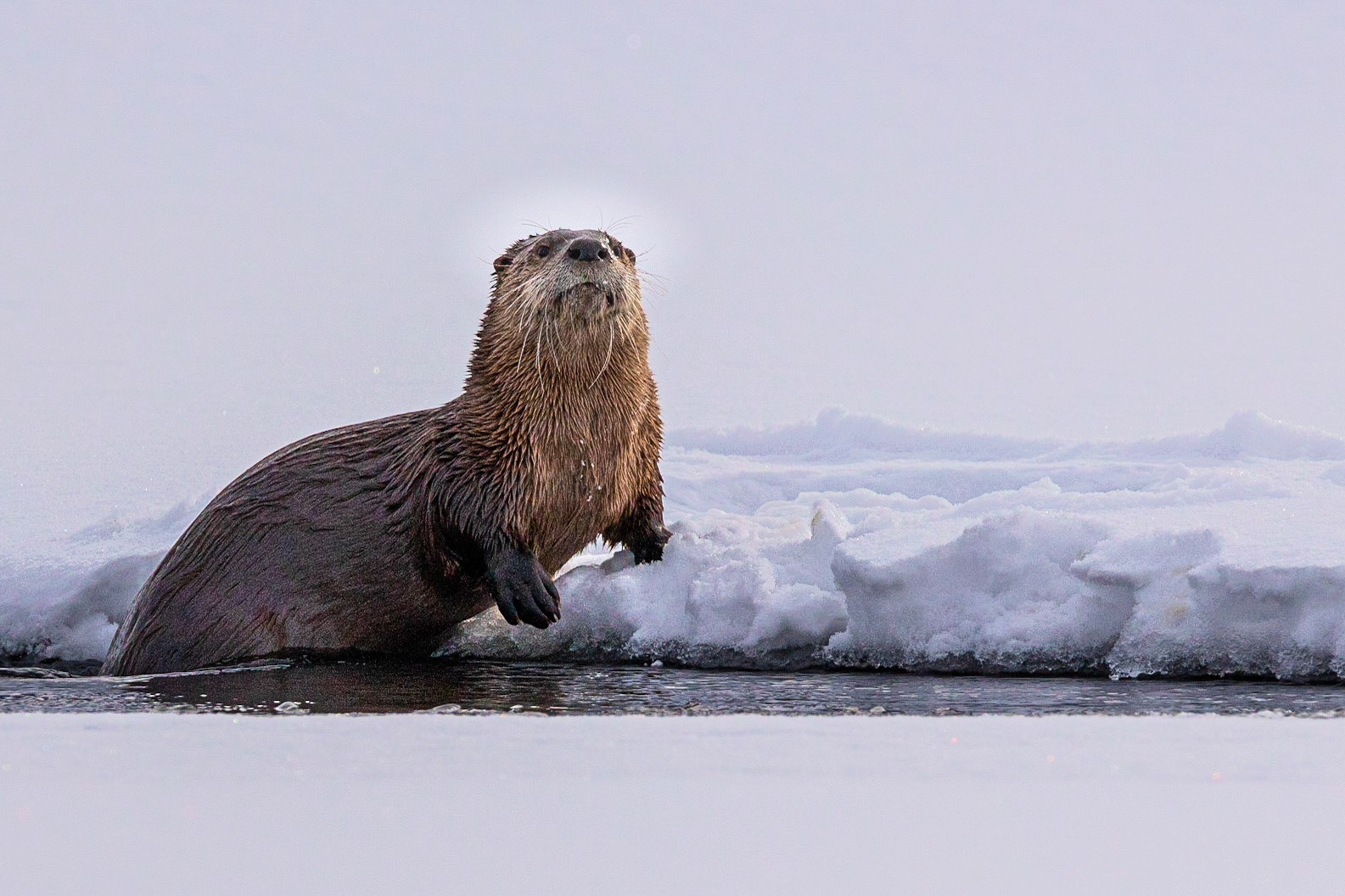
As I neared the spot again in the car, I saw more photographers set up to watch. Dhvani urged me to run the two hundred meters from the road to the spot in case there was a show going on, and I reluctantly took off. Maybe I could get more pictures of its nose, I thought. About halfway there I realized how difficult running through that snow really was - I was completely out of breath. Just as I slowed to a brisk walk, lungs heaving frozen air, the photographers got up and started shuffling again. It seems the otter had in fact appeared but still only showed its nose. Still, this gave us hope that we might yet see more of it with a little patience.
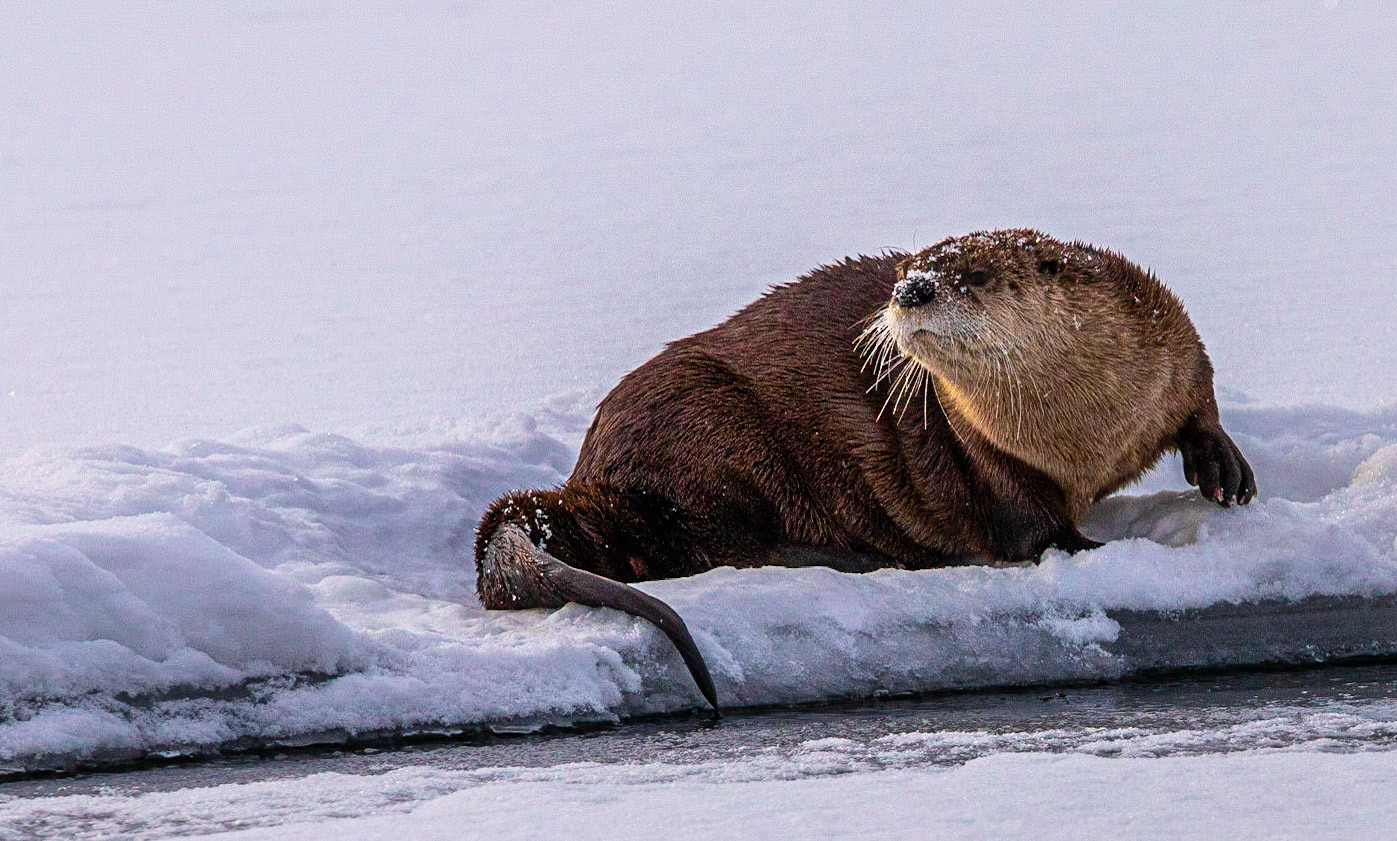
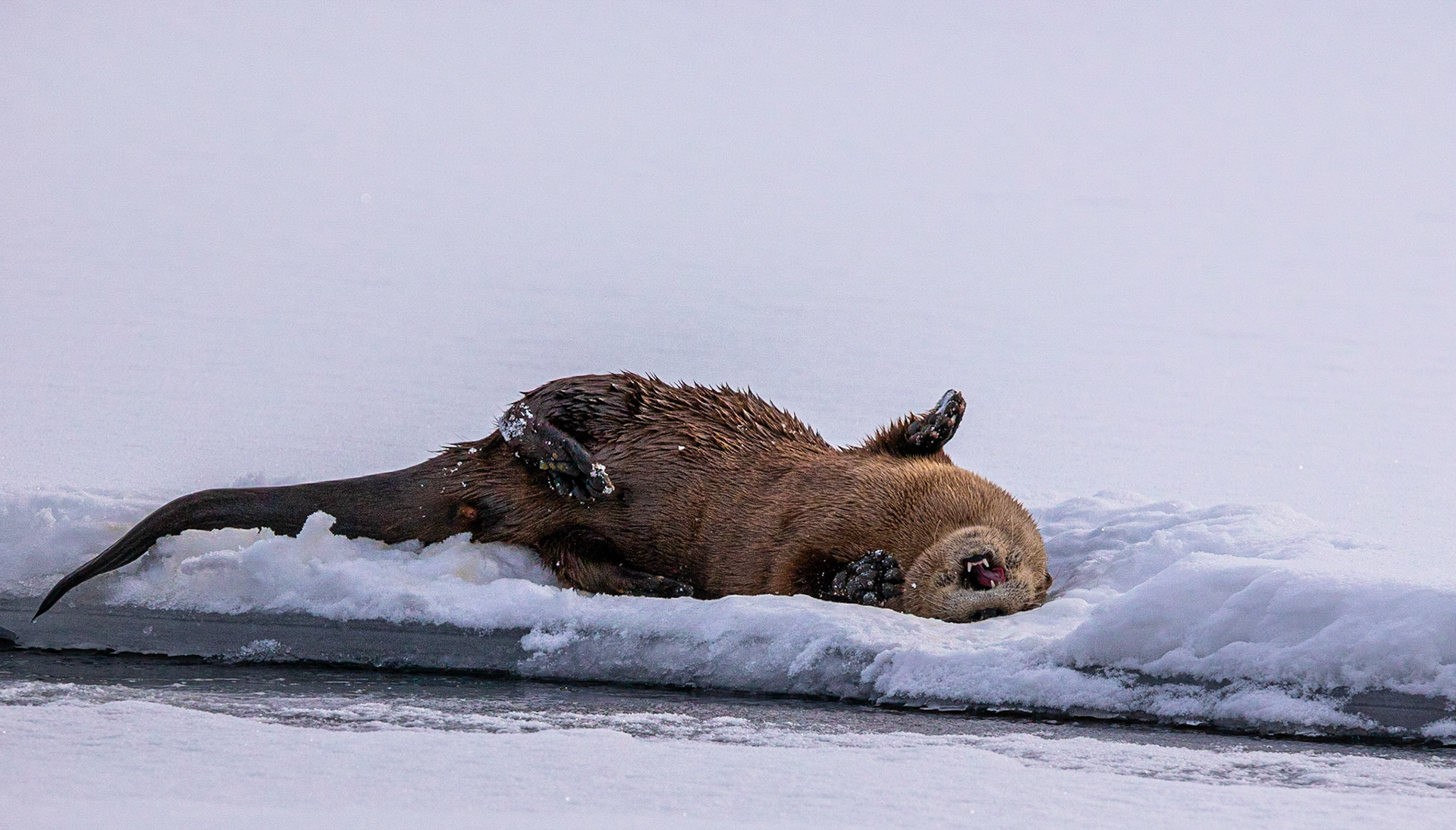
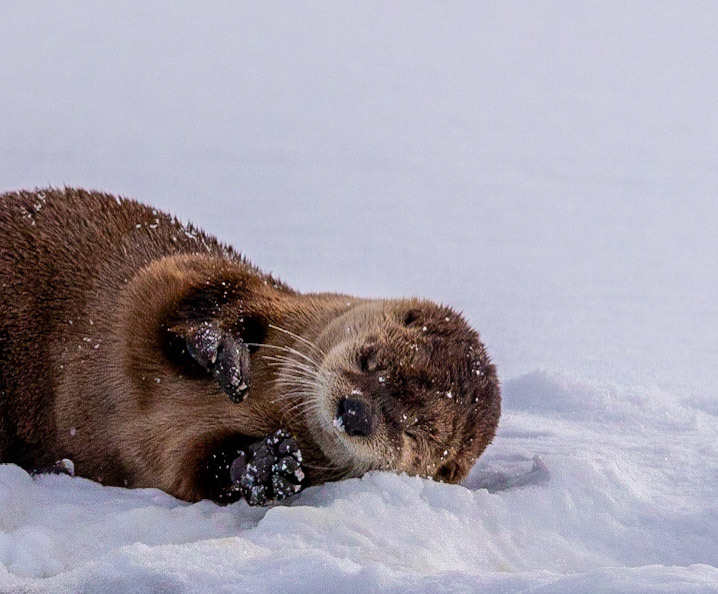
Sure enough, ten minutes later, a whiskered nose poked out of the dark river waters not far from where we stood. After a quick look around, its owner emerged fully from the river and rolled in the snow, not unlike a dog enjoying a stinky mud bath. Every now and then it would look up again to make sure we were still watching. It slunk back into the river and came out again a few times to our amusement, then finally disappeared under the ice for good. Though I would have liked to stay and watch it a bit longer, the shadows were growing long and the (even more) frigid evening air was settling in, so we retreated back to the cabin for hot chocolate. I can't tell you how nice it is to hold your frostbitten hands up against a warm mug.
Ermine
I wish I could say I really saw an ermine in the park, but the truth is closer to "I glimpsed a flash of white and black that had the characteristics of an ermine." I never got an image of one, despite my best efforts and several hours of tracking. Yes, these things are even quicker than me, if you can believe it. But then, what do you expect from a critter who has to catch the speediest prey in the park while avoiding the wiliest of predators?
If I were to have seen one, I would have seen a weasel-like critter with an all-white body except for a touch of black at the tip of its tail. They are solitary and apparently voracious monsters, able to dispatch prey much larger than themselves (like snowshoe hare!).
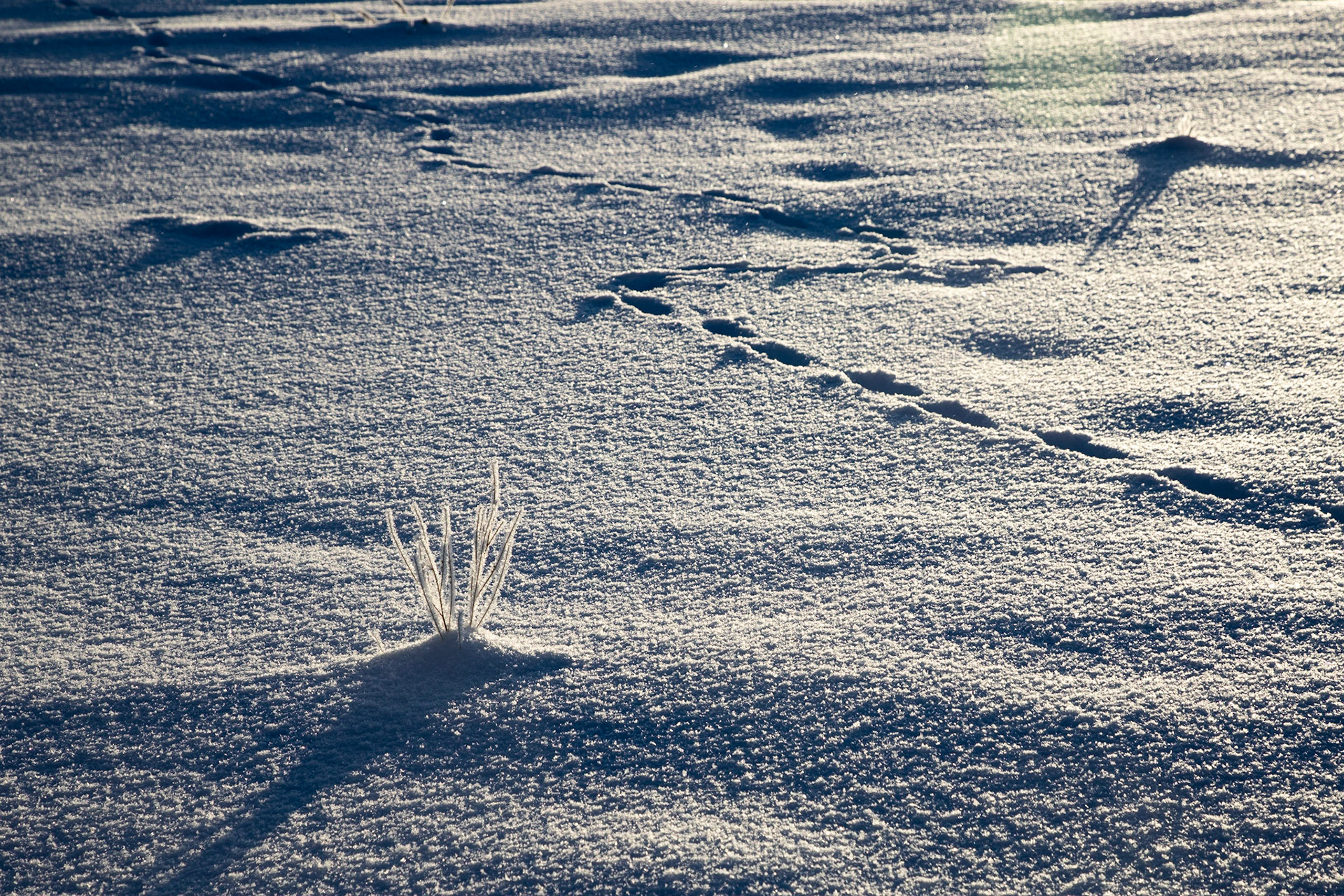

They love to zip around on the snow, disappearing into little burrows and reappearing many meters away to confuse their stalkers in their never-ending search for burrowing rodents to eat. We tracked several ermine, often times a great distance, only to be rewarded with not a thing. In fact, I am starting to think that when fellow wildlife enthusiasts in the park say "there's an ermine over there," in response to "what did you see," it's code for "nothing at all, but I don't want to look silly staring at nothing."
Grand Teton
The Tetons are impressive, but little can prepare you for actually standing in front of them on a cold winter morning. Mist obscures the base, ice crystals glimmer with each step you take, and the bright orange beams of emerging sunlight ignite the tops of the white peaks ahead of you. A beautiful silence pervades the still air as the beasts begin to stir.
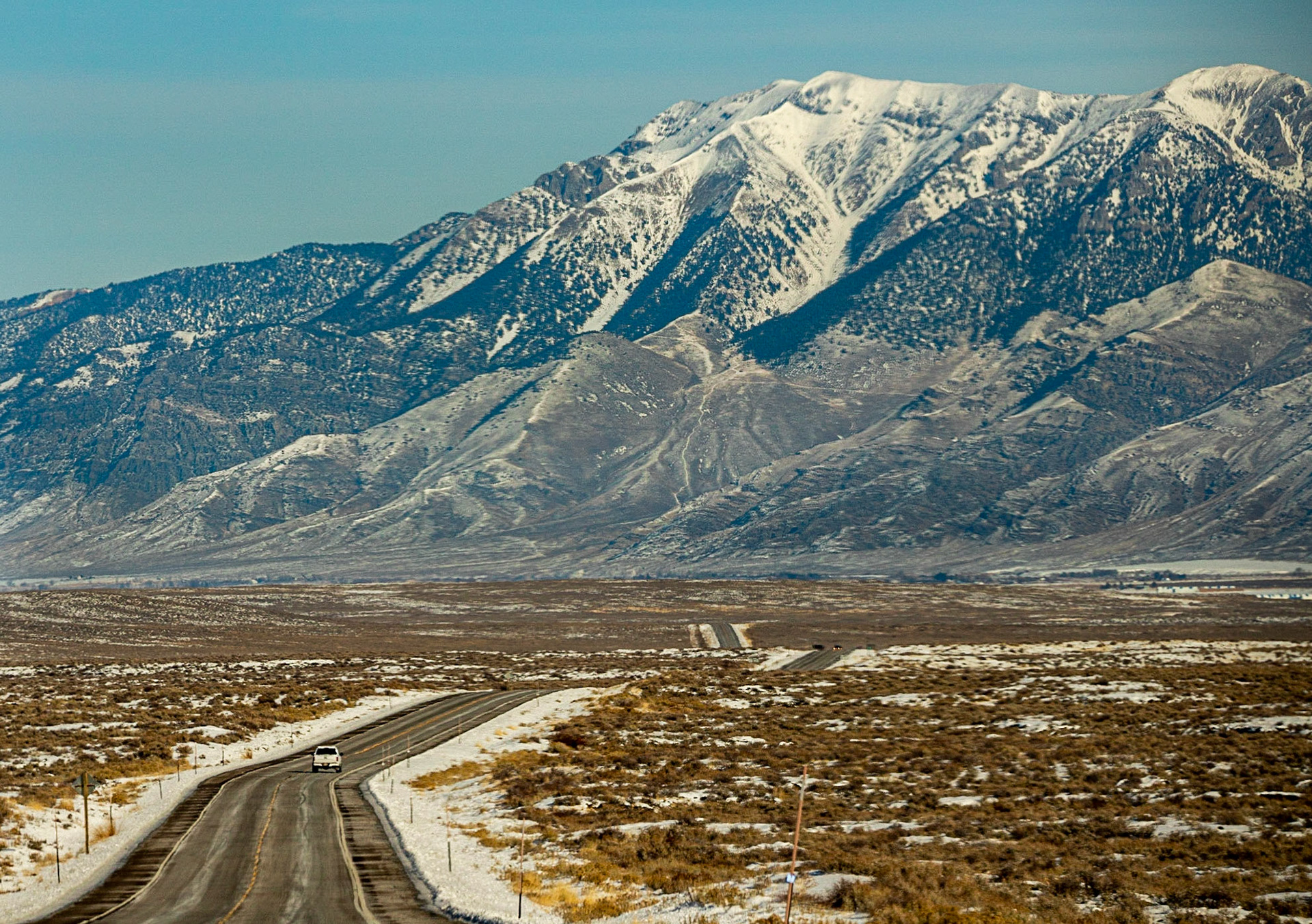
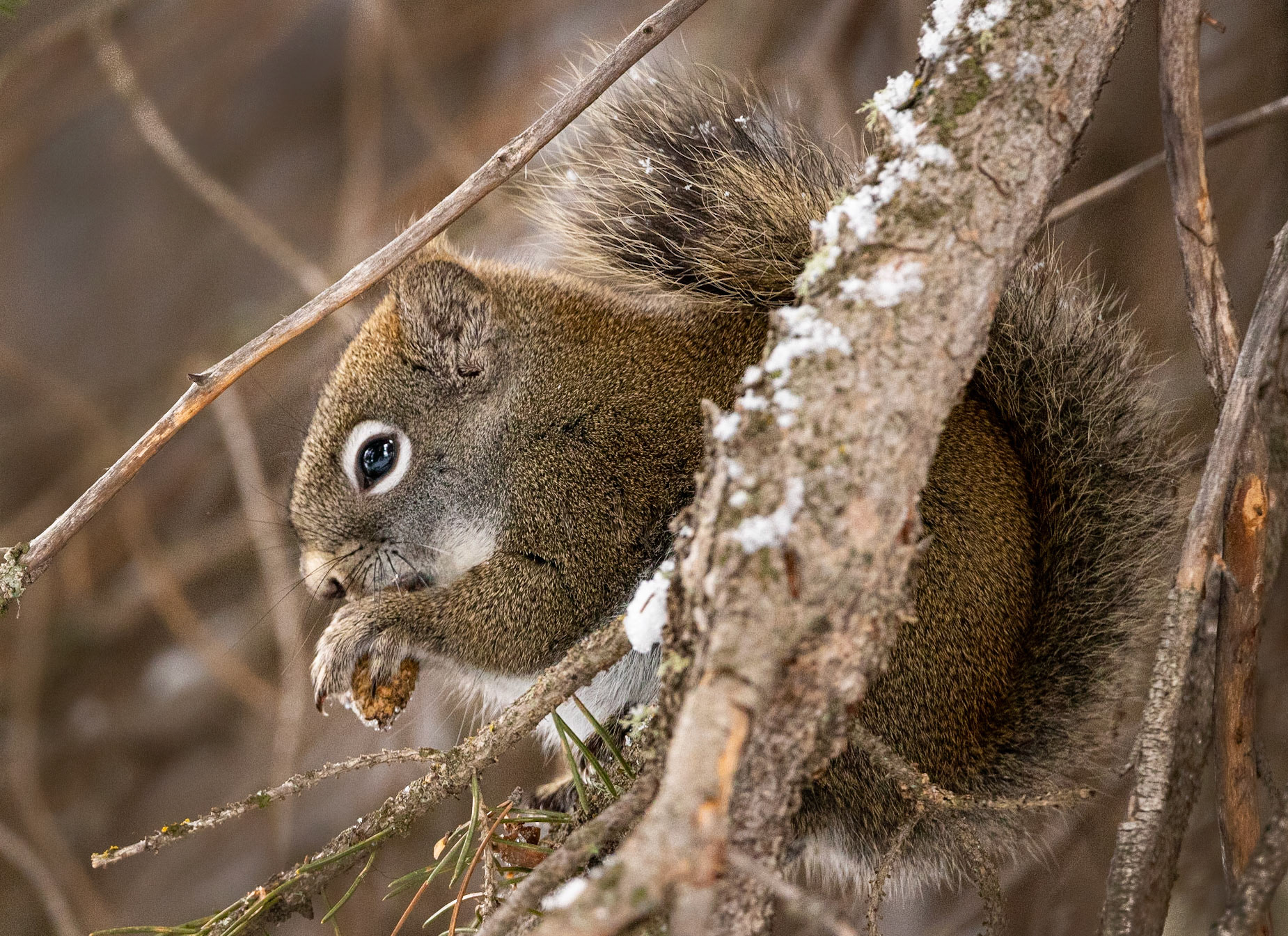
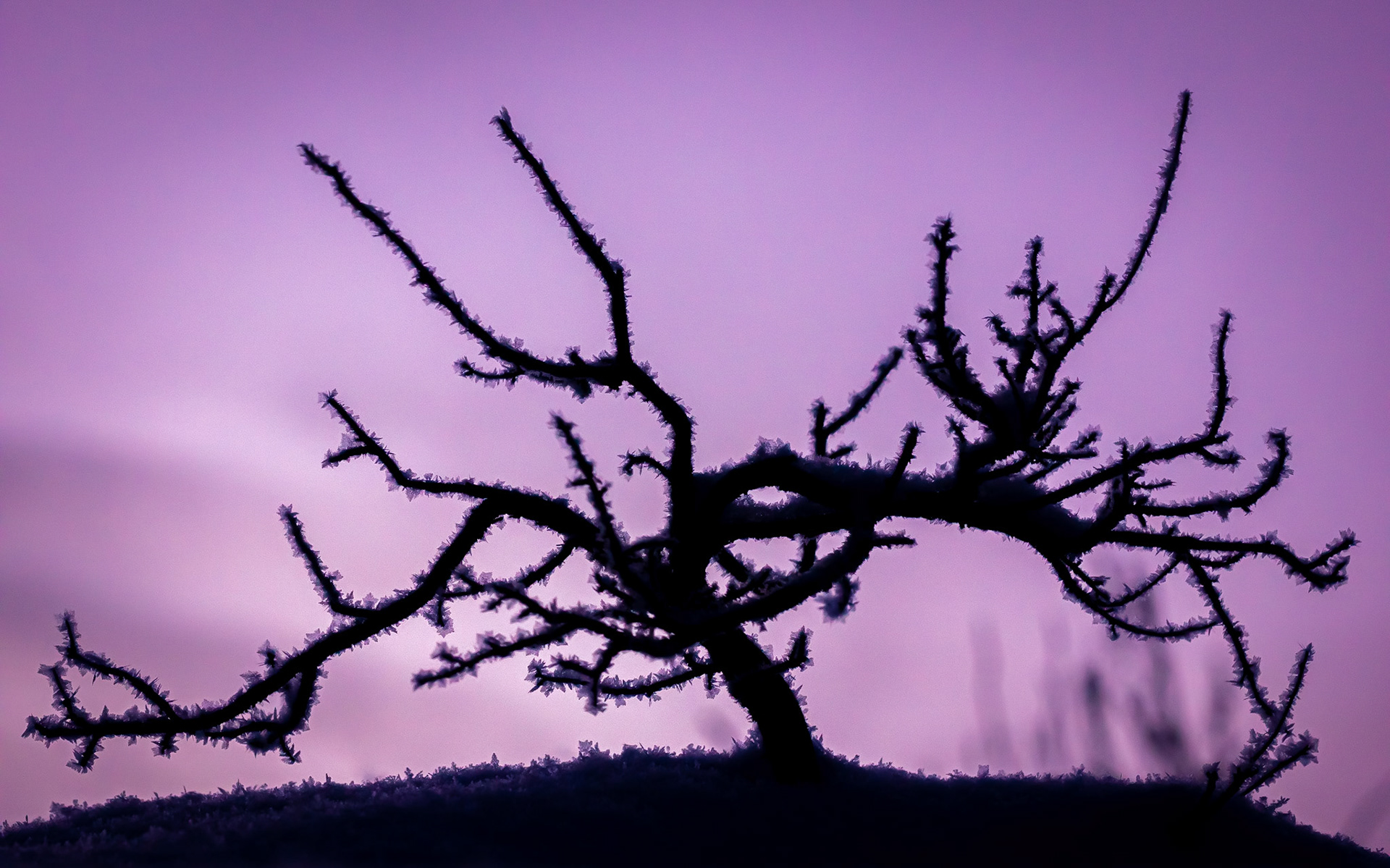
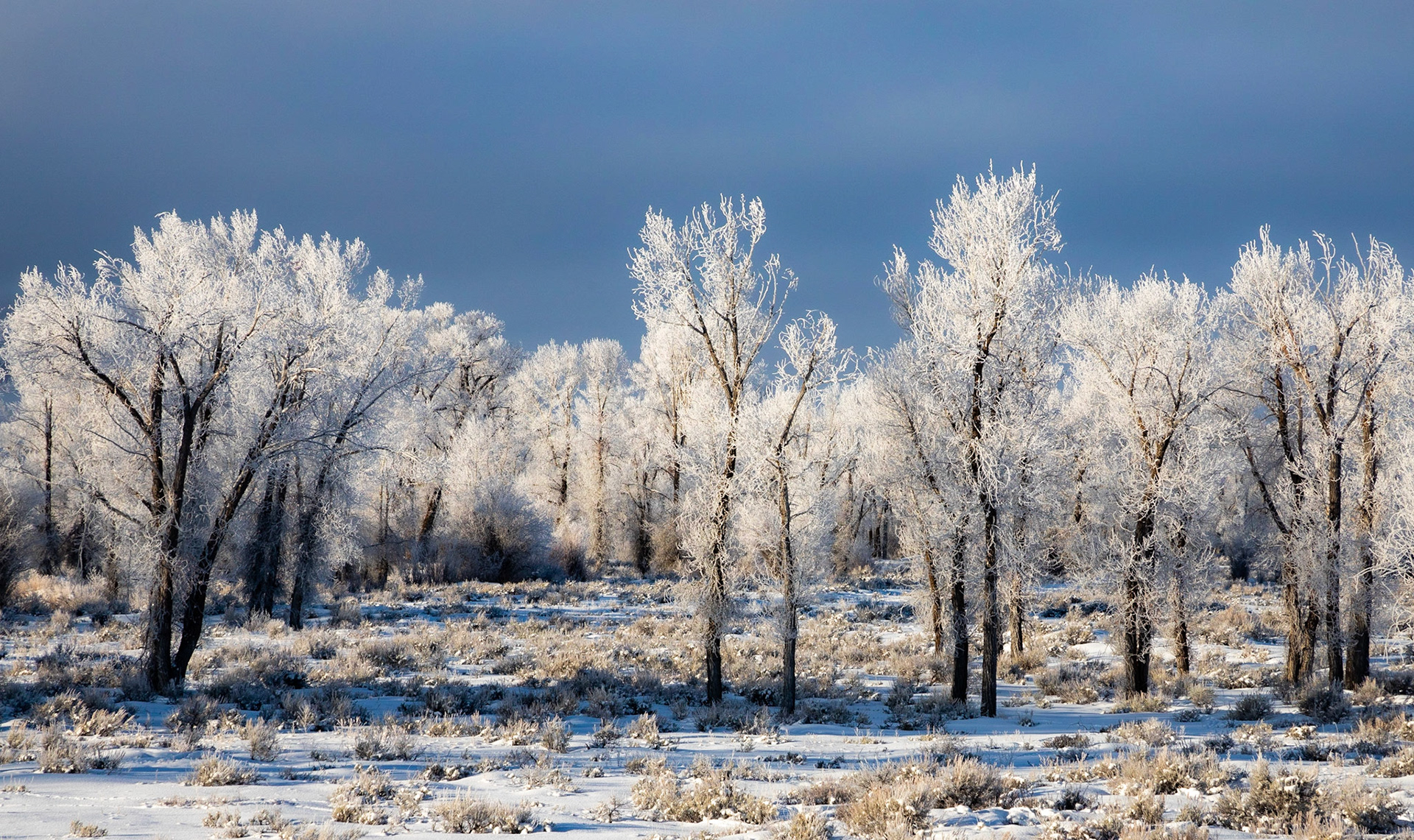
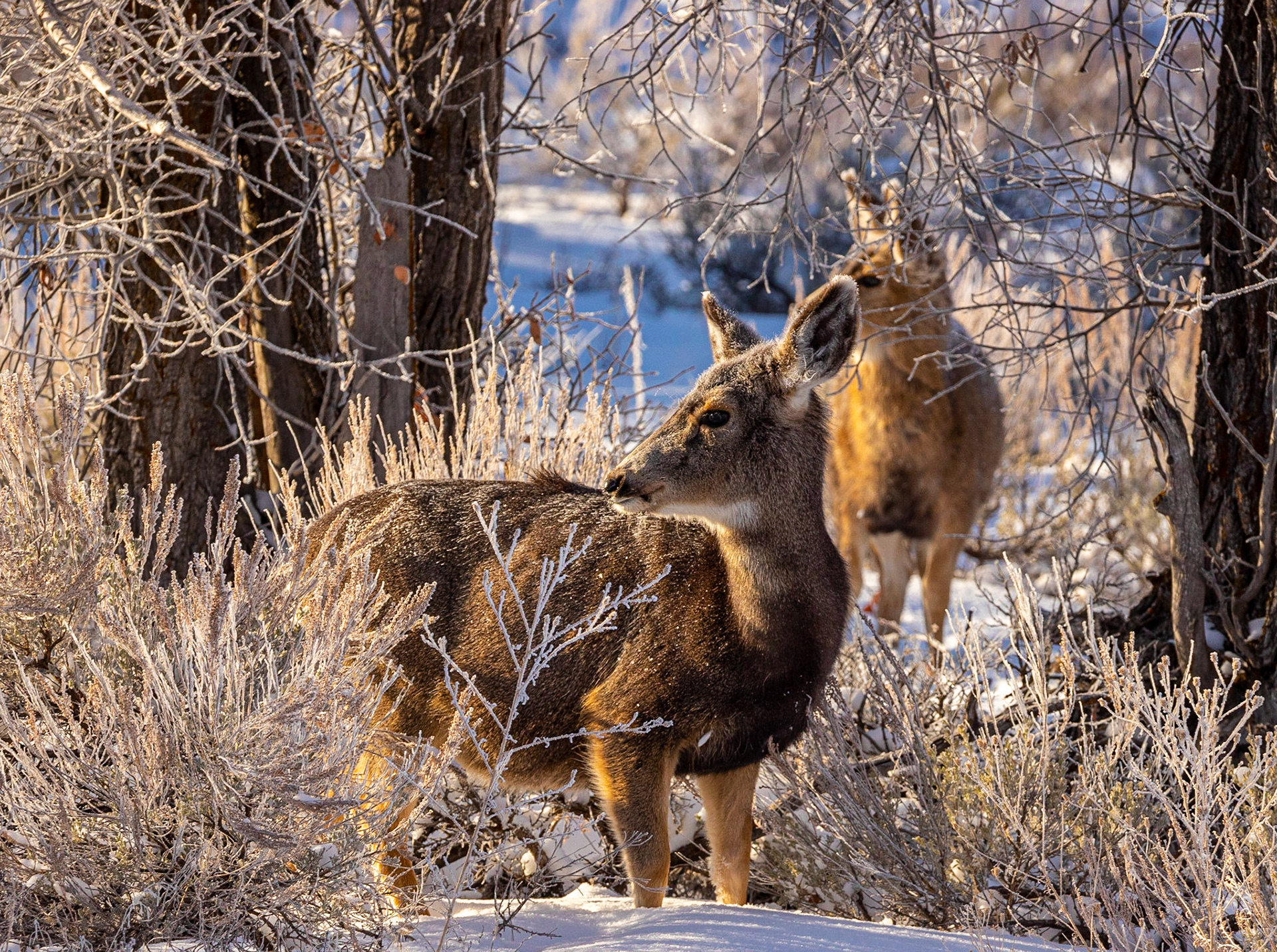
On this particular morning, the temperature reached a new low for us: -12 F (-24 C). This is the sort of cold that crawls into your bones and doesn't leave, not even once you've sprinted back into the car with the heat blasting to hide (and sob) under your sleeping bag. The moisture from my breath froze just as soon as it left my mouth, and at one point my face actually froze to my camera. I do not kid.
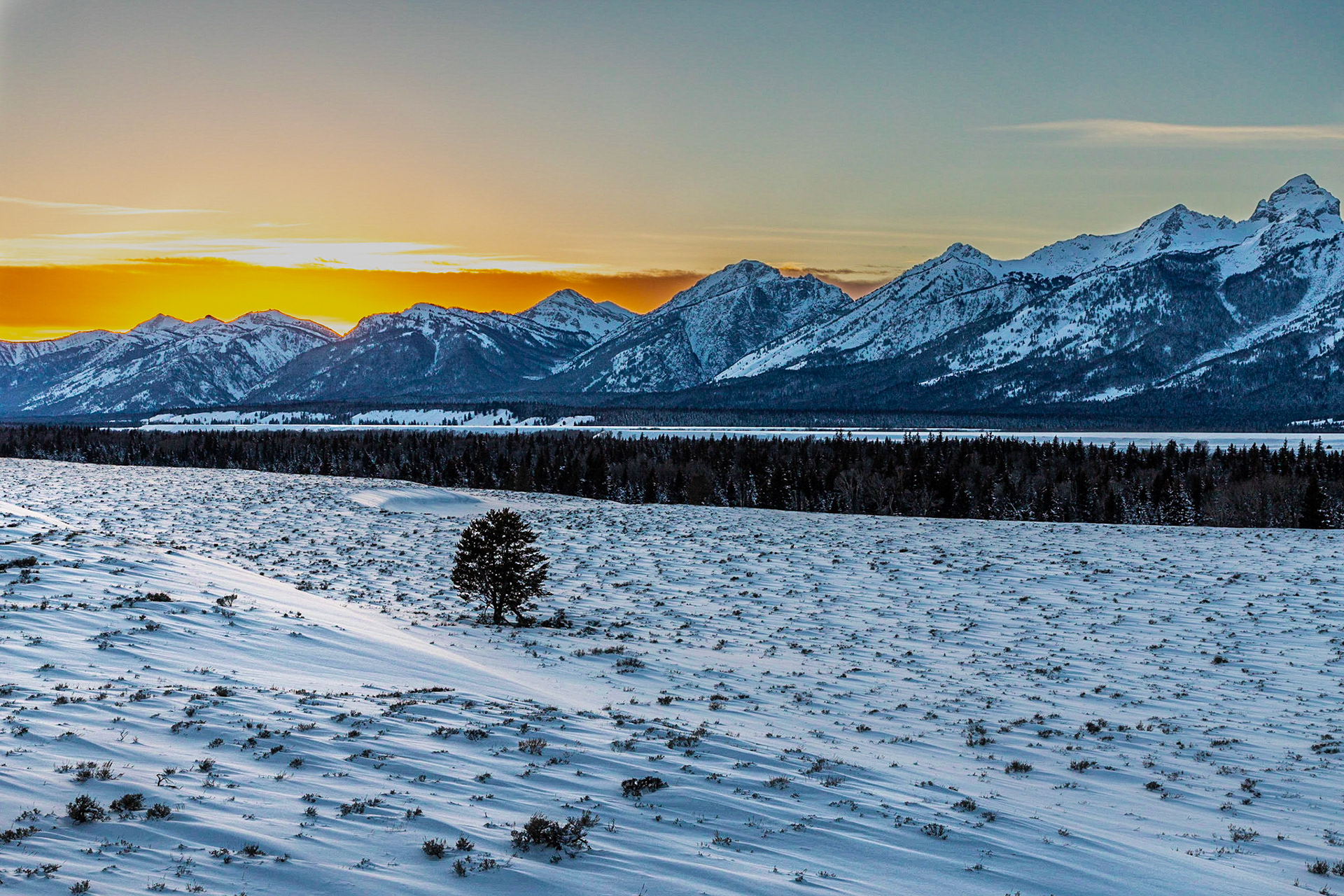
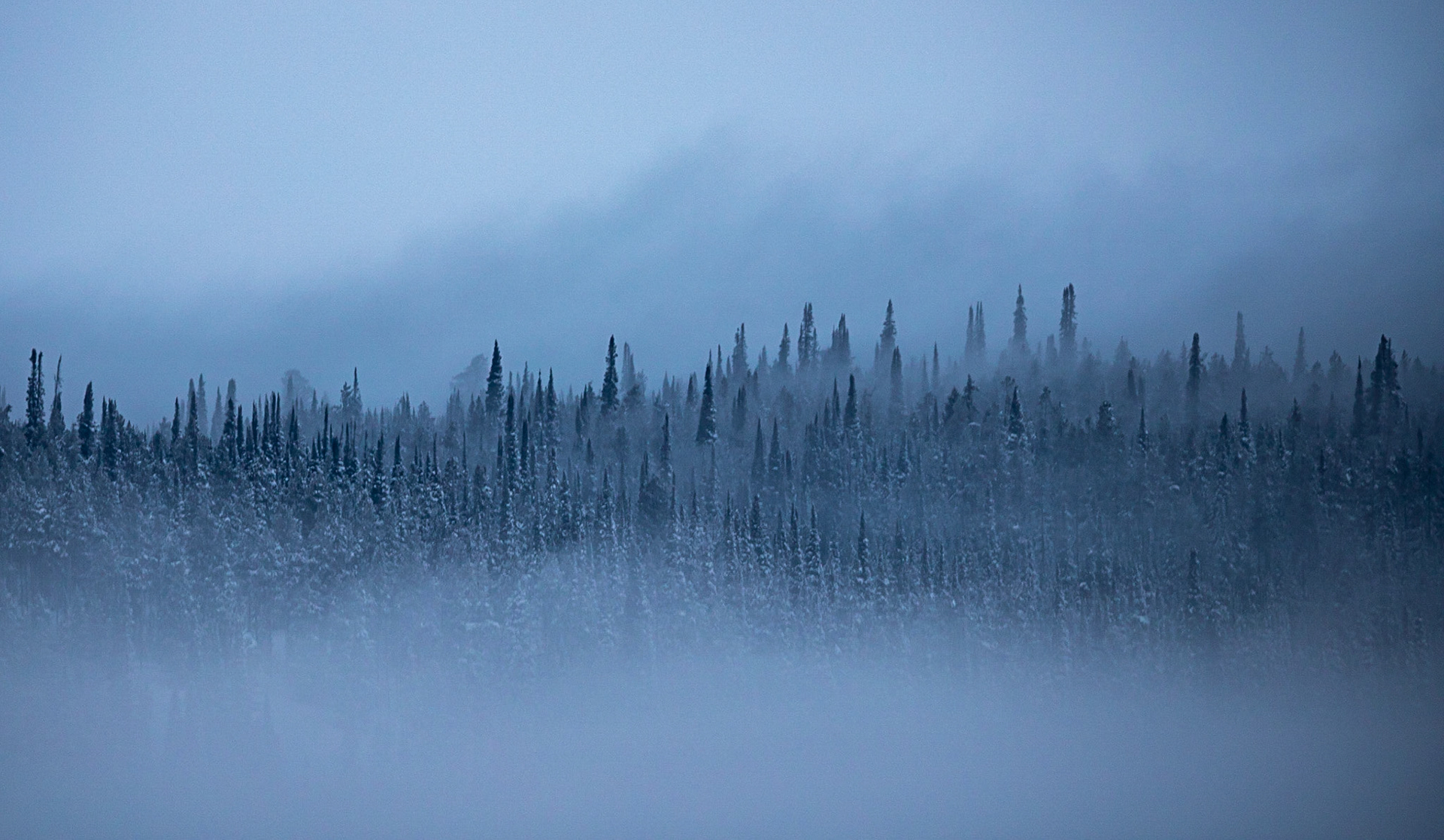
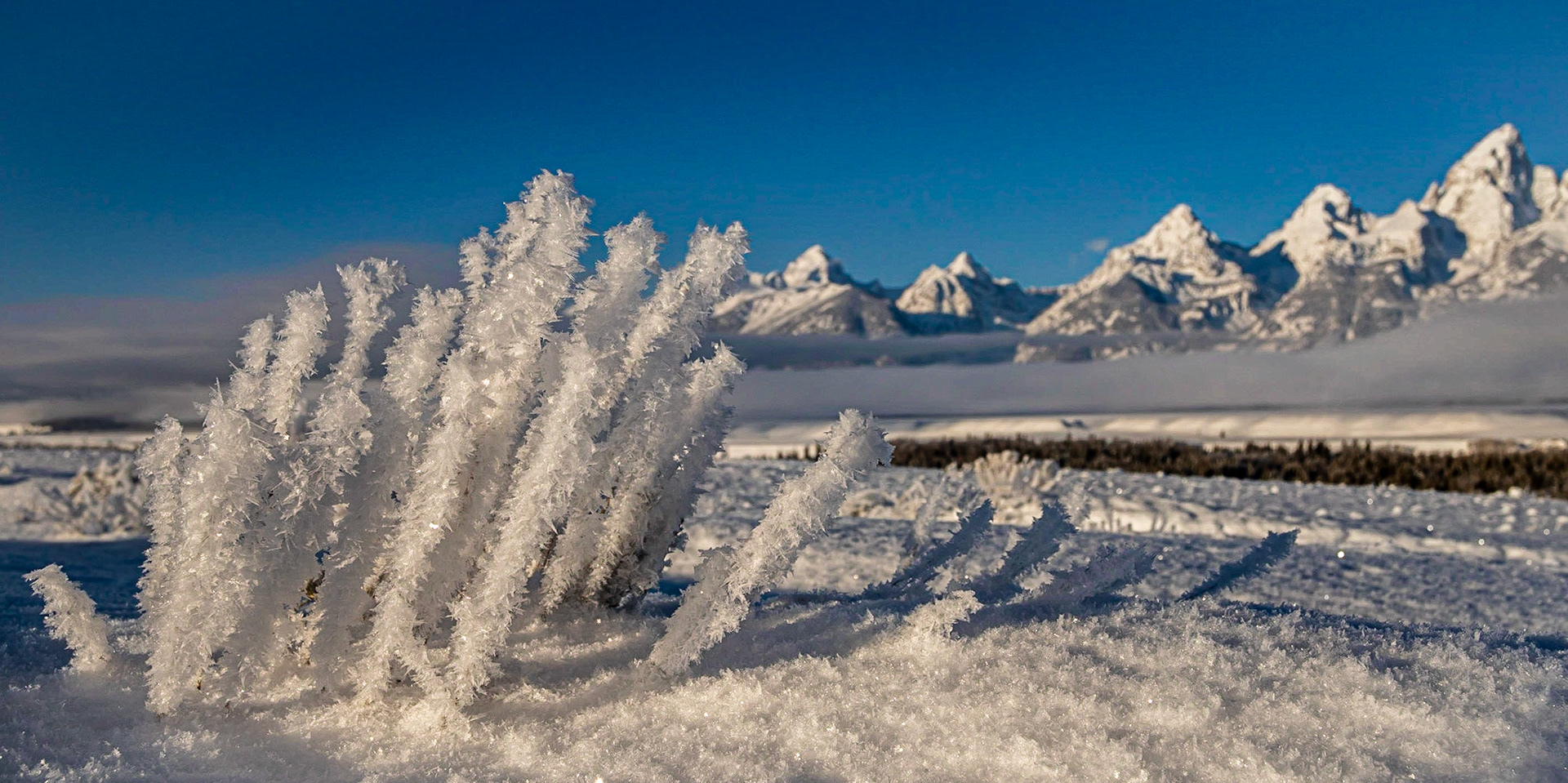
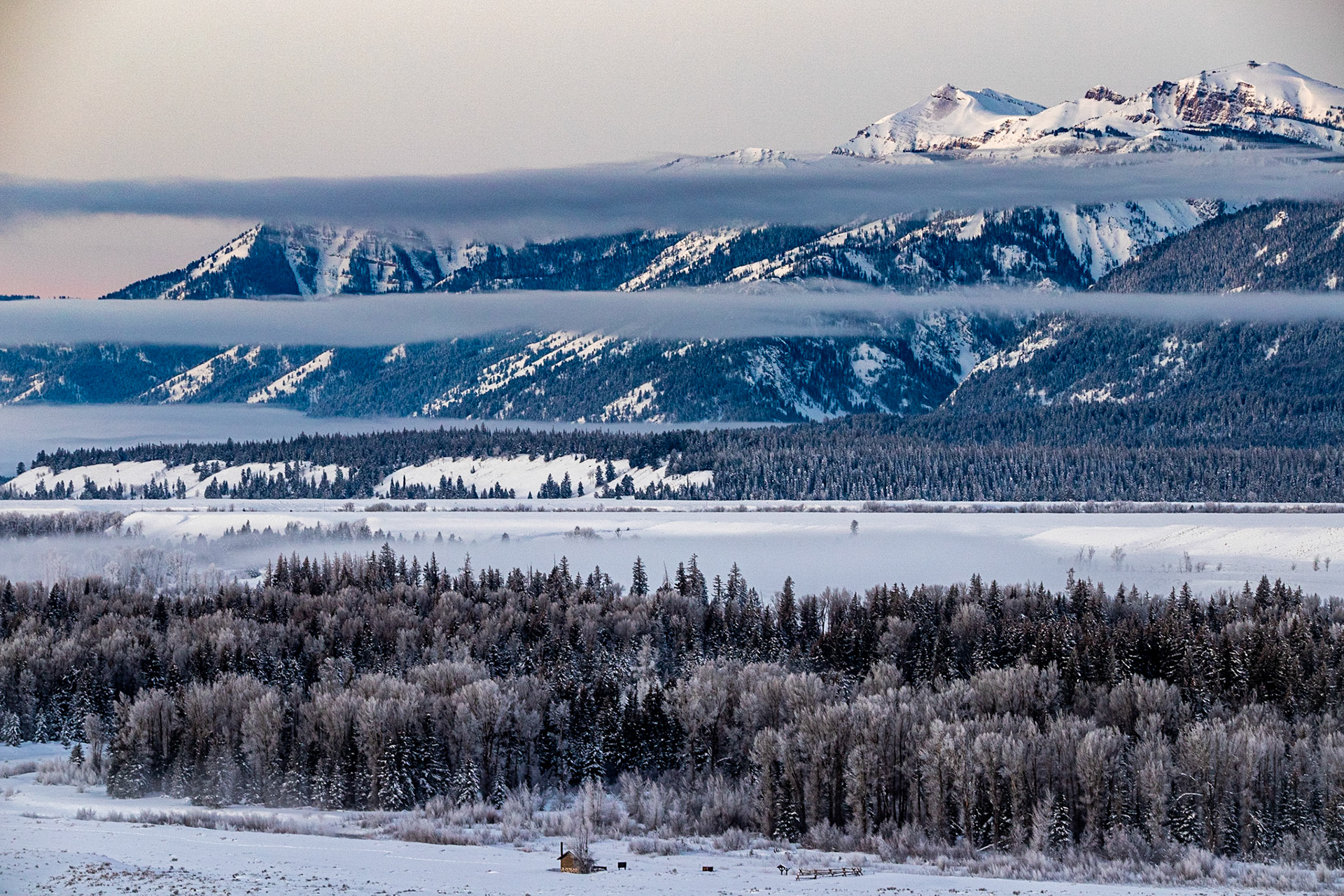
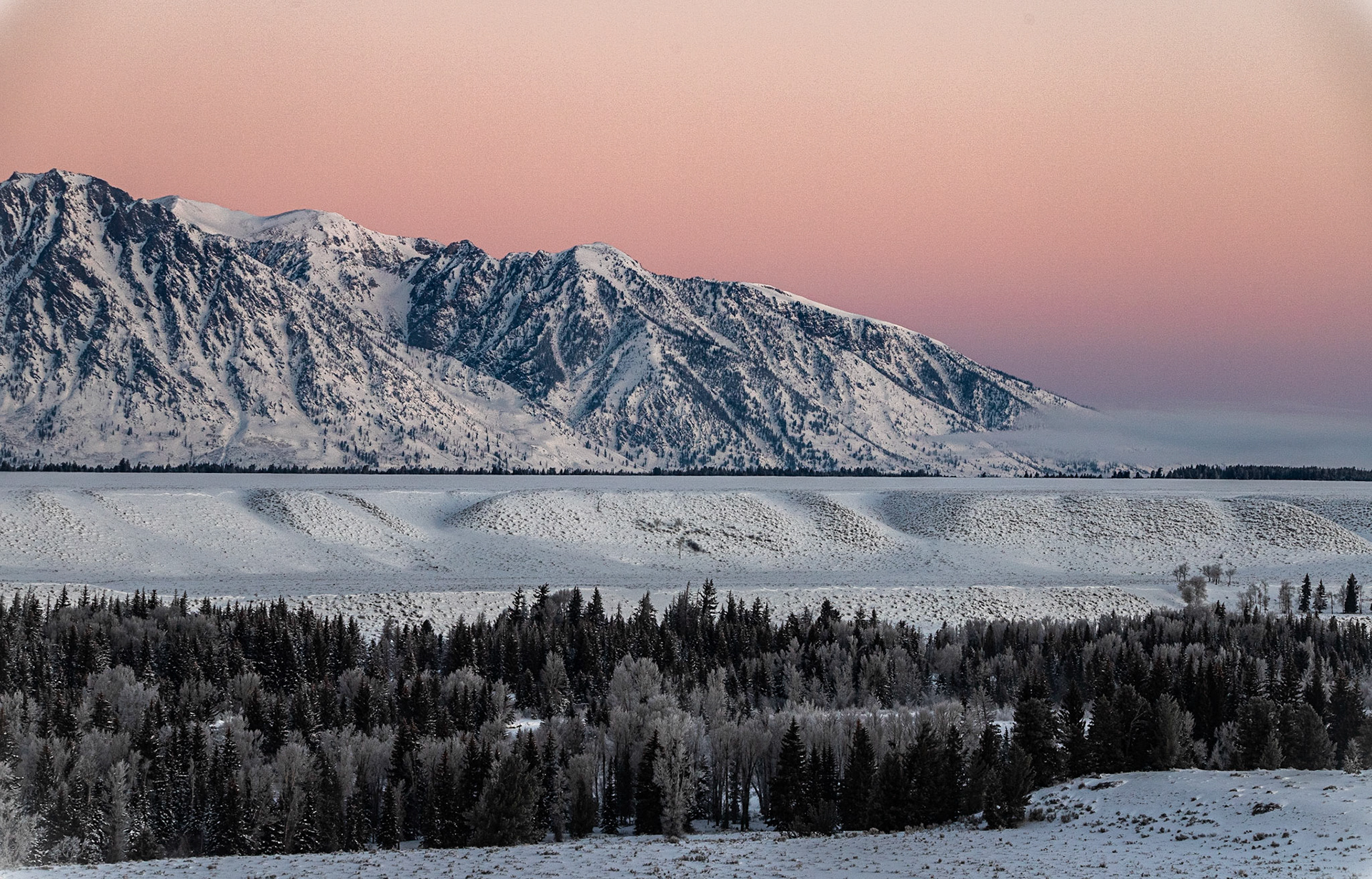
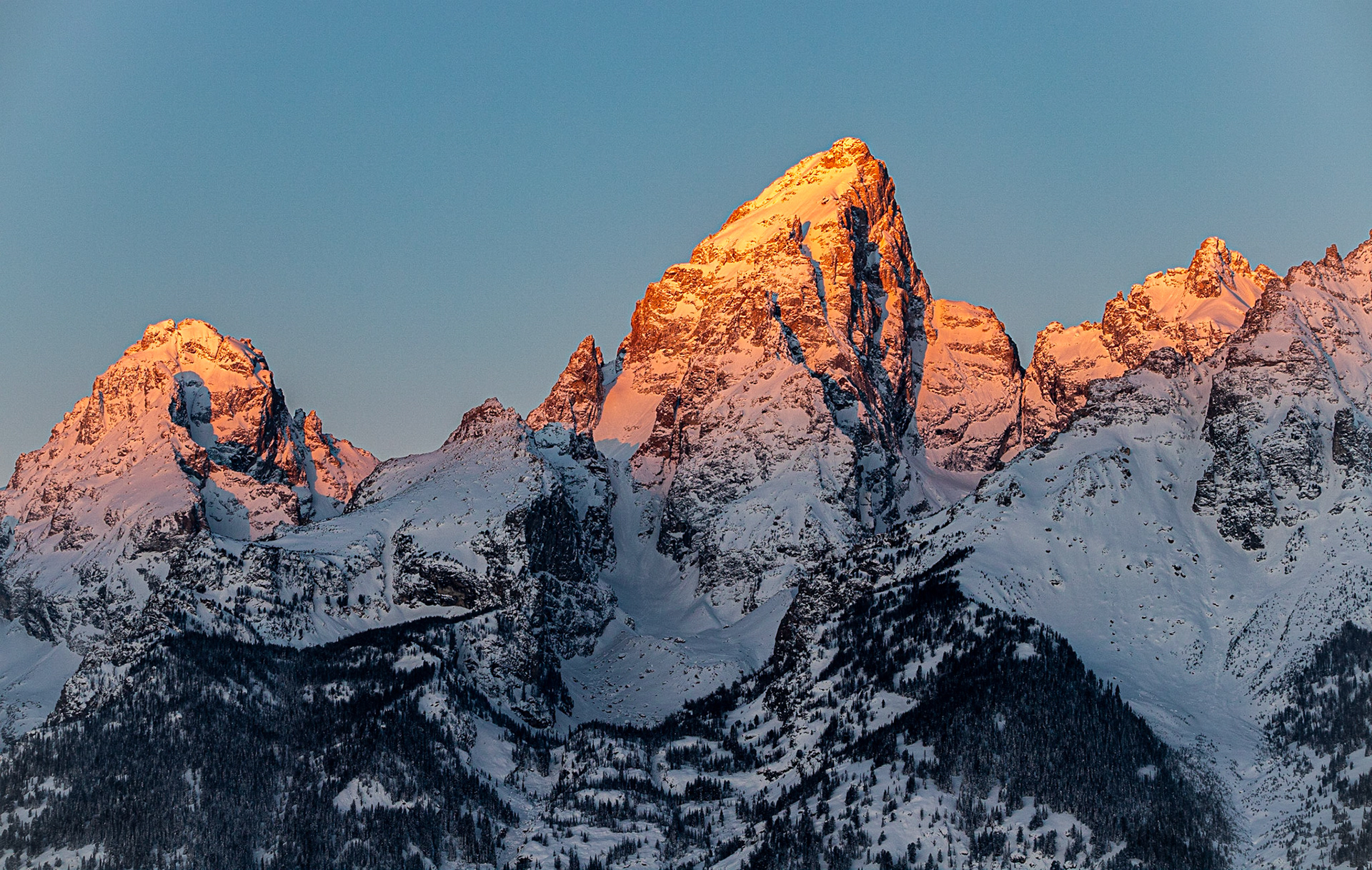
Clouds obscured most of the mountain range as we arrived. We still set up shop, hoping the rising sun would clear things out a bit. We were not disappointed. The inversion set in, leaving the valleys in mist while betraying outlines of the tall peaks behind them against the brightening sky. Soon we had the views we were waiting for. Unfortunately, the cold did not seem to give way in the least, so we scrambled back to the cabin for a hot breakfast as soon as the light got too strong. It sort of helped, for a little while.
Bison
You can't spend twenty minutes inside Yellowstone without running into a few of these ridiculously hairy critters. They seem to love standing in the middle of the road while staring down drivers trying to pass through the valleys. Indeed, we ran into a couple of traffic jams just because some bison decided to cross a bridge or munch lazily in the middle of the pavement for a while.
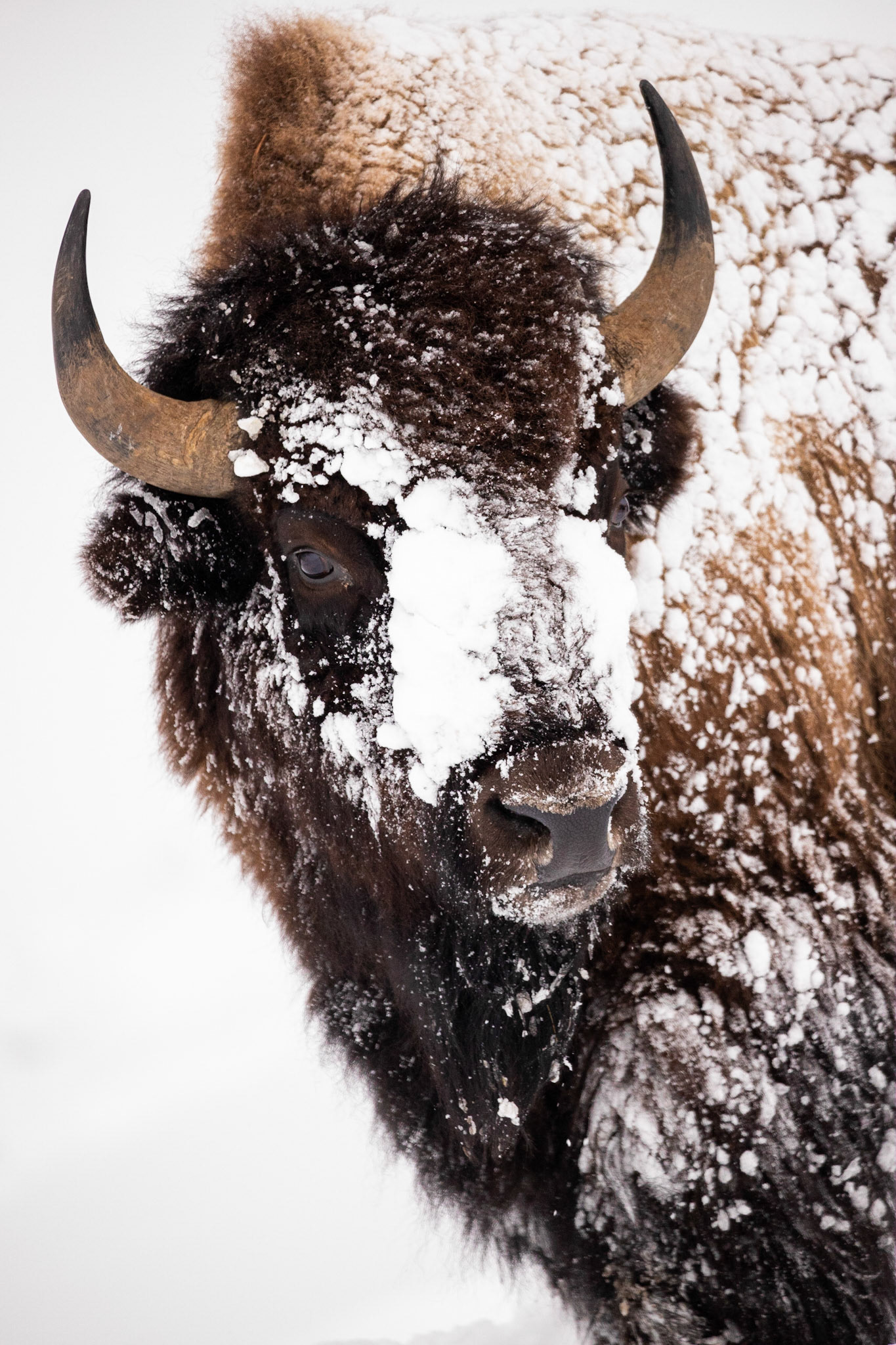

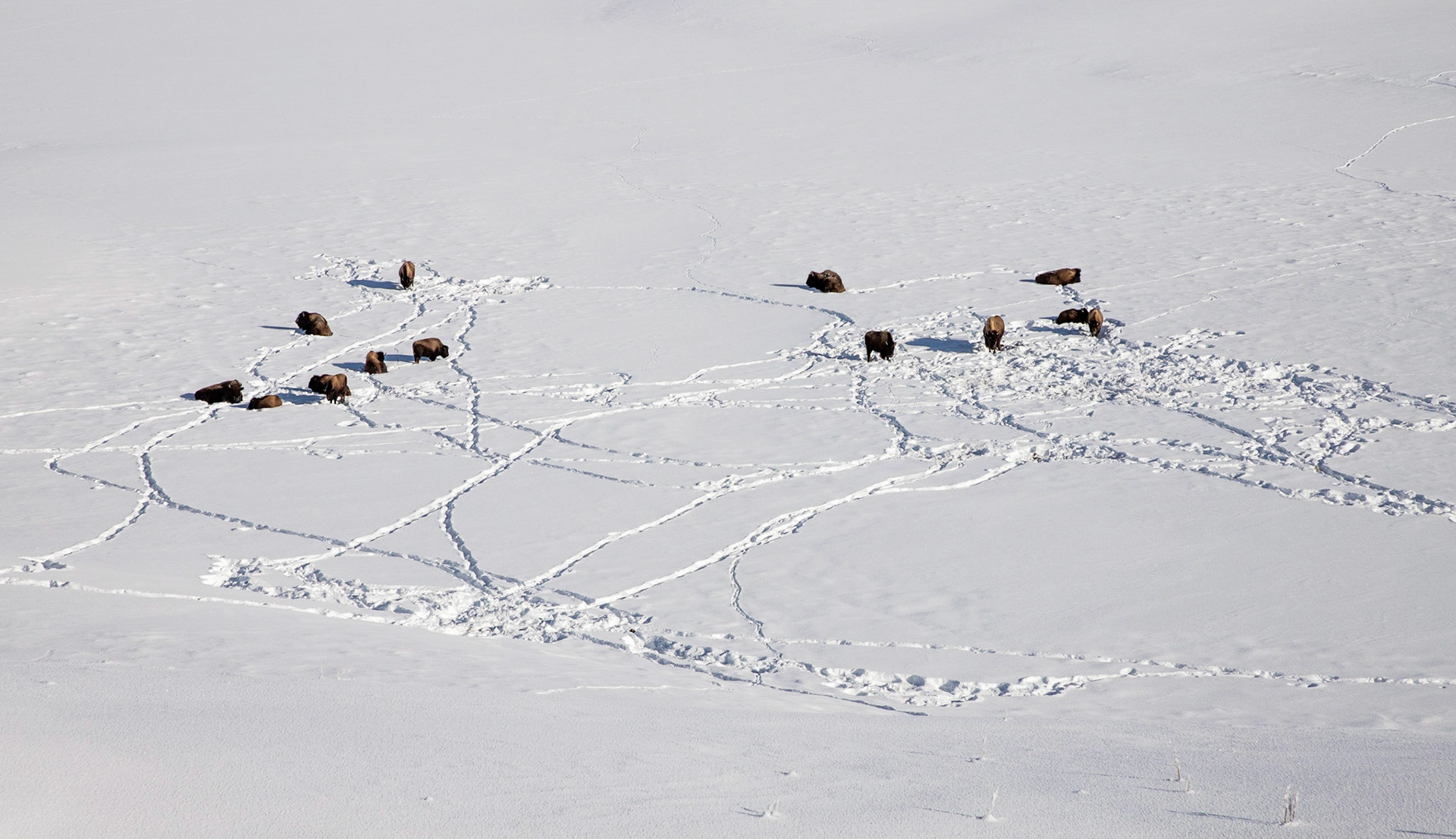
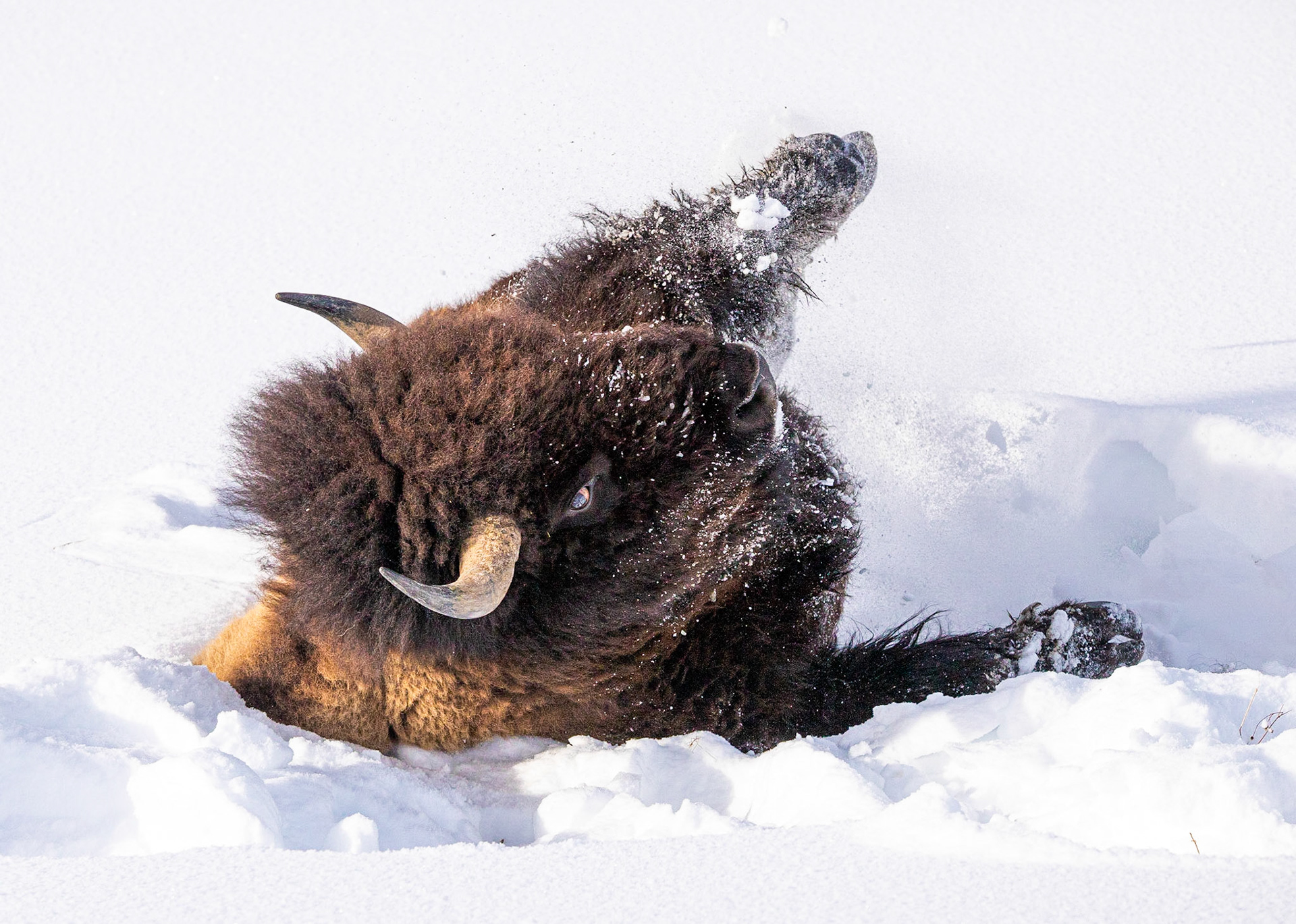
They seem gentle enough, plowing their faces into the snow to find a few meager dried grasses to munch on, but don't get on their bad side. We saw them run full force into each other, horns out, and let me tell you that their bulk is deceiving - these things can really move. I heard these 2,000-pound monsters can leap over a six-foot fence without issue, a feat I thought would be impossible due to the standard model of physics. Over the course of the trip, however, I found bison tracks leading up steep inclines I could barely climb myself, and even on top of elevated boardwalks meant to keep humans out of the dangerous thermal features two meters below. I must go with the evidence here and say that they are closet parkour experts.
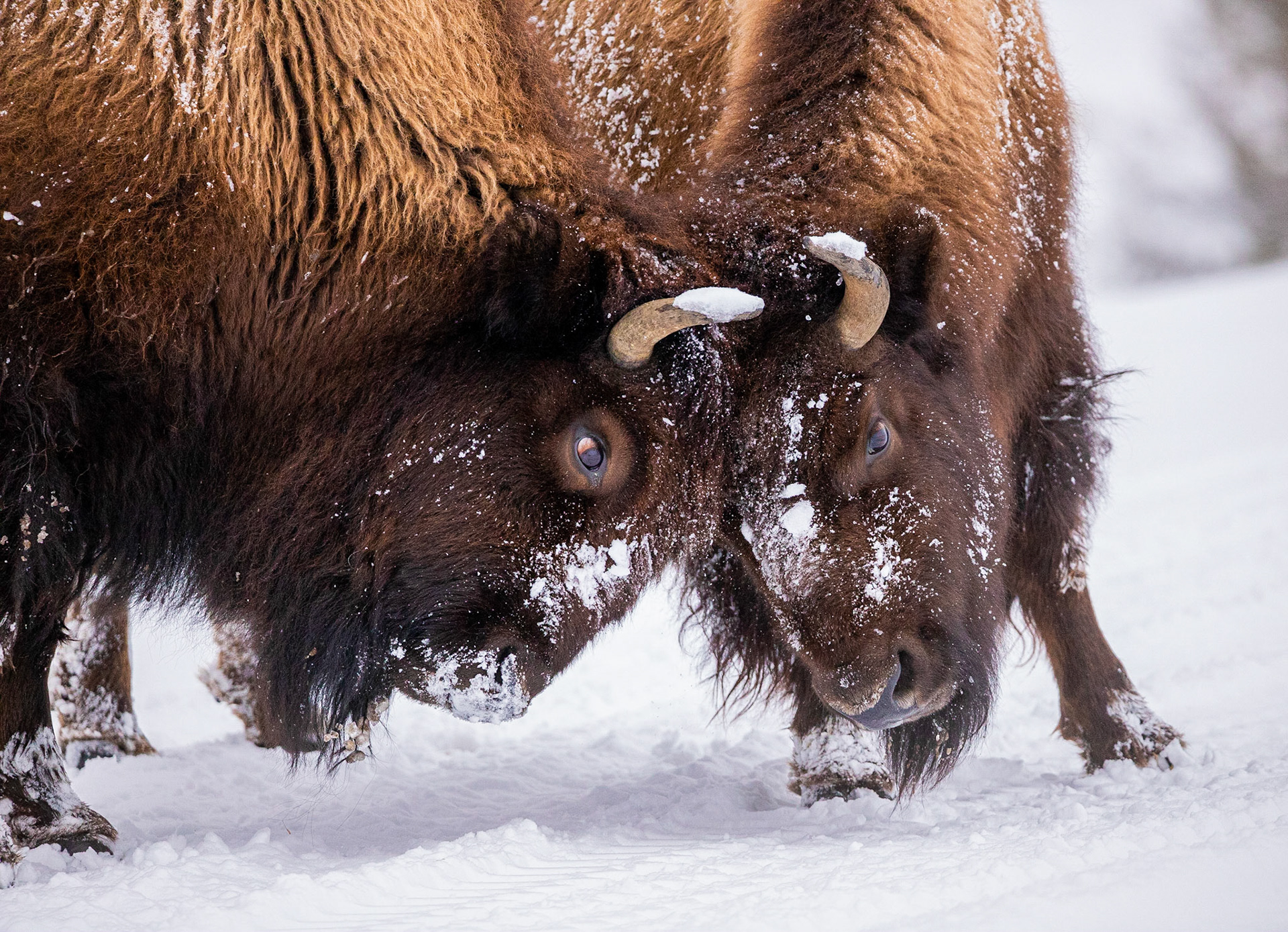
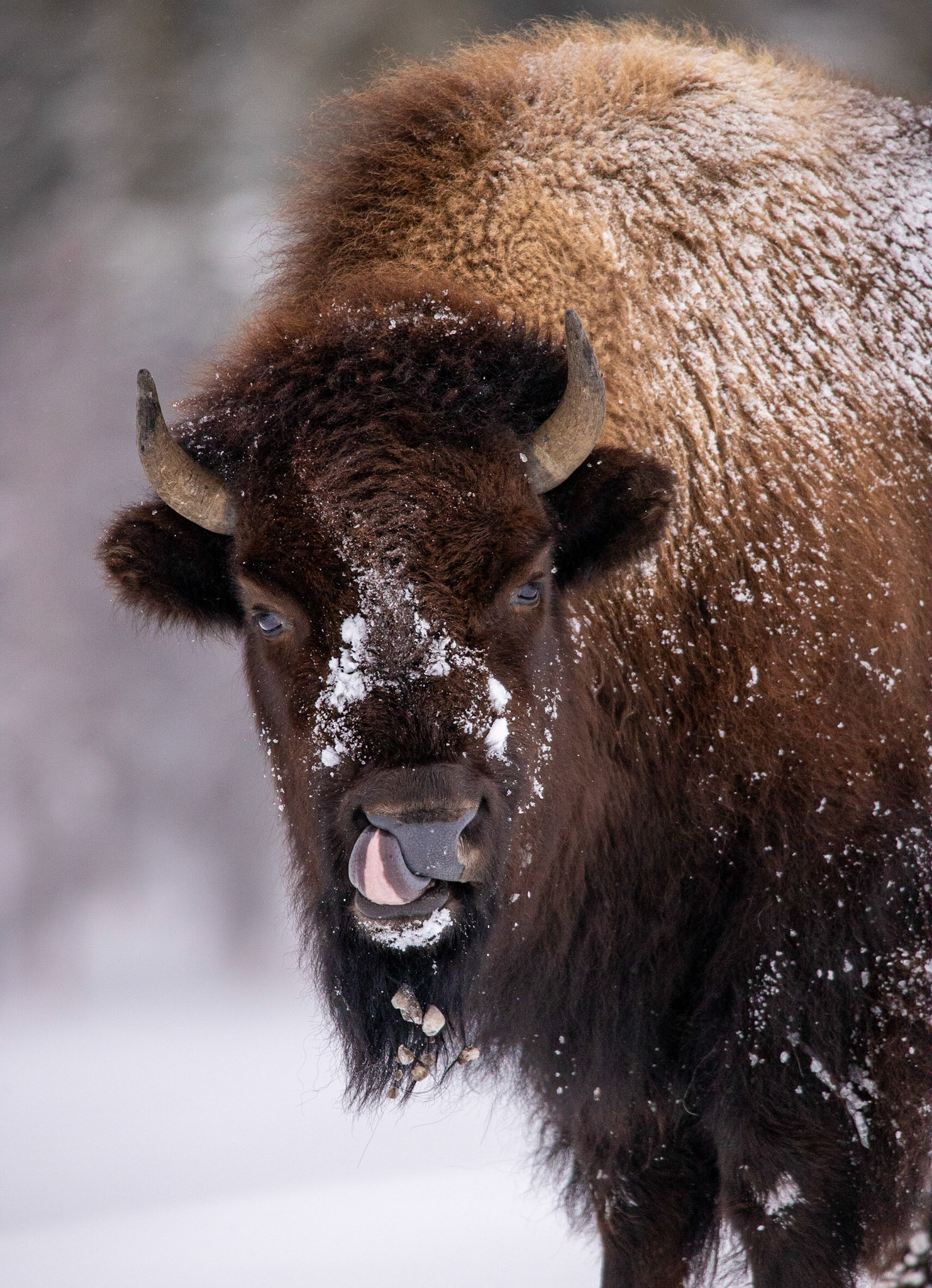
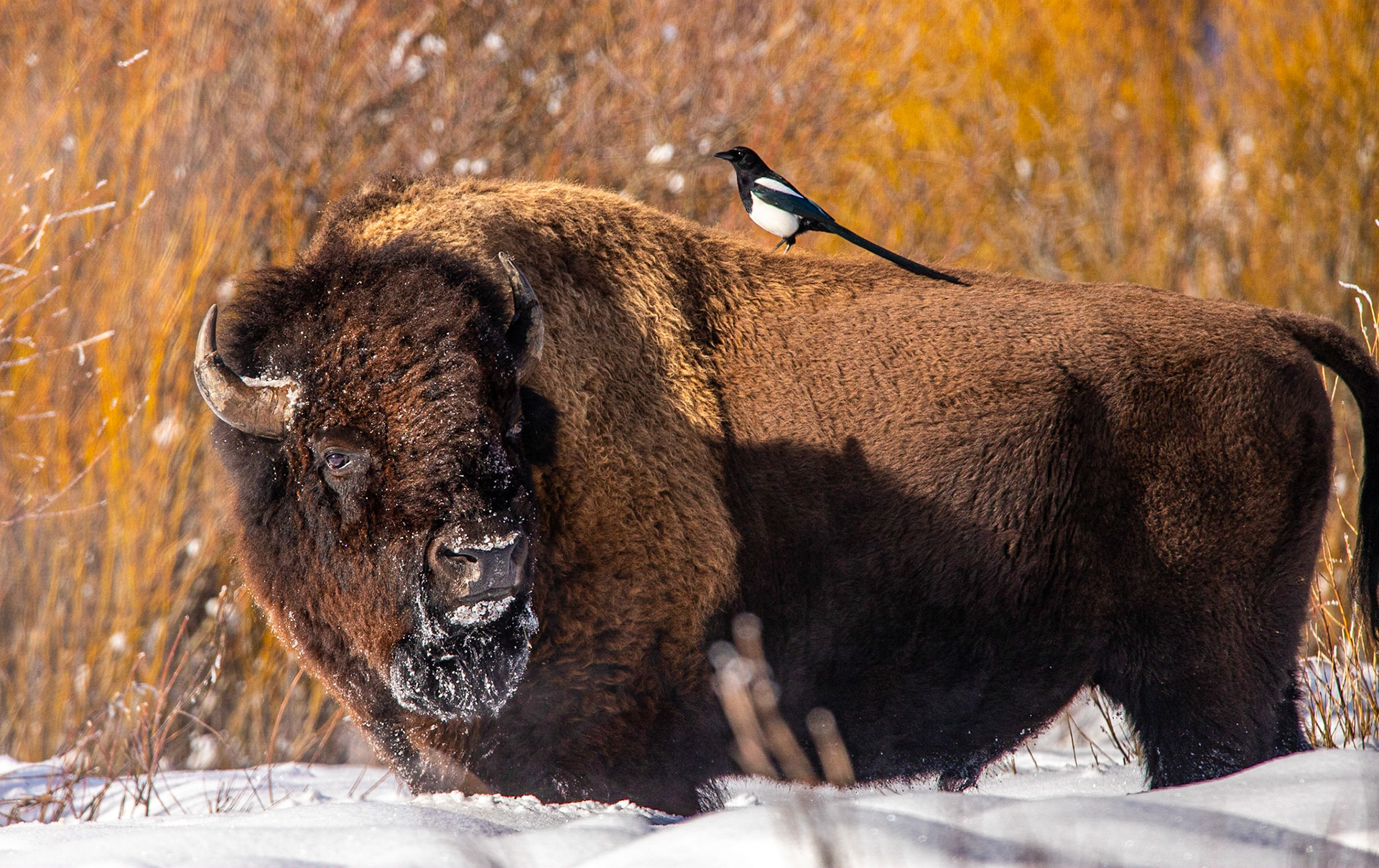
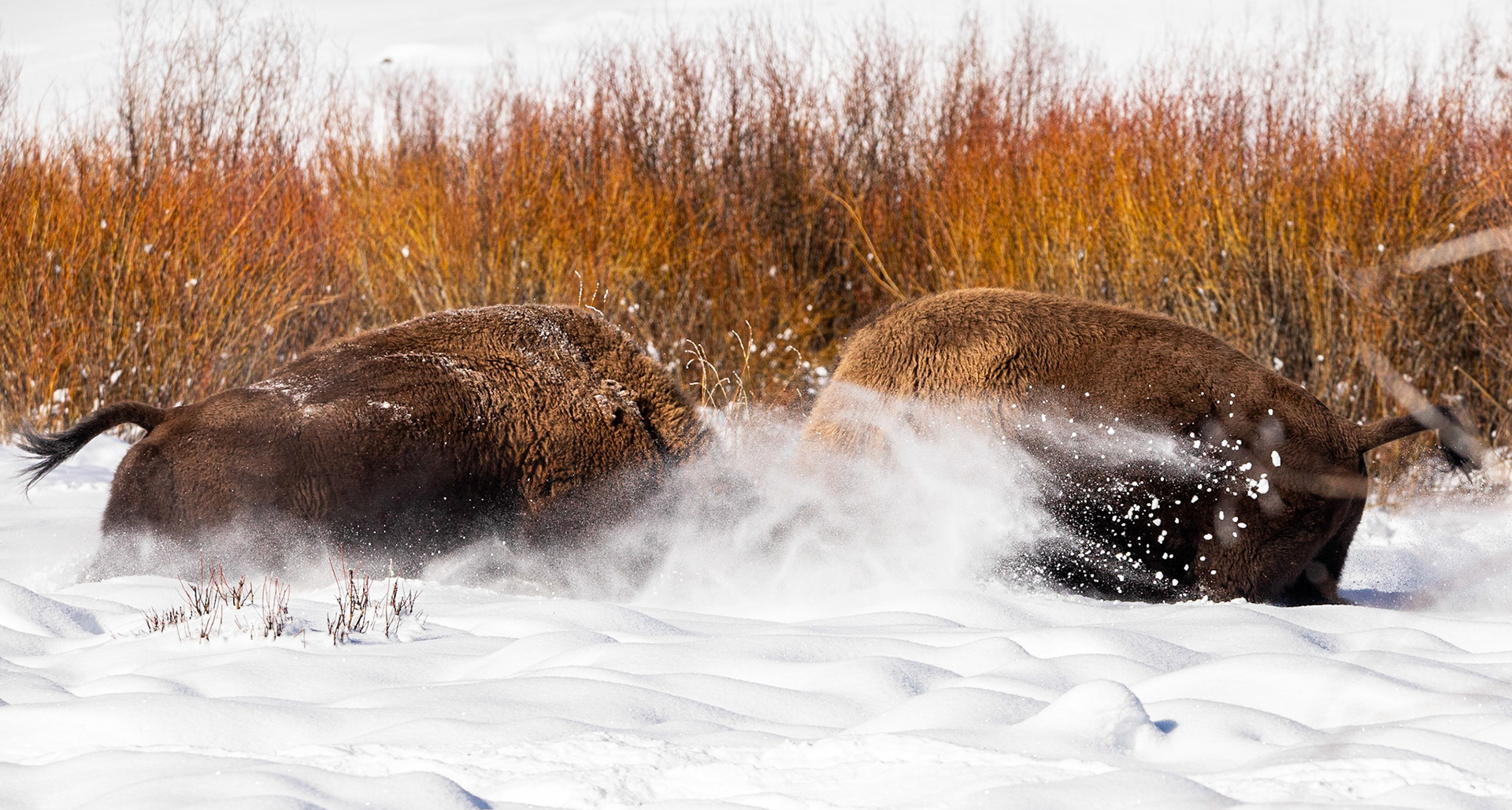
My "bison goal" was to get a good shot of a "frosty" bison - one that was standing miserably in a blizzard, covered with a thin layer of frost. Of course, they are not really miserable - the fact that they are covered with dry snow is proof that their coat is insulating them from the cold (and that the snow is insulated from their body heat - it works both ways). We had many opportunities with different perspectives for observing these beasts, and I found that they were fun to watch and photograph in between or on the way to the rarer wildlife sightings even when all they did was stare back at you or pick their noses with their tongues.
Coyotes
Paul, as we decided to call him (or her, I never really checked...), is a coyote that seems to materialize out of nowhere every afternoon along the road in Lamar. He seems to do pretty well for himself hunting along the roadside and is frighteningly habituated to vehicle traffic. In fact, he would go alongside cars and look inside as they slowed to observe him (and to try not to hit him). I couldn't help but sense a bit of sadness in his eyes as he looked right at me - almost as if to say, "why did you have to build this hard black surface through my perfectly good hunting ground?" We went to say hello to Paul every day we were in Lamar, and wished him well on our last pass through before we left the park for good.
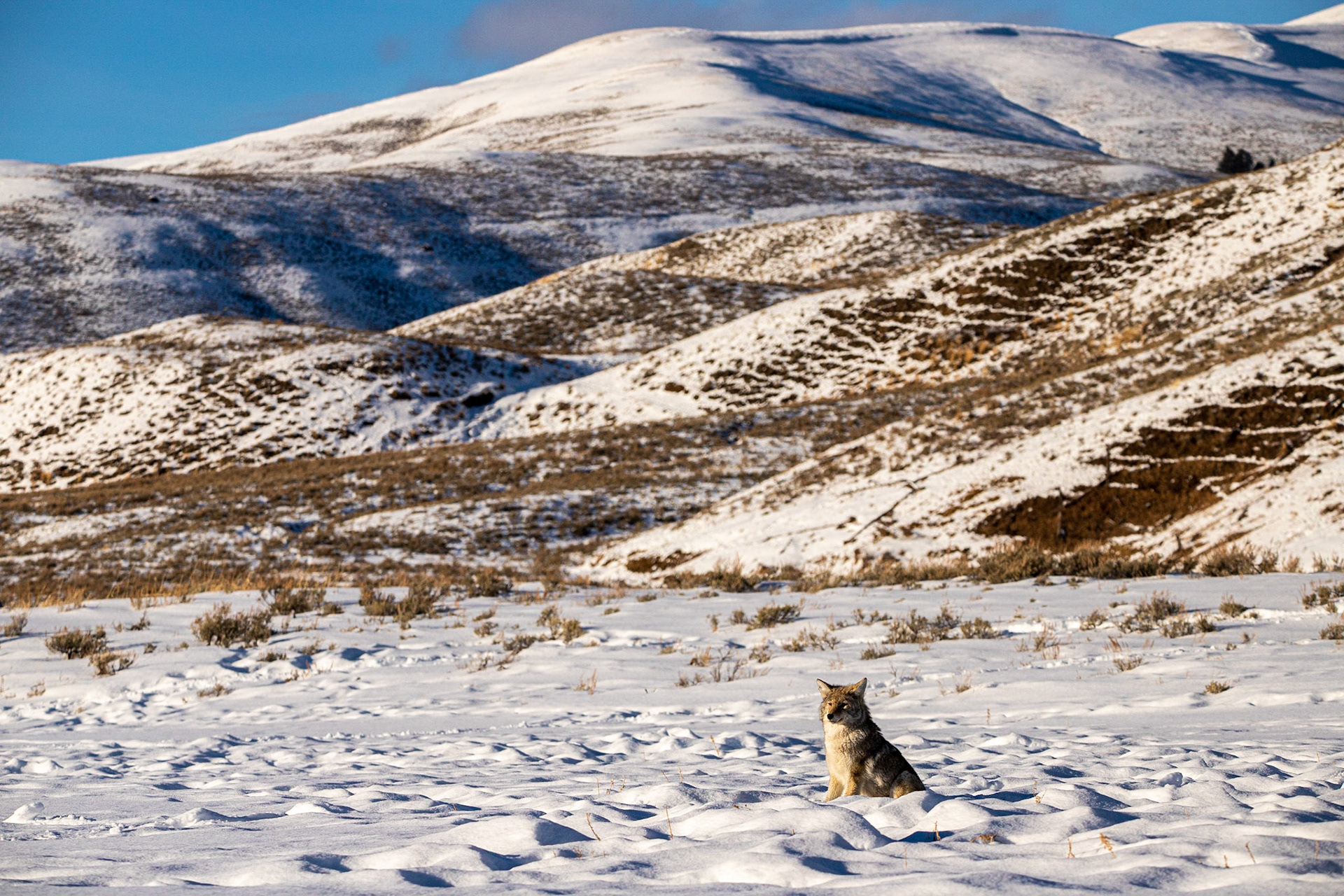
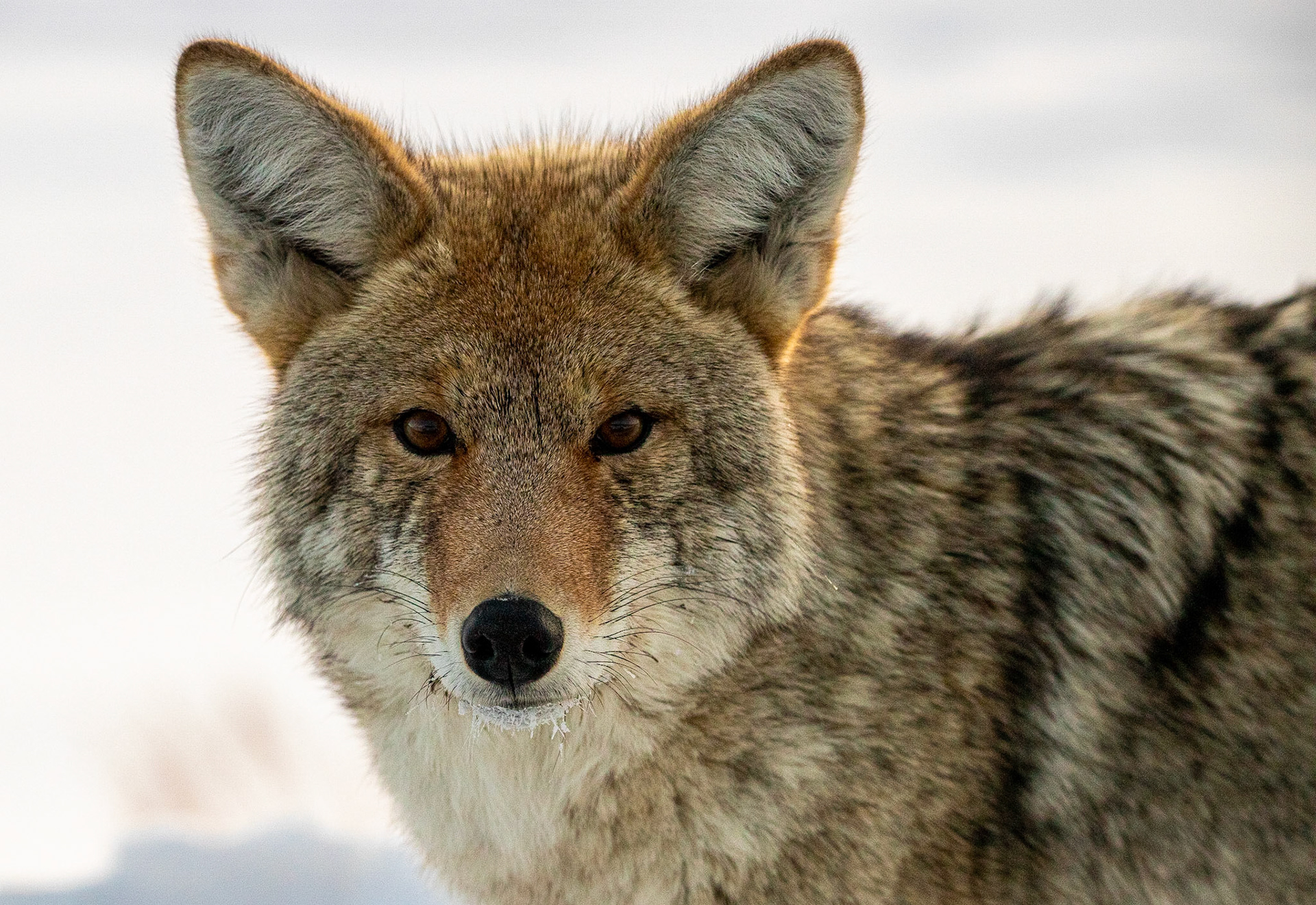
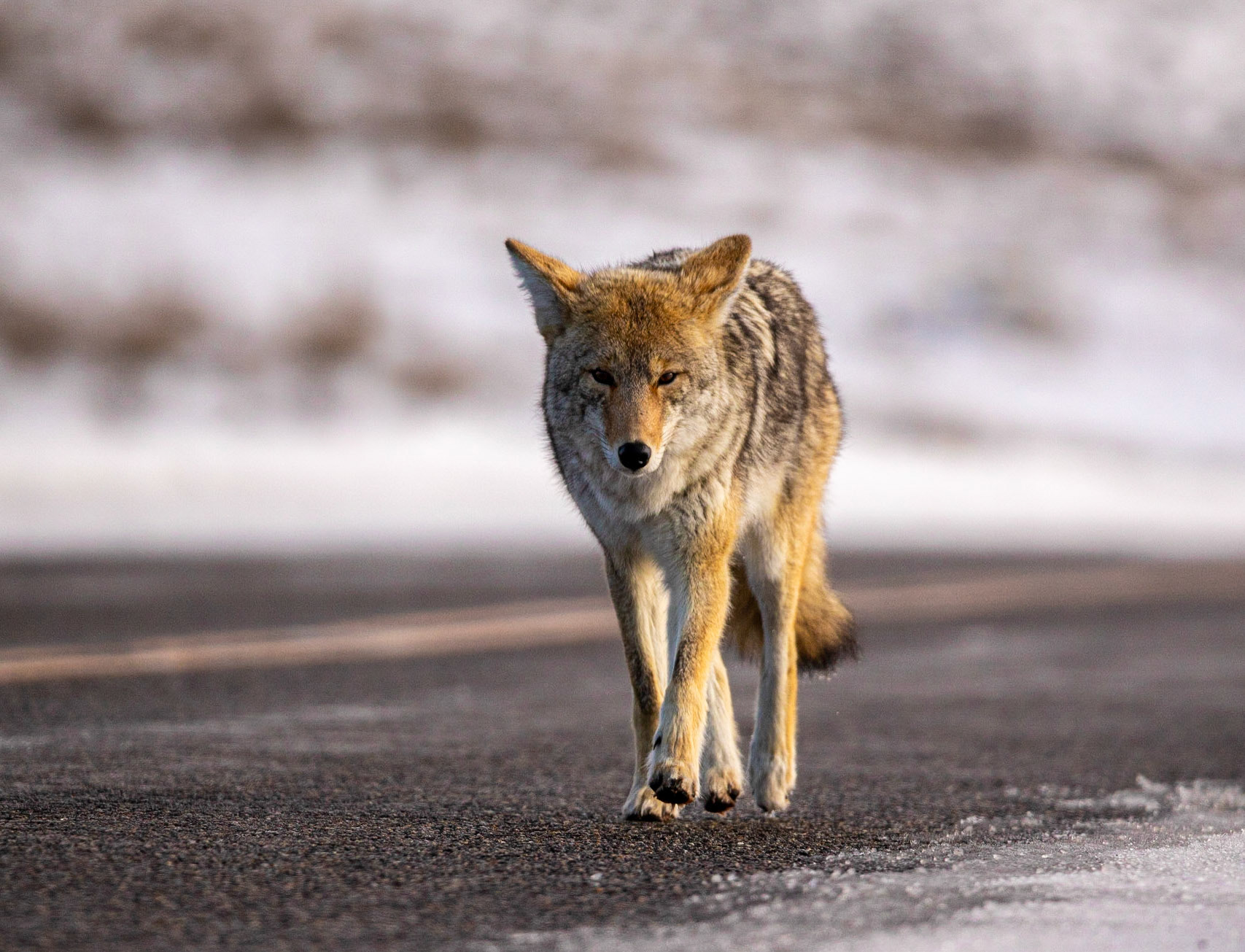
The coyotes' hunting technique is similar to the foxes', but perhaps a bit cruder. Rather than an elegant leap worthy of an Olympic diver, they perform more of a lunge and plow. By sheer power, though, they seem to manage a higher success rate than the foxes. We saw coyotes every day of our trip, a testament to their success in this harsh environment.
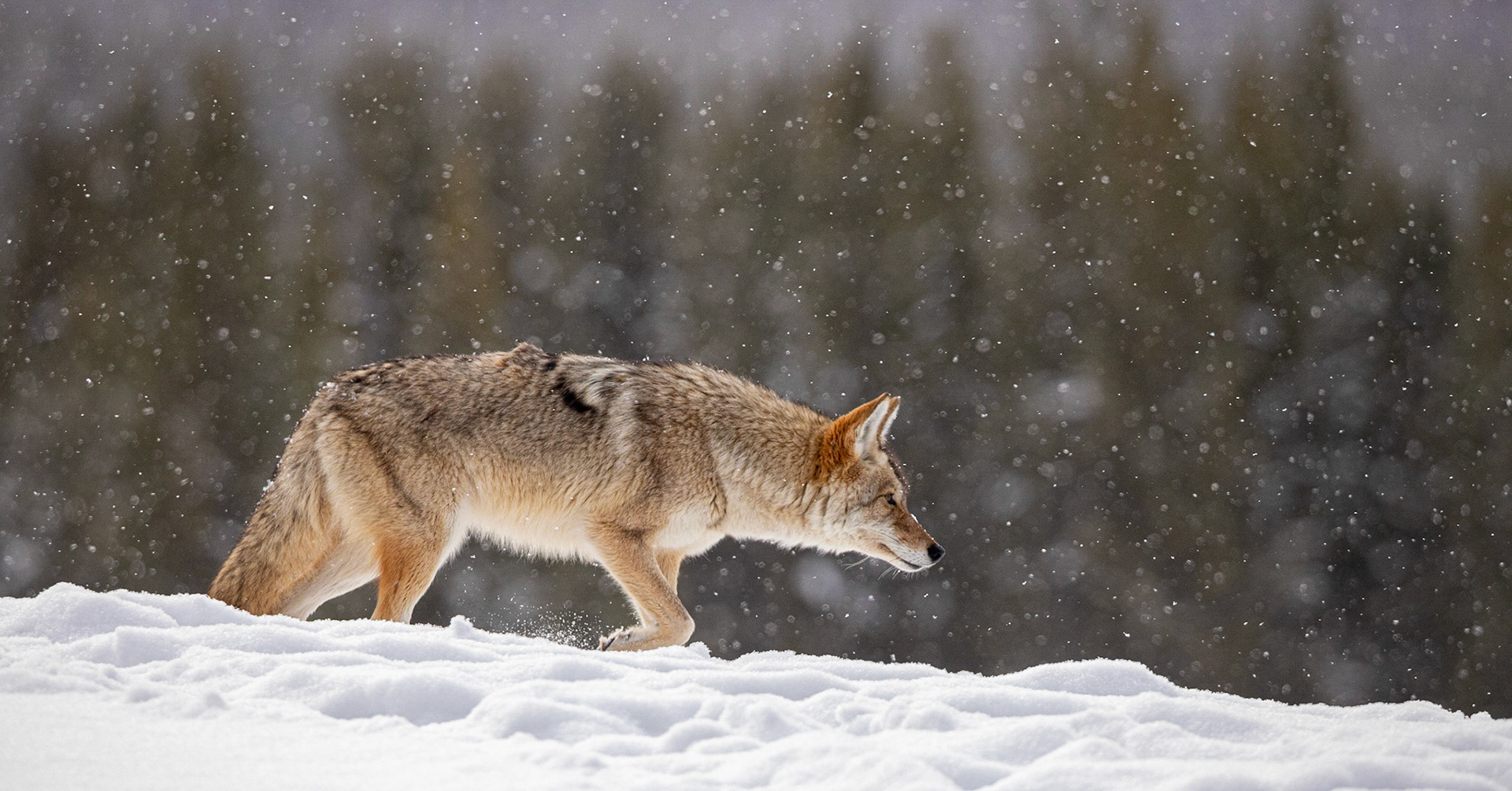
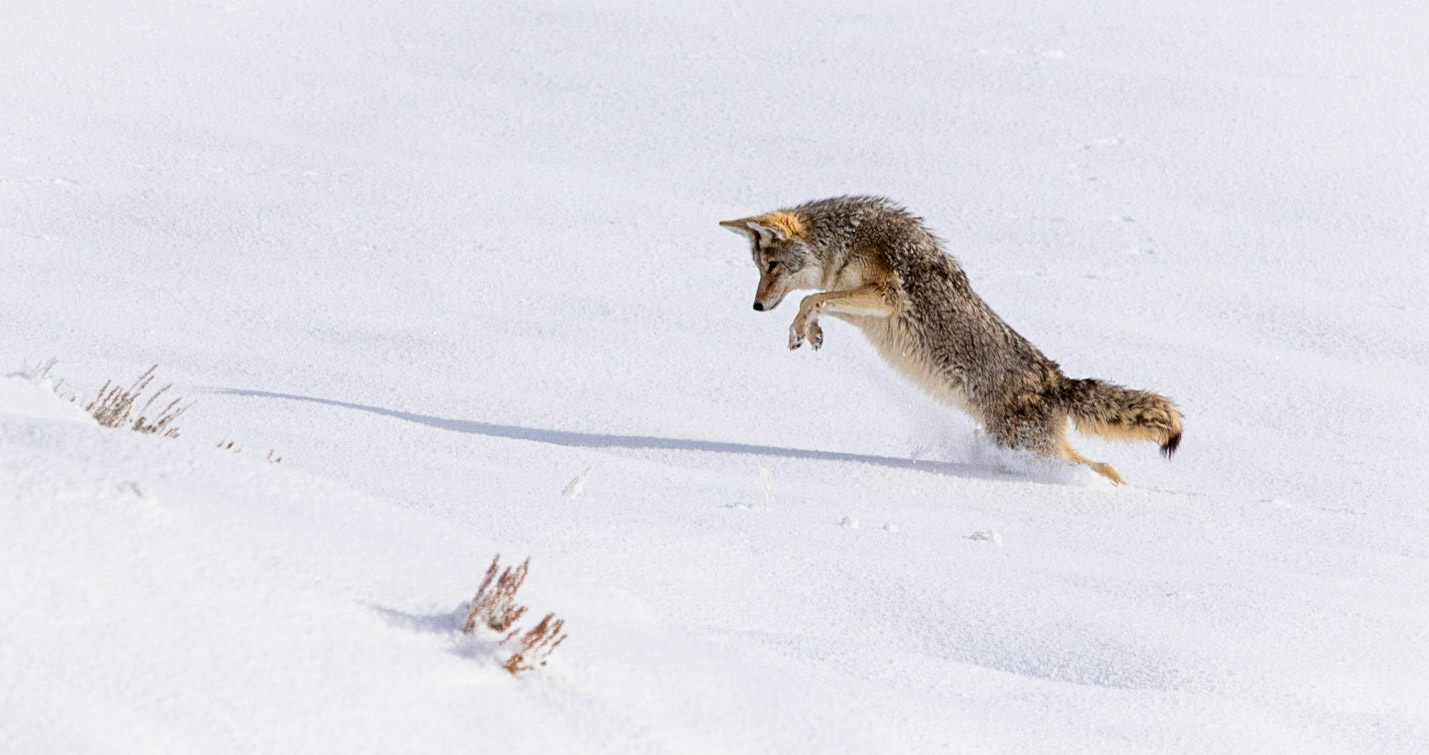
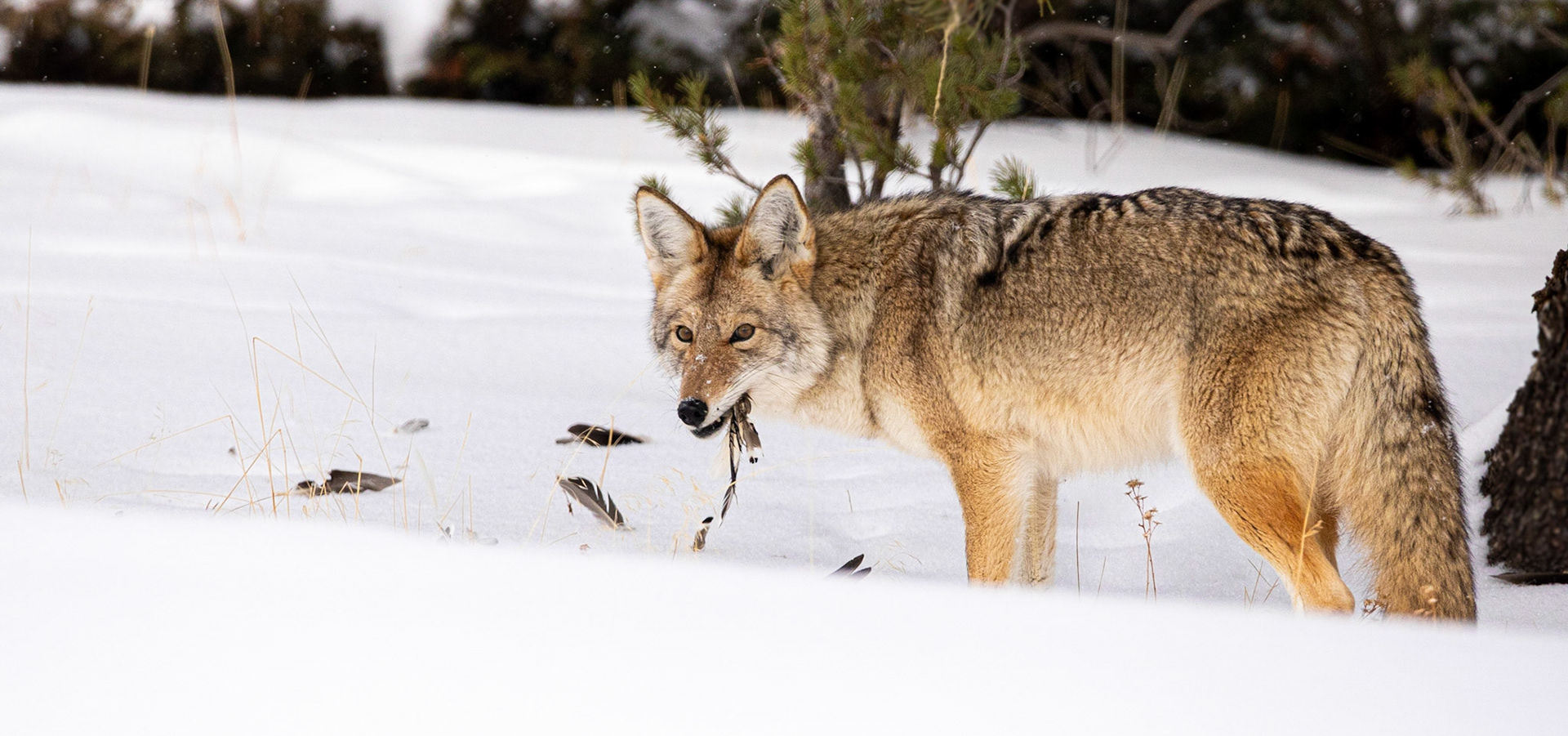
Our best views of their hunting techniques came with what looked like a lazy coyote sitting on the mountainside. Its eyes were closed, and it would occasionally open them slightly to look around and then close them again. Its ears perked up when it heard a noise, and it tilted its head the same way your pet dog would if it heard a sound it had never heard before. The sound came again; it tilted his head the other way. Cautiously, slowly, it lifted itself out of the snow and took a step forward, then stopped to listen some more. Suddenly it was in the air, lunging into the snow. A miss, but the vole was still close by. The coyote popped its head out of the snow to track the vole's frantic movements. Another leap, this time by spinning around, and another miss. Nothing a little digging couldn't fix. Fresh snow filled the air, then silence. The coyote had caught its snack and was once again sitting lazily on the mountainside.
Lamar Valley
Though perhaps not as scenic as Hayden in the winter, Lamar nevertheless offered up more wildlife opportunities for us than any other area in the park. Bison roam the riverbanks while bighorn sheep stare down at you from impossible angles on the rocks near Druid Peak. American dippers pop in and out of the nearly frozen river as otters play nearby. Nestled in among Druid Peak and Mount Norris, the latter part of the valley near Pebble Creek offers lush evergreen forests chock-full of moose and foxes.
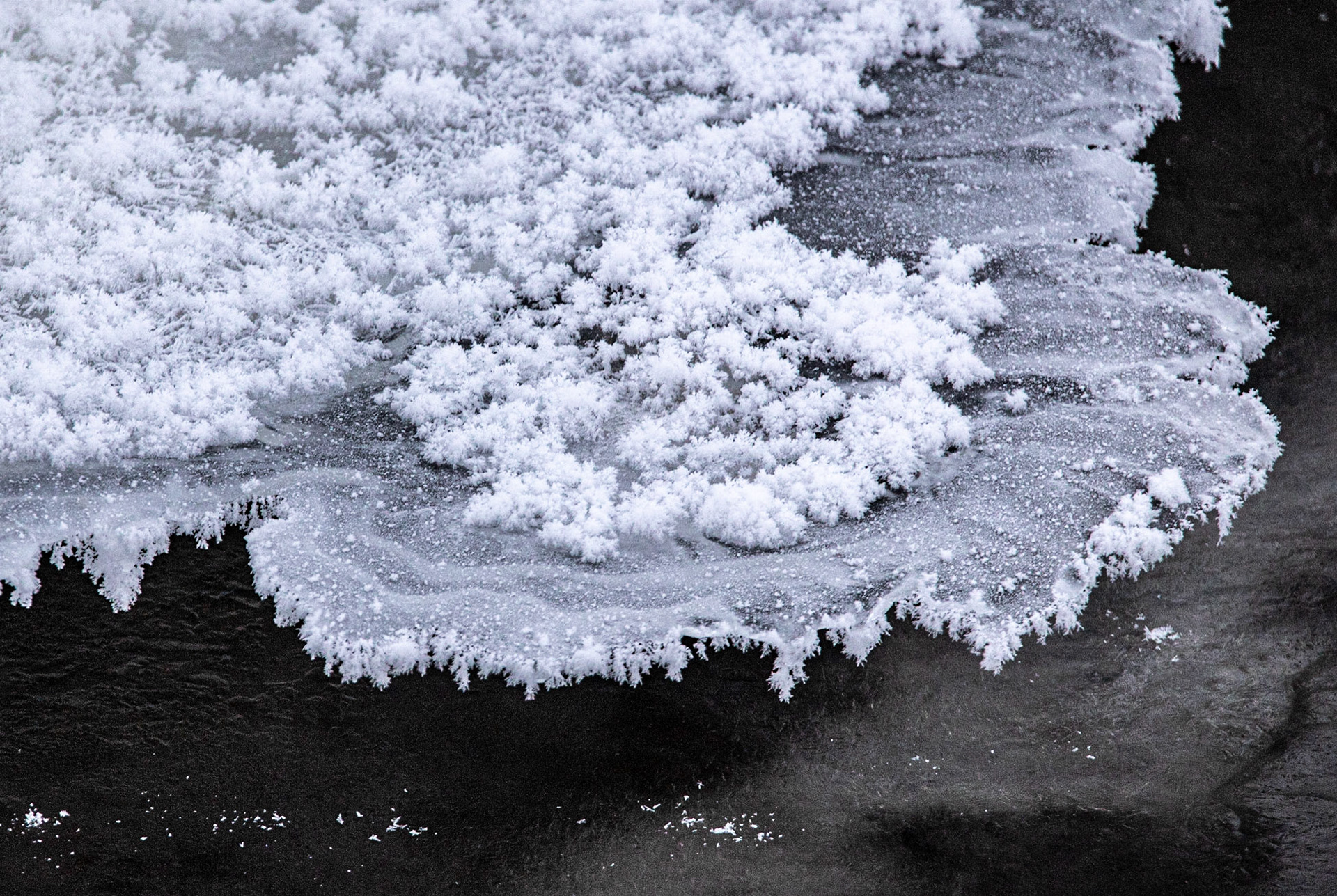
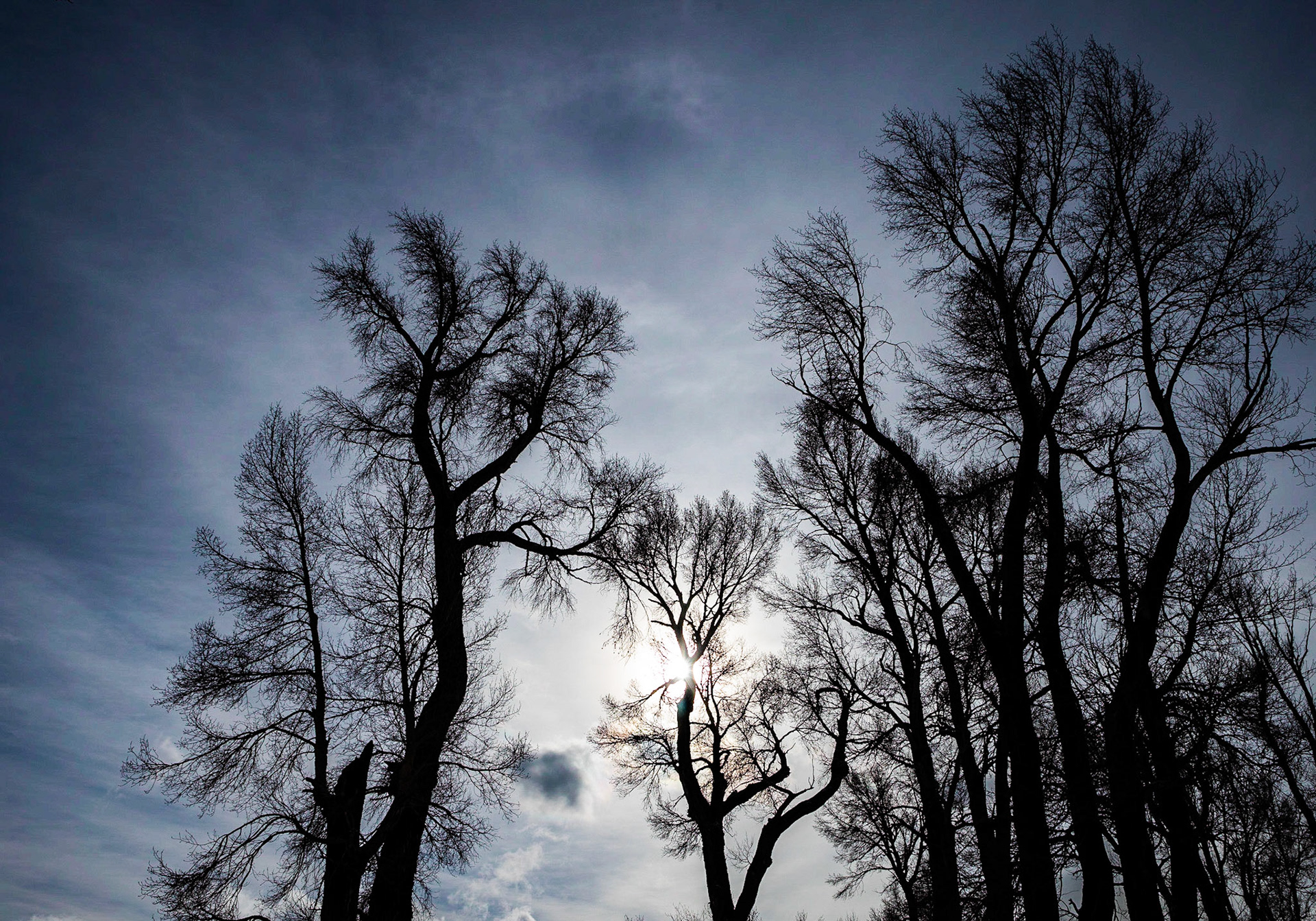
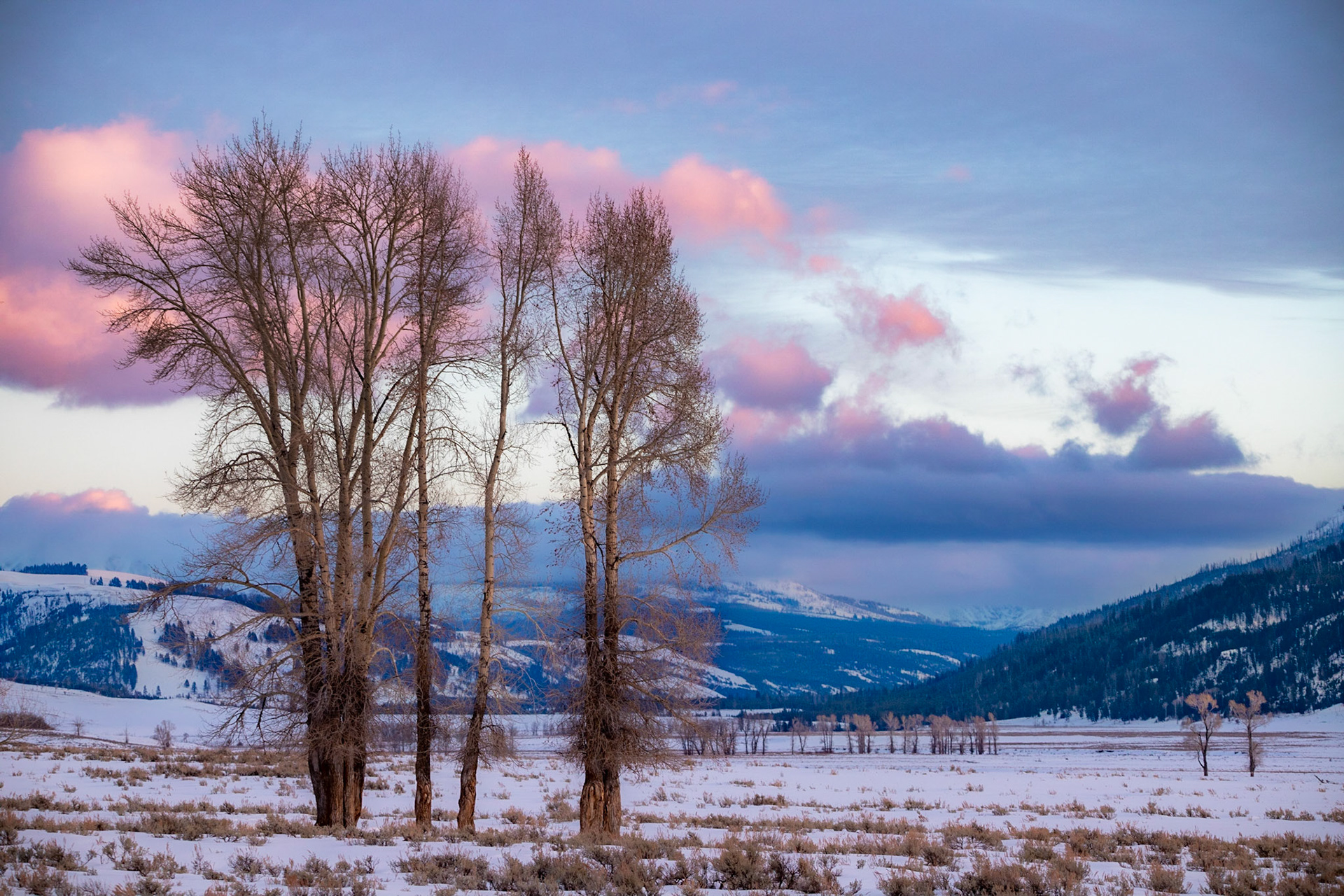
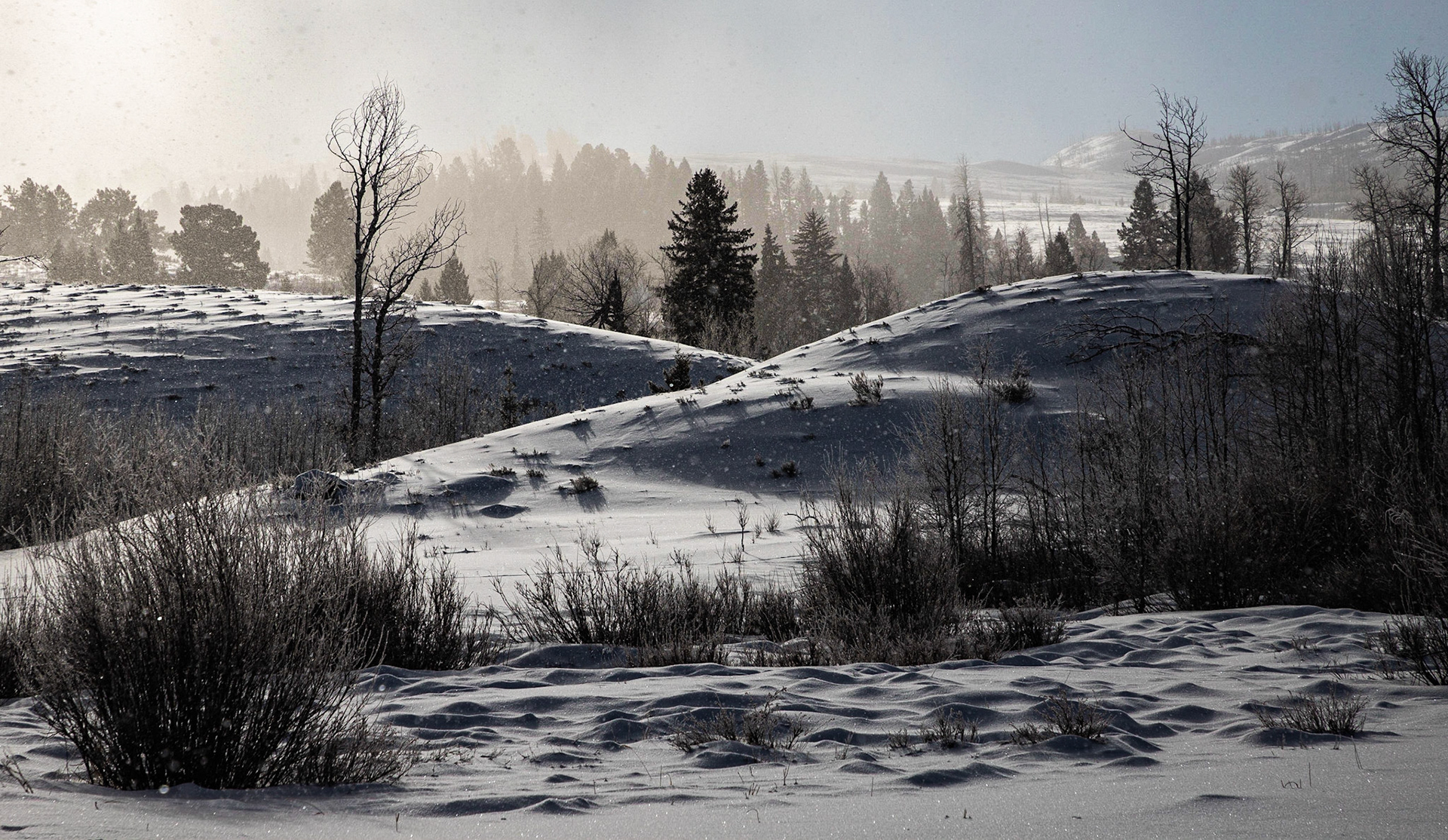
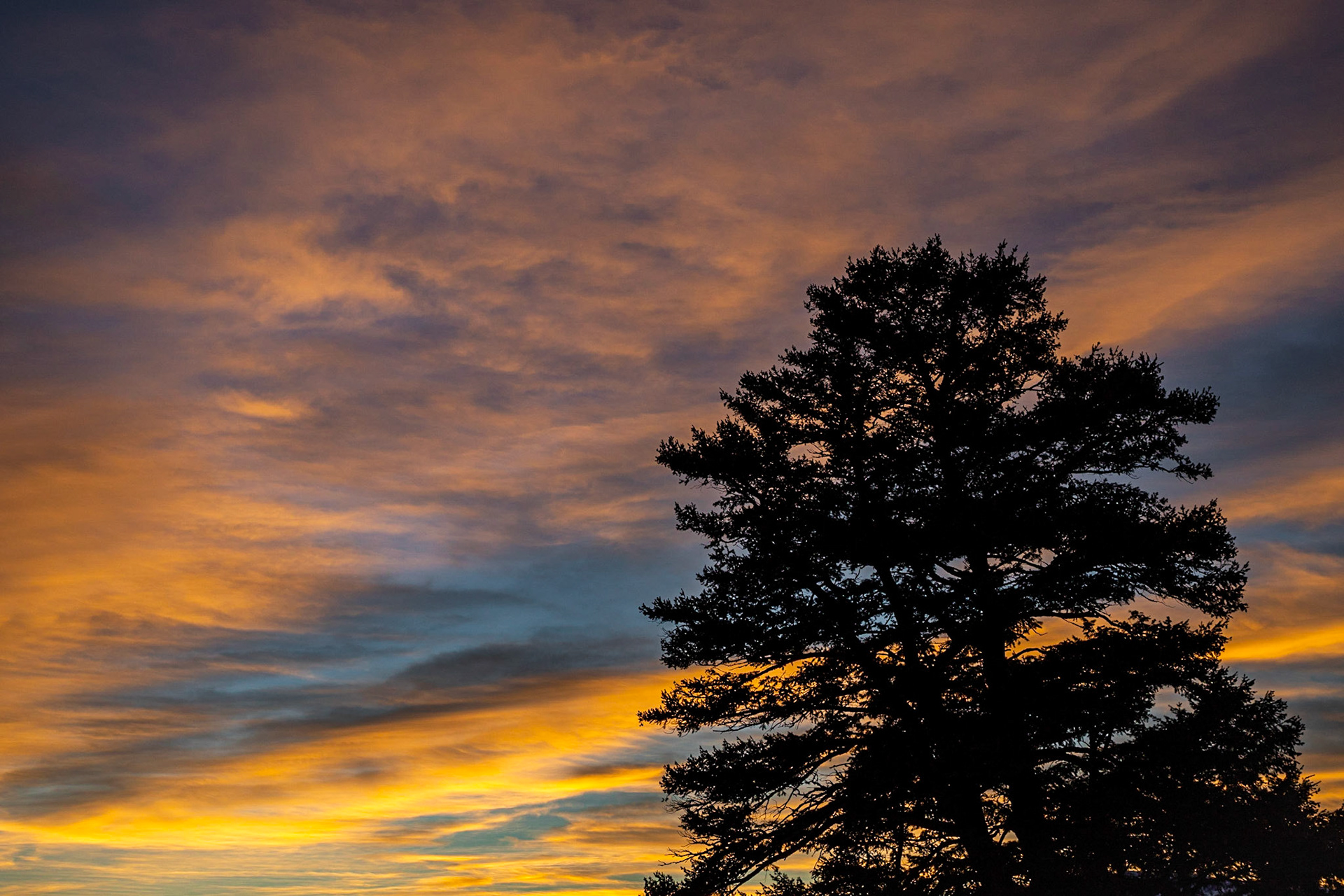
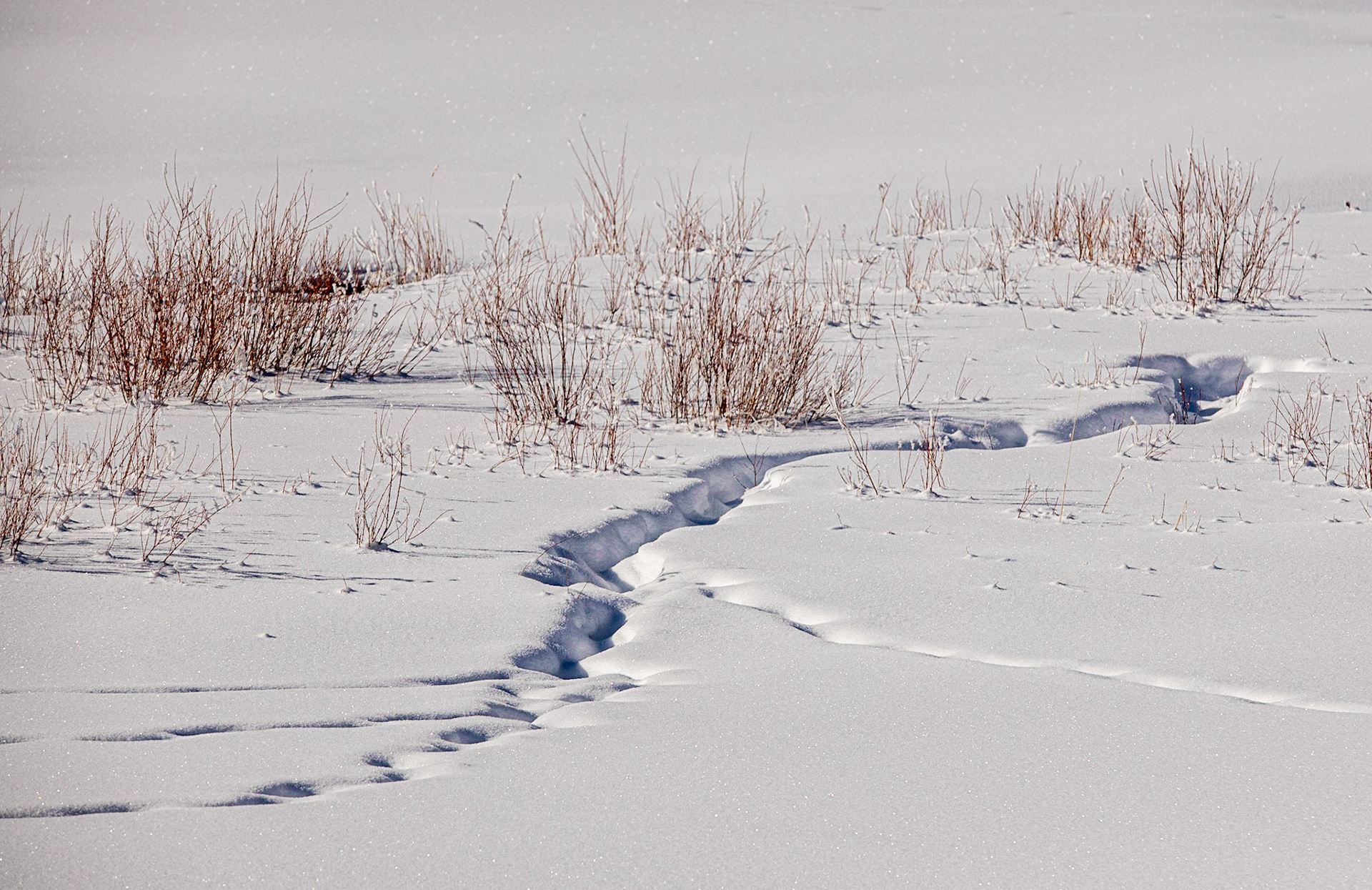
Snow does not like this part of the park as much as it likes the western and southern portions for some reason, so rangers are able to keep the roads fairly clear of dangerous wintery conditions. As a result, exploring this region is easy to do and can be a cost-effective way to experience the milder parts of winter in Yellowstone.
Moose
Moose are incredibly shy given that they are so bloody big. Getting reasonably close to one without scaring it off was surprisingly difficult. They love to munch on the thin sappy branches of the bushes you find throughout the valleys in the early morning hours, then they vanish the rest of the day to who only knows where in the forest. Oftentimes, if one did show up in an accessible portion of the park, other human visitors would scare it away in a matter of minutes.
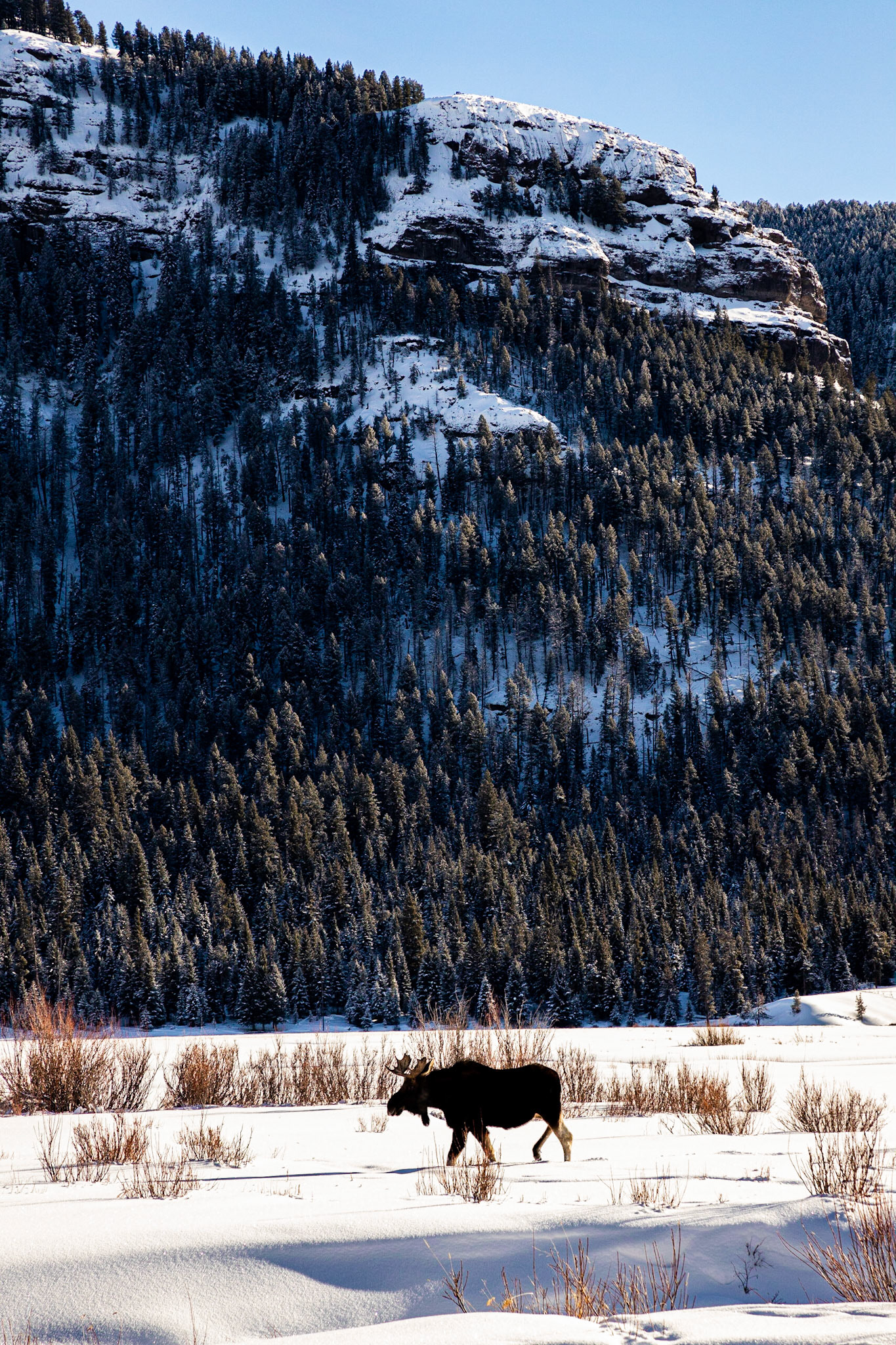
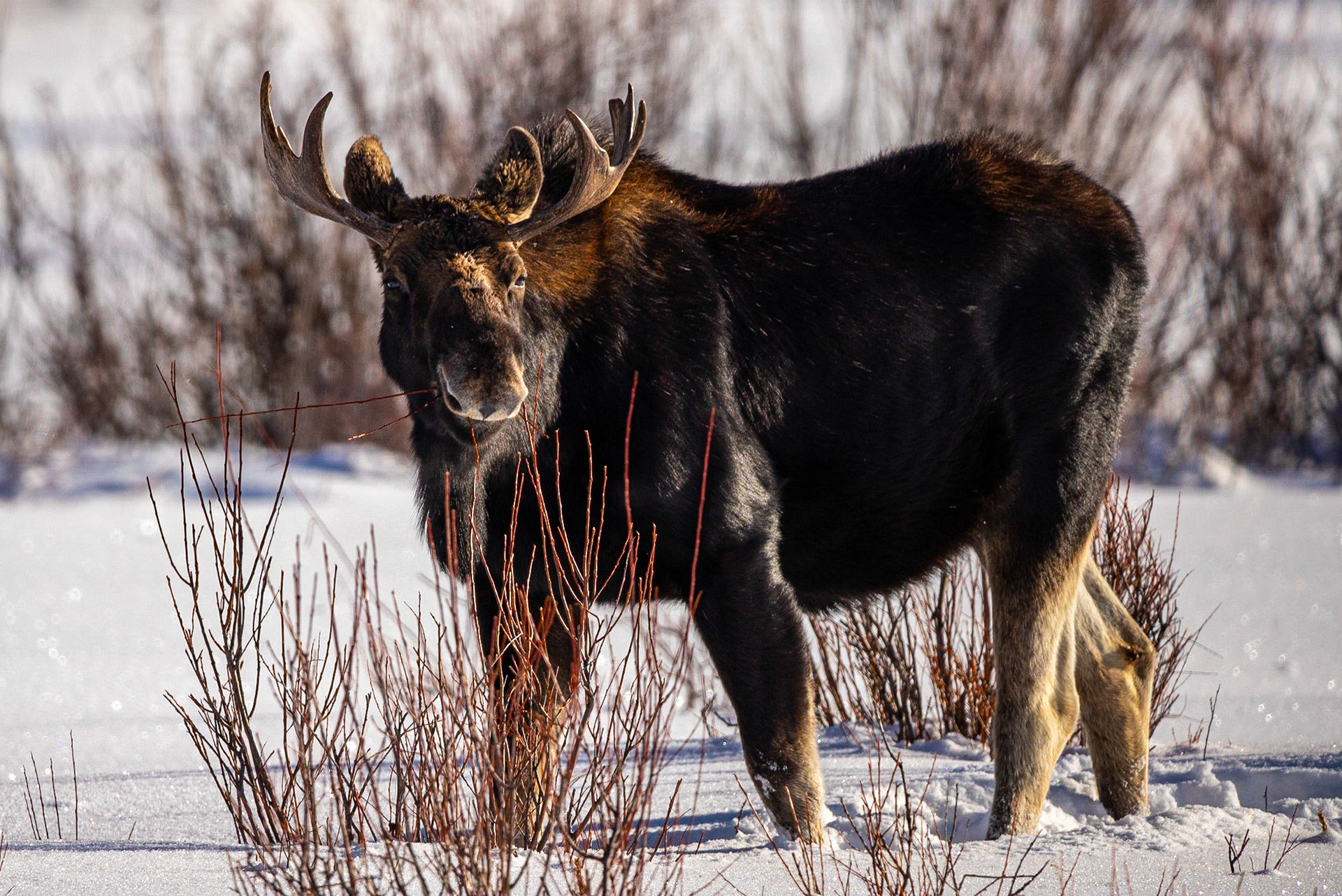
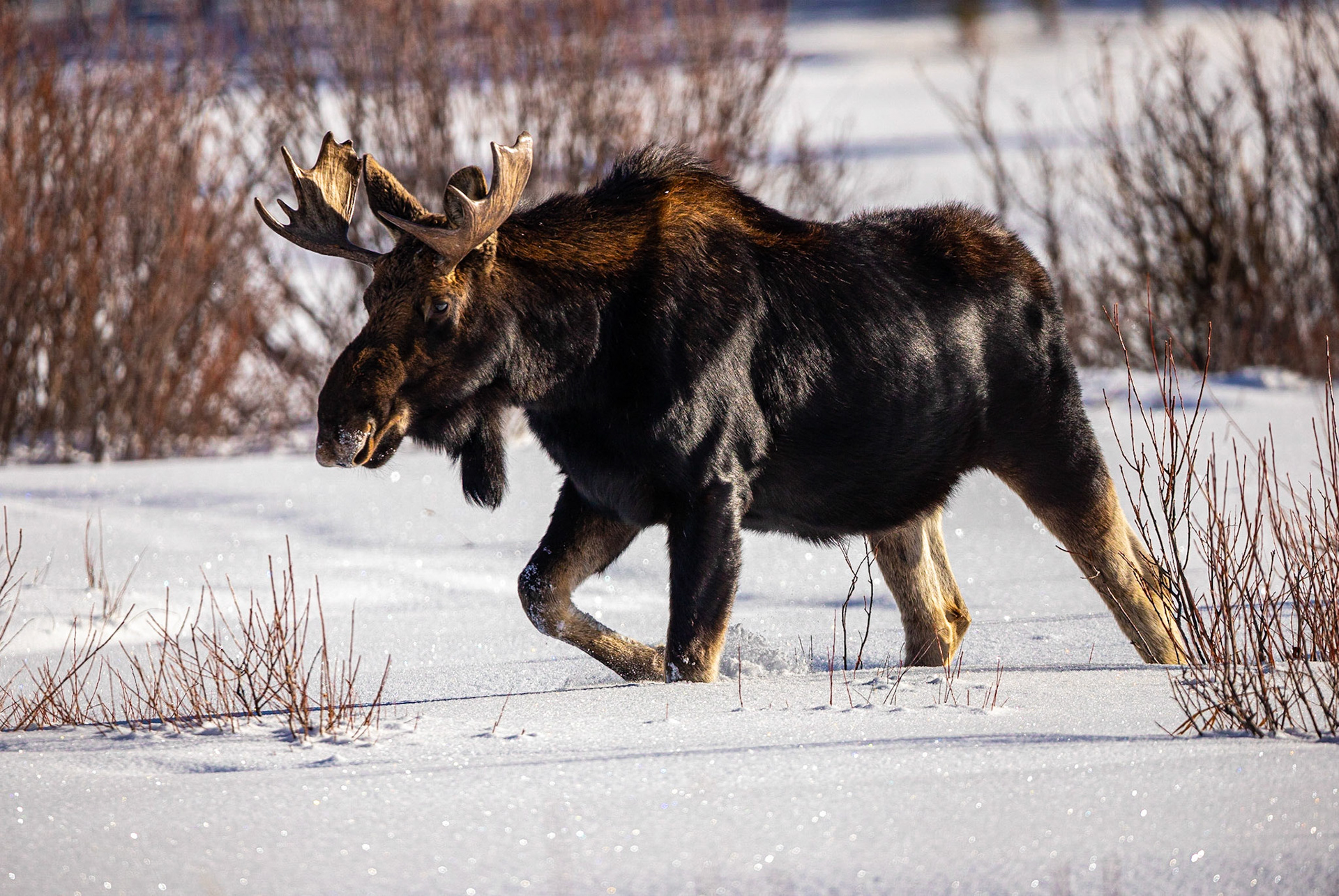
We finally observed a moose by itself in the distance while we were observing a fox one day and decided to switch targets. We seemed to have been the only ones to notice the moose and had it all to ourselves, so to speak. Having spotted it from far away, we crept closer and up a small hill so we could stay hidden as we came up to it. Once on the other side of the hill, I glanced around where I thought it should have been, but there was nothing - did I lose it? I tried to think of all the ways it might have slipped away, and which way I should go to try to track it down again, all the while ashamed of my inability to spot the second-largest animal in the park.
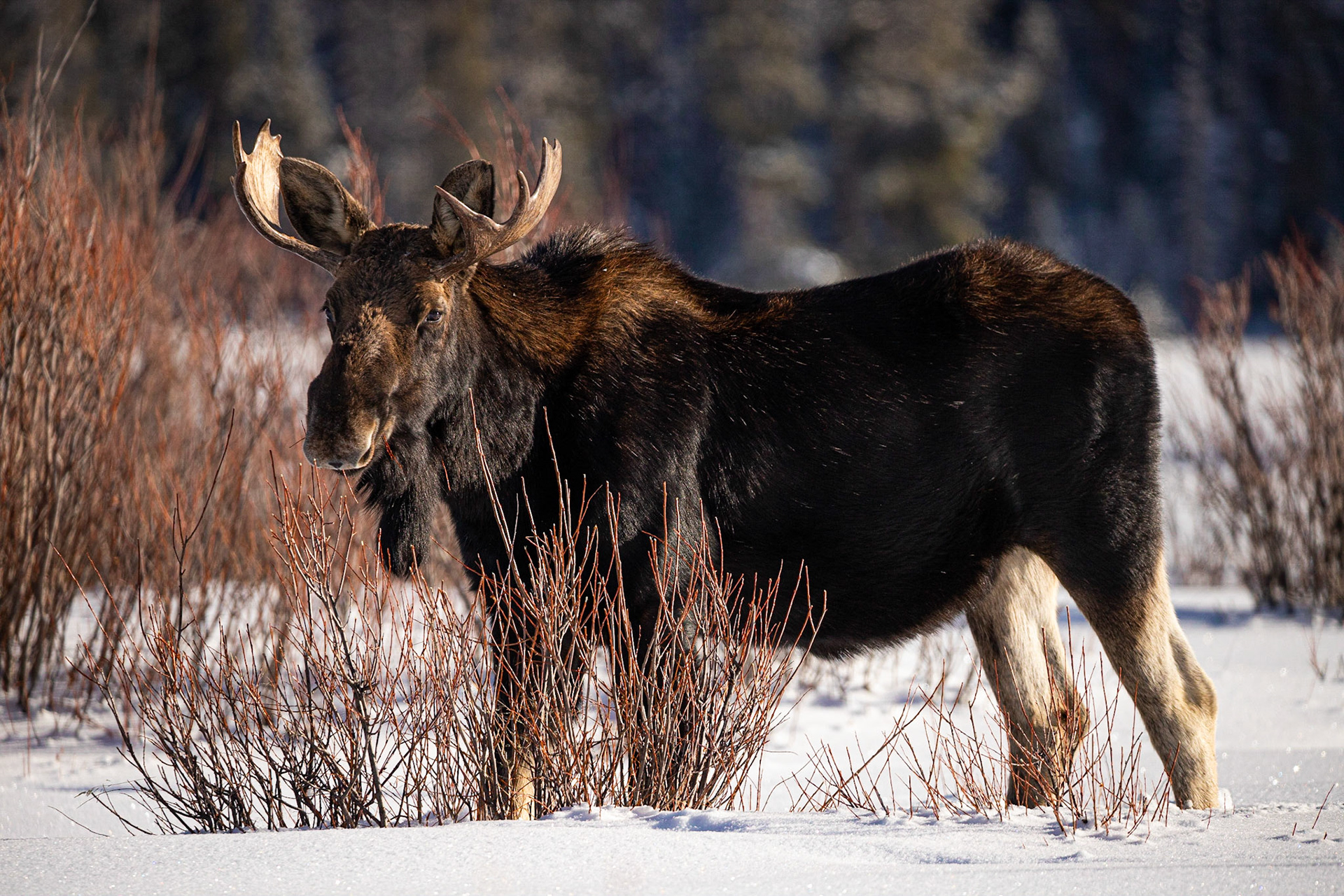
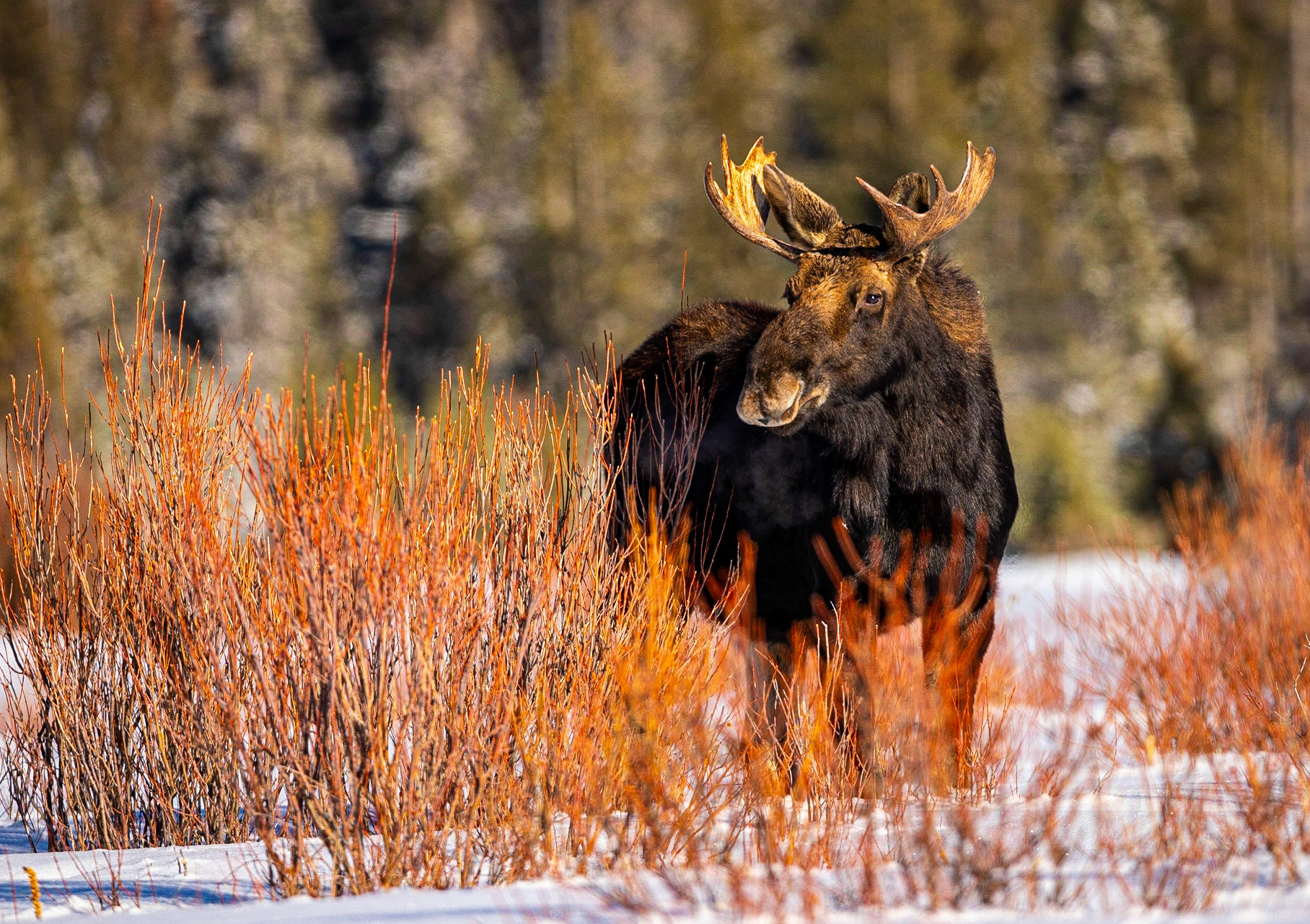
Dhvani pointed just past a creek and among the red leafless bushes. To my surprise, a large brown creature was standing right there, not 50 meters from me, staring me down. I could have walked right past it and never seen it. We stood absolutely still for a minute to make sure it wouldn't run away terrified. It eventually went back to munching, and we slowly crept up to the creek. With no one else to spook it, we were able to finally observe one of these beauties do its thing for several minutes. For a moose, "doing its thing" does not involve a whole lot of excitement, but compared to the bison, it was much more graceful.
Birds
We found two sorts of eagles in the park, both beautiful in their own ways. They are actually fairly easy to spot since they love perching at the top of leafless trees, where they look like large ovals among the thin branches.
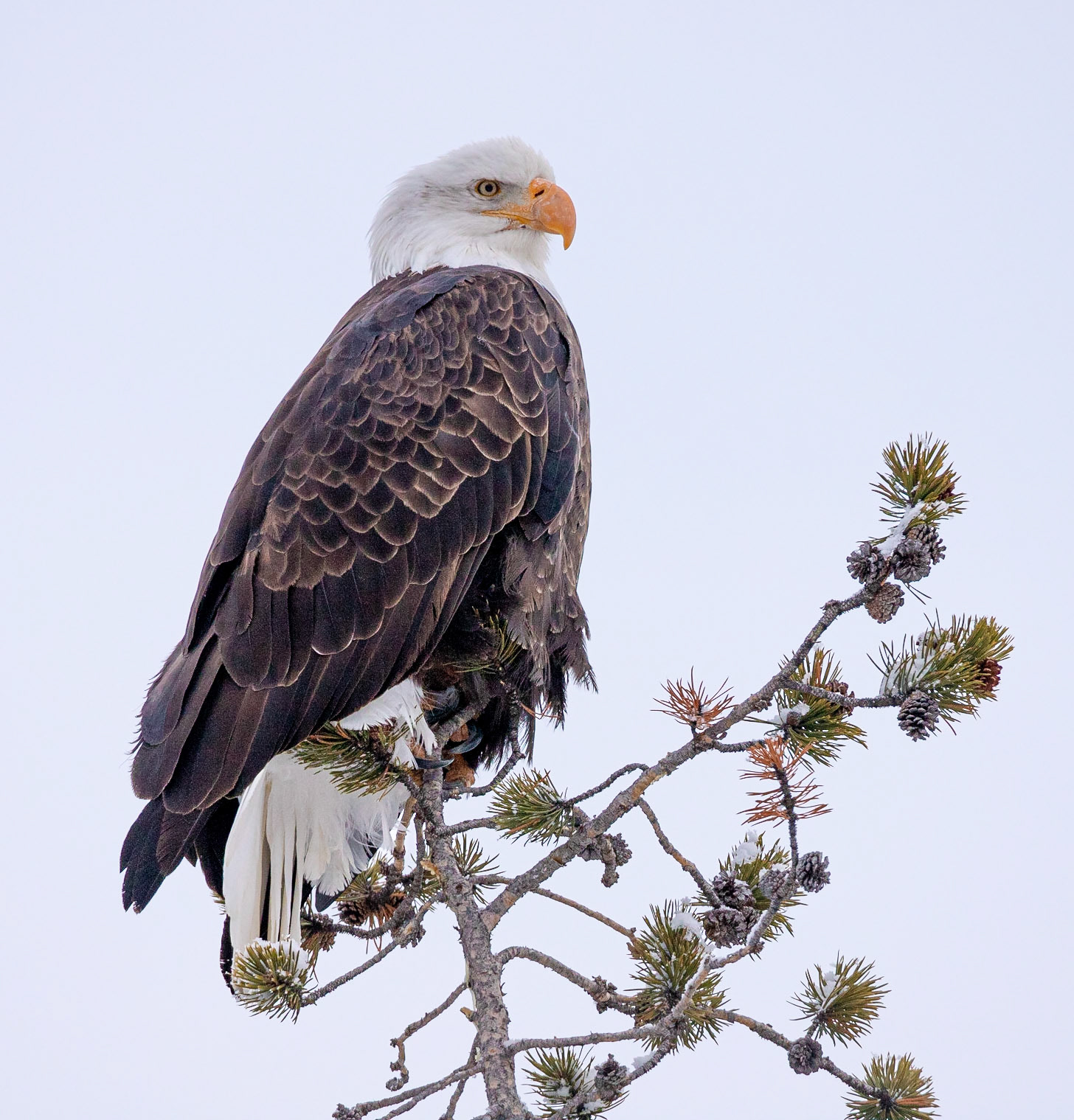
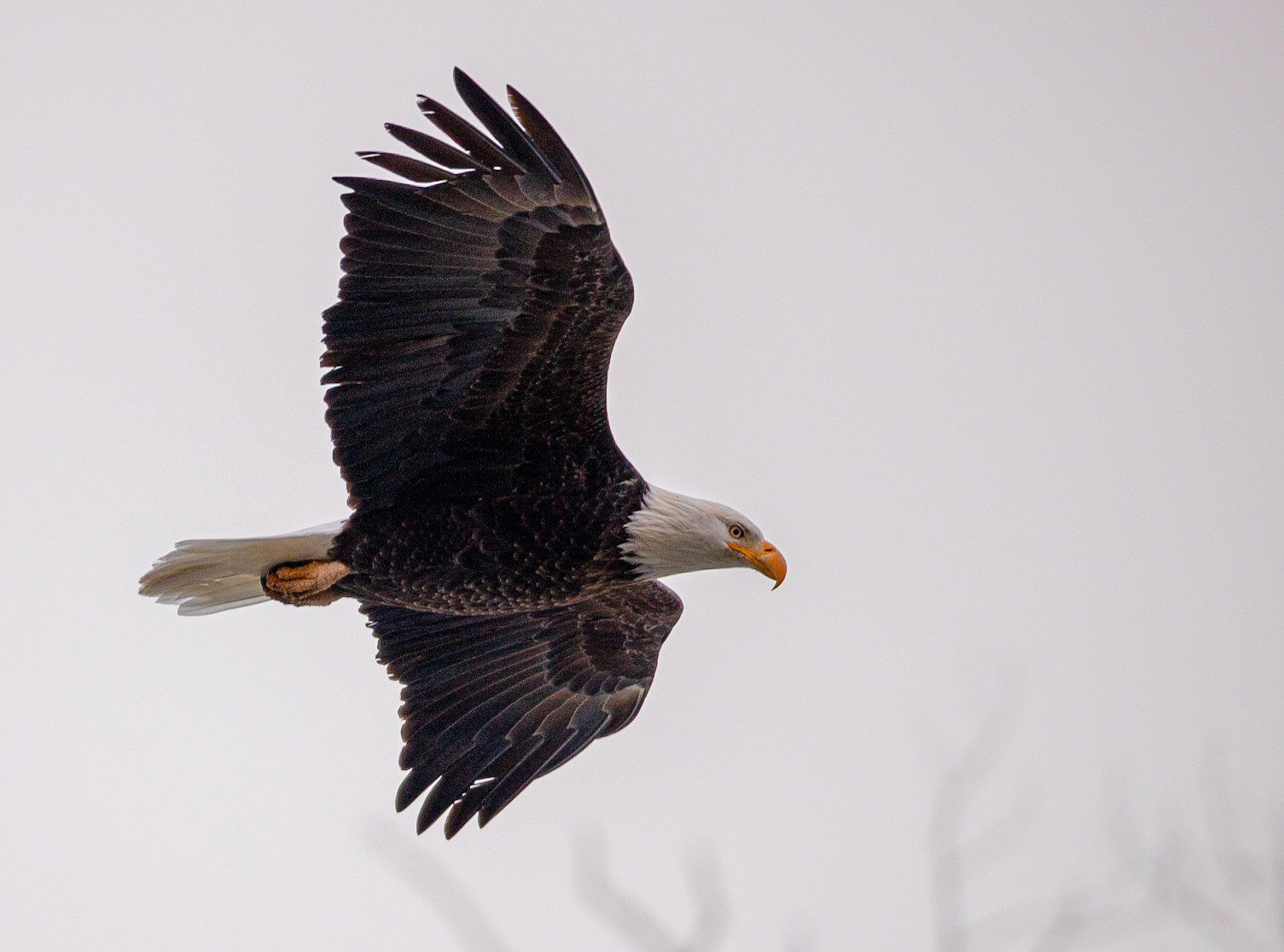
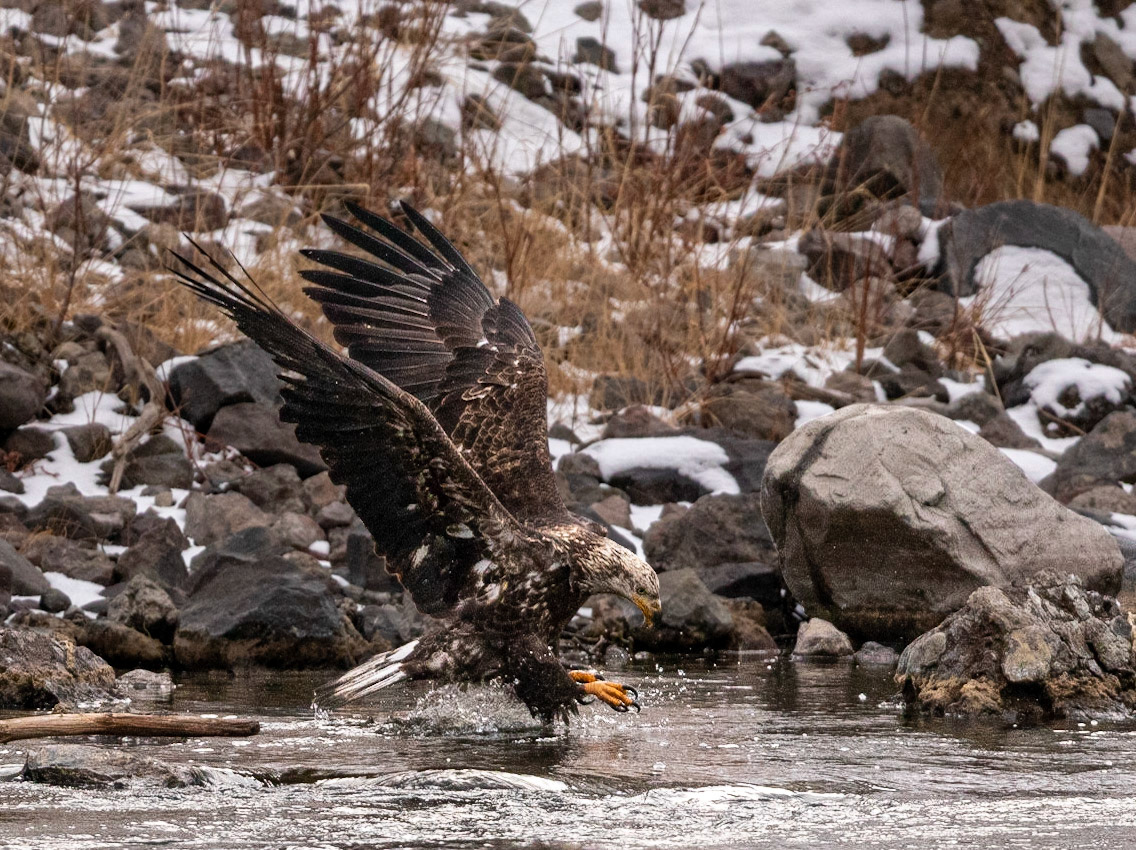

Once again, a little bit of patience, stealth, and persistence with tracking allowed us to witness a juvenile eagle fishing by the side of the river. With no other humans to distract it, we saw it plunge into the freezing waters in what seemed to be a rather clumsy attempt at rinsing its wings. I was stunned when it came back out with a fish in its talons - I'm certain that if I had plunged into the water the same way I would have come out bruised, wet, cold, and empty-handed. Then again, my life doesn't depend on me being able to catch minnows that way.
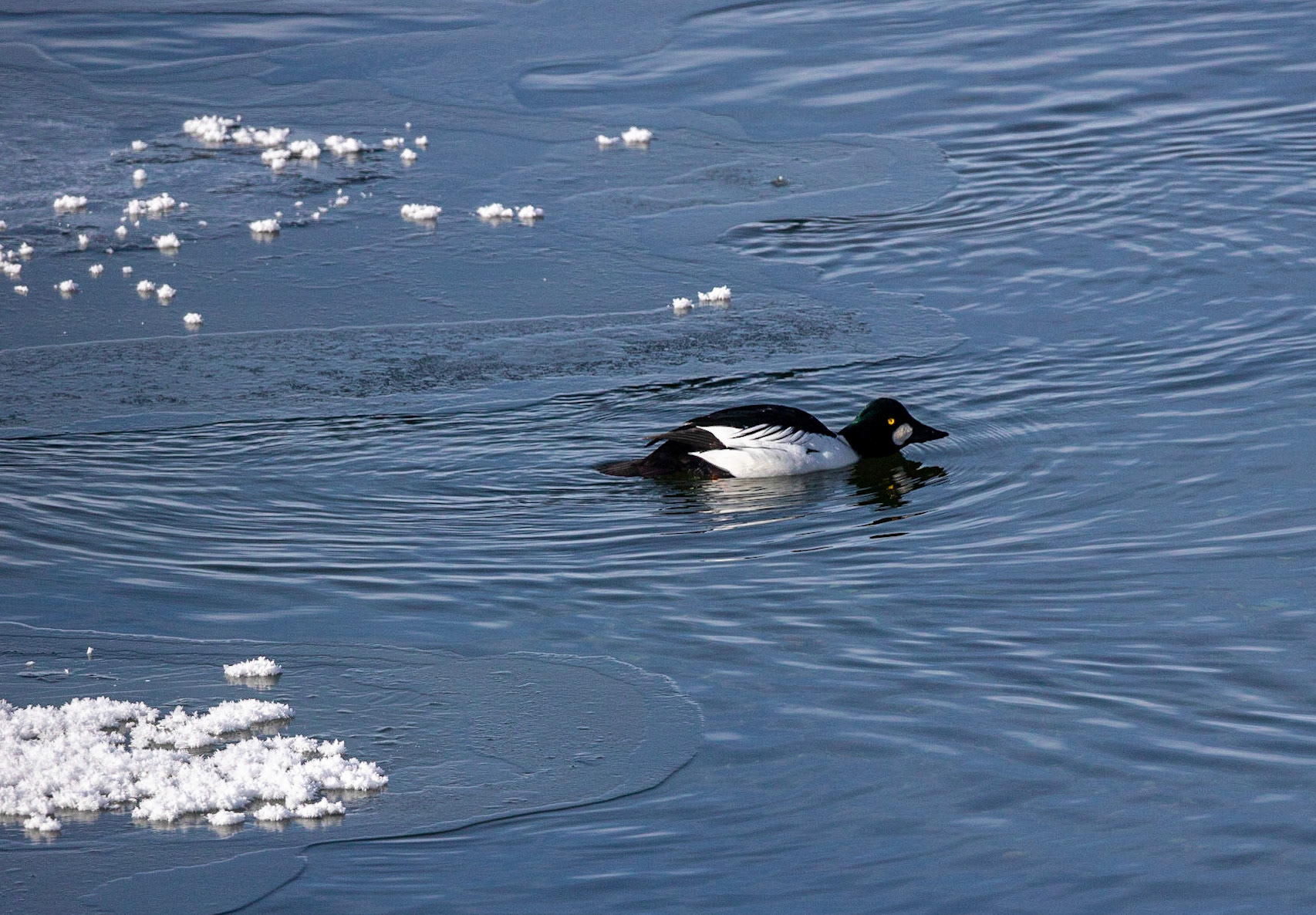
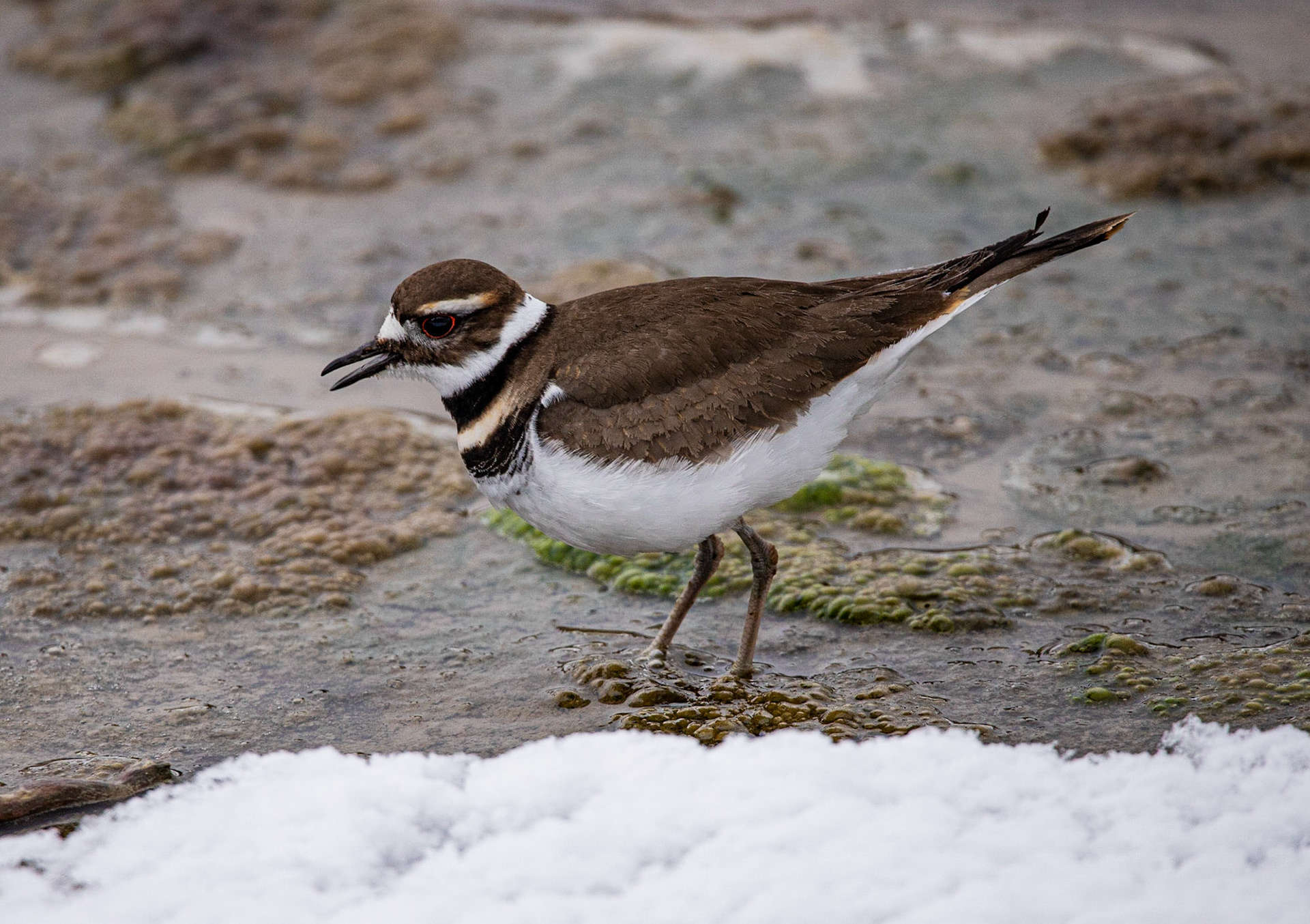
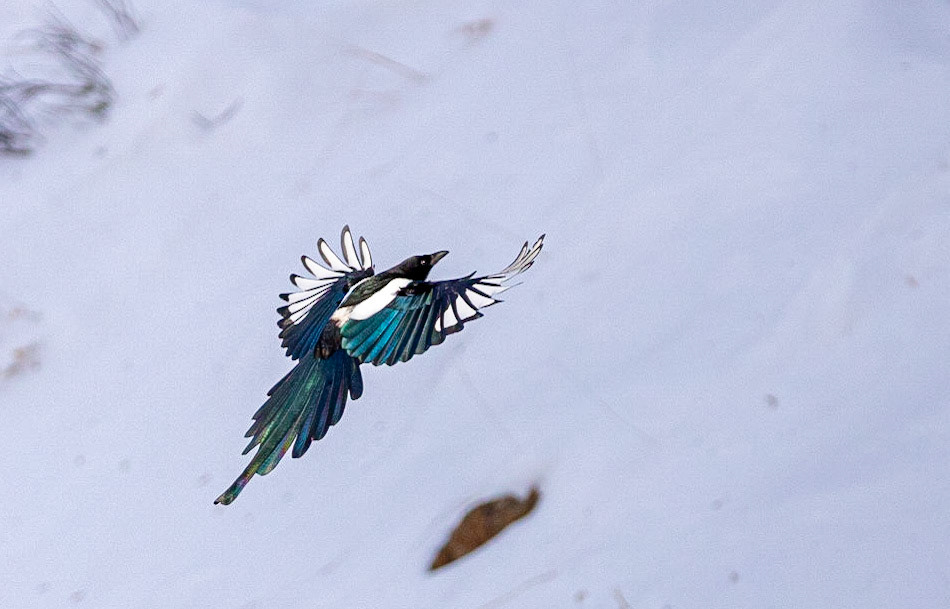
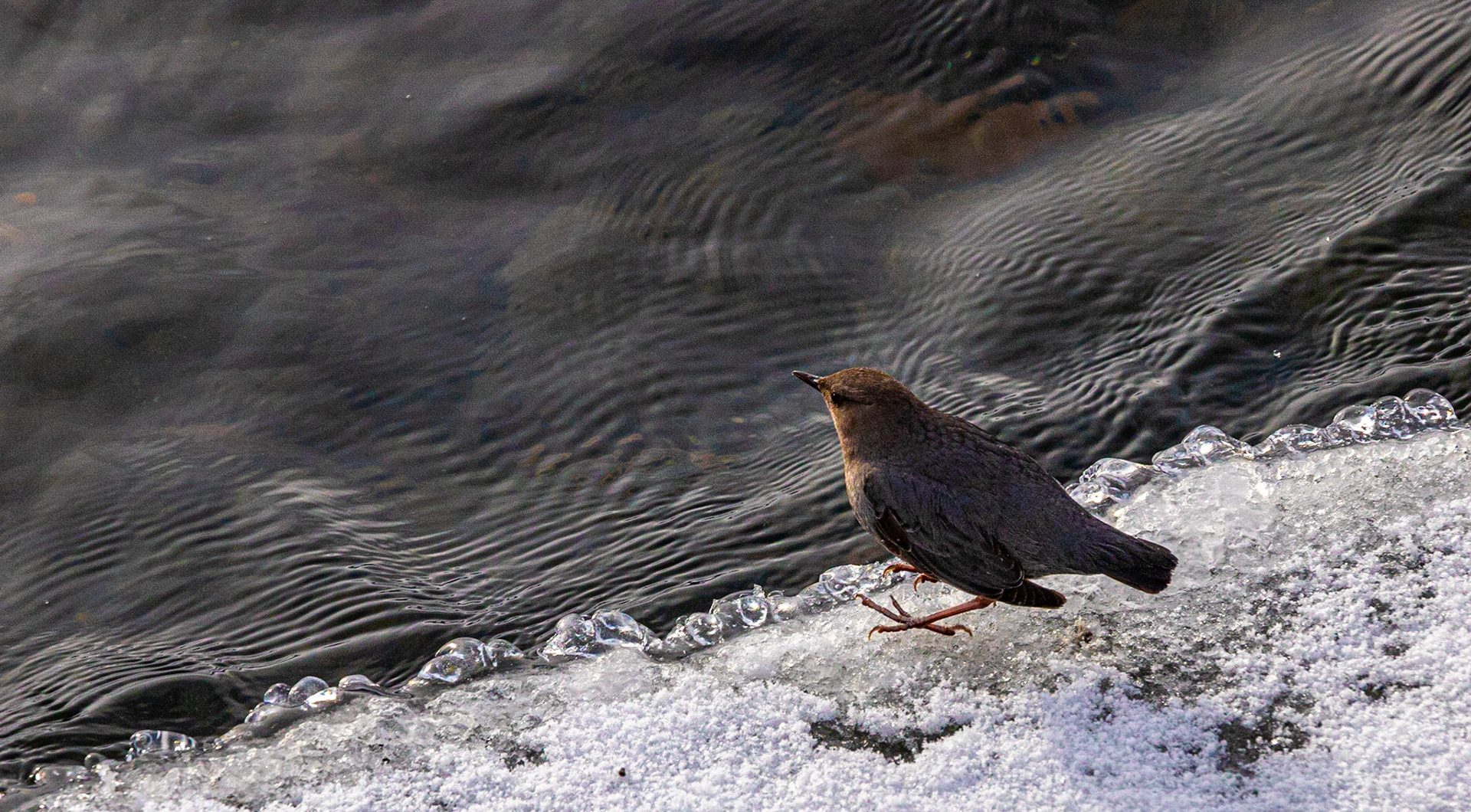
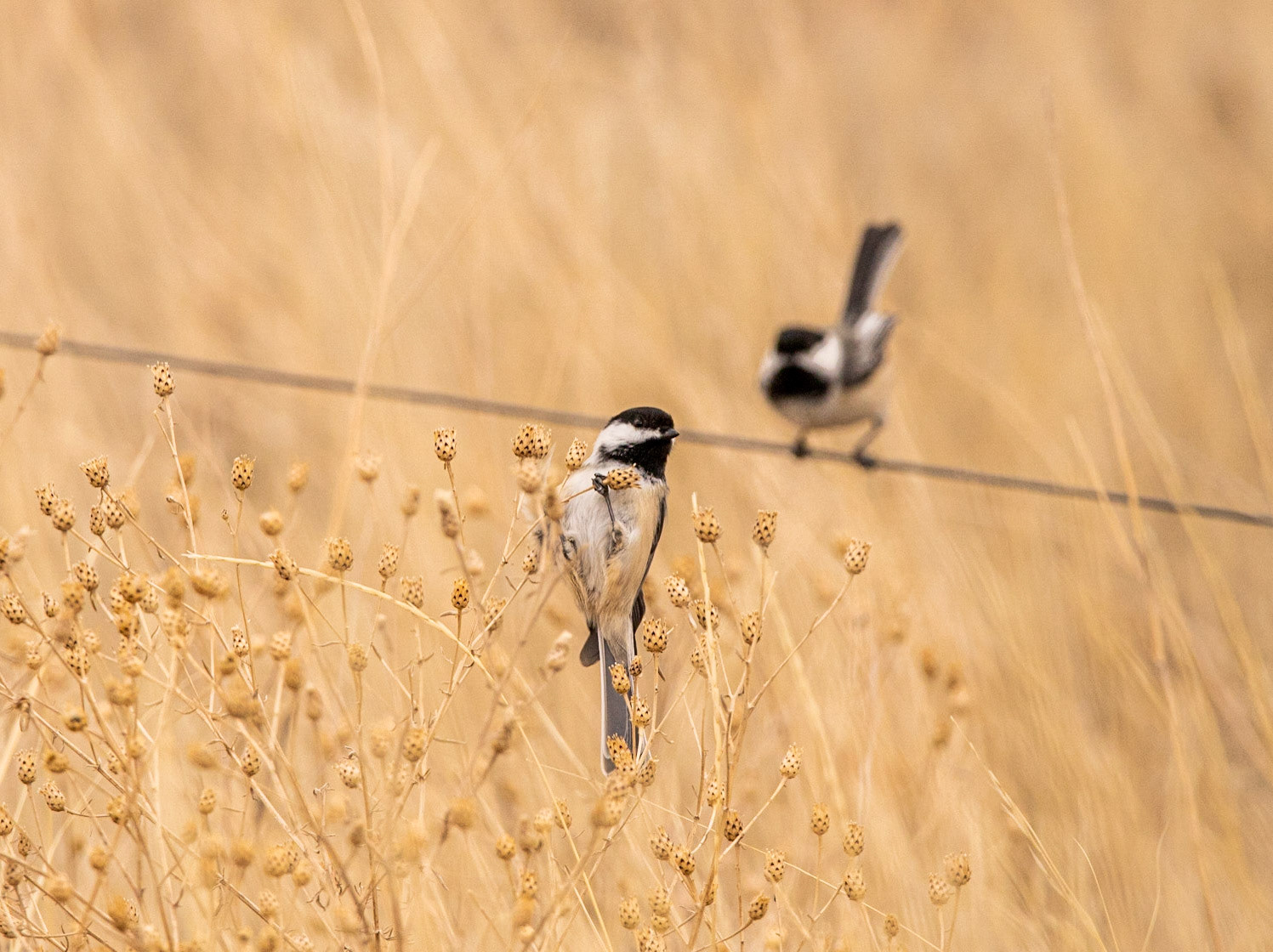
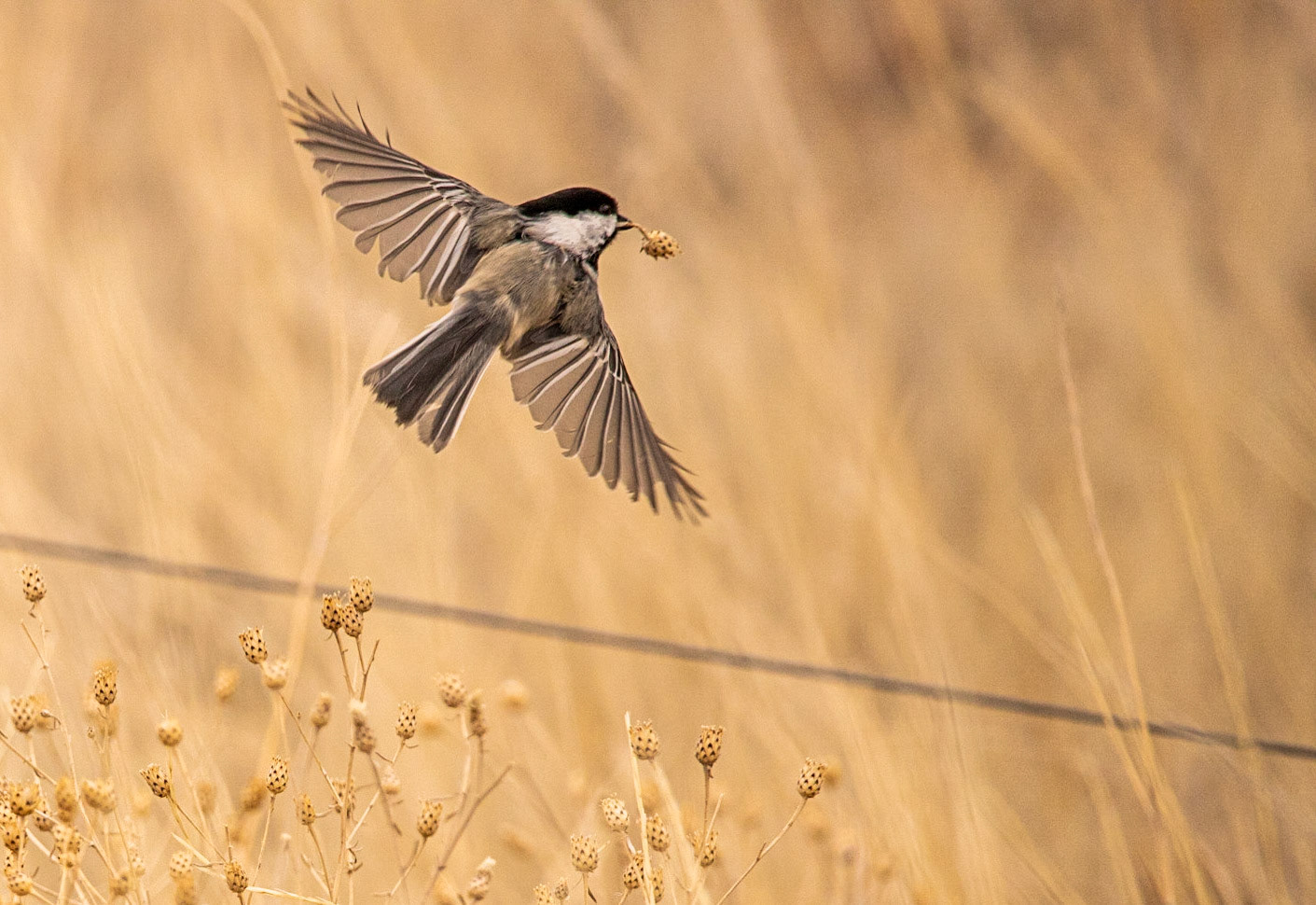
The smaller birds are just as fascinating even if they don't get the same level of attention as the big carnivores. Magpies, for example, are not only pretty in flight but also happen to be one of the most intelligent animals on earth. I was also fascinated by the chickadees - tiny birds that seem to have had a little too much caffeine. I decided to shoot a few haphazard pictures of them along a fence. What had seemed like crazy pointless fluttering turned out to be a sophisticated process of choosing and collecting the best dried flowers from a nearby tuft of grass to take back to their nests. I only realized what was happening after looking at my shots - another reason I love photography. I wouldn't have turned my head if I did not have my camera, and the ability to freeze the action gave me insights I would never have guessed.
Gallatin Forest
Just outside of Yellowstone lies a beautiful park you should not neglect to explore if you're in the area - the Gallatin forest valley. It is dotted by small farmsteads and ranches between little towns and crisscrossed by lonely dirt roads leading into the distance. We were very pleasantly surprised with our initial quick drive through the area and came back several times to see if we could discover even more. In fact, I dare say we spent a third of our time in northern Yellowstone in this valley instead of the park proper.
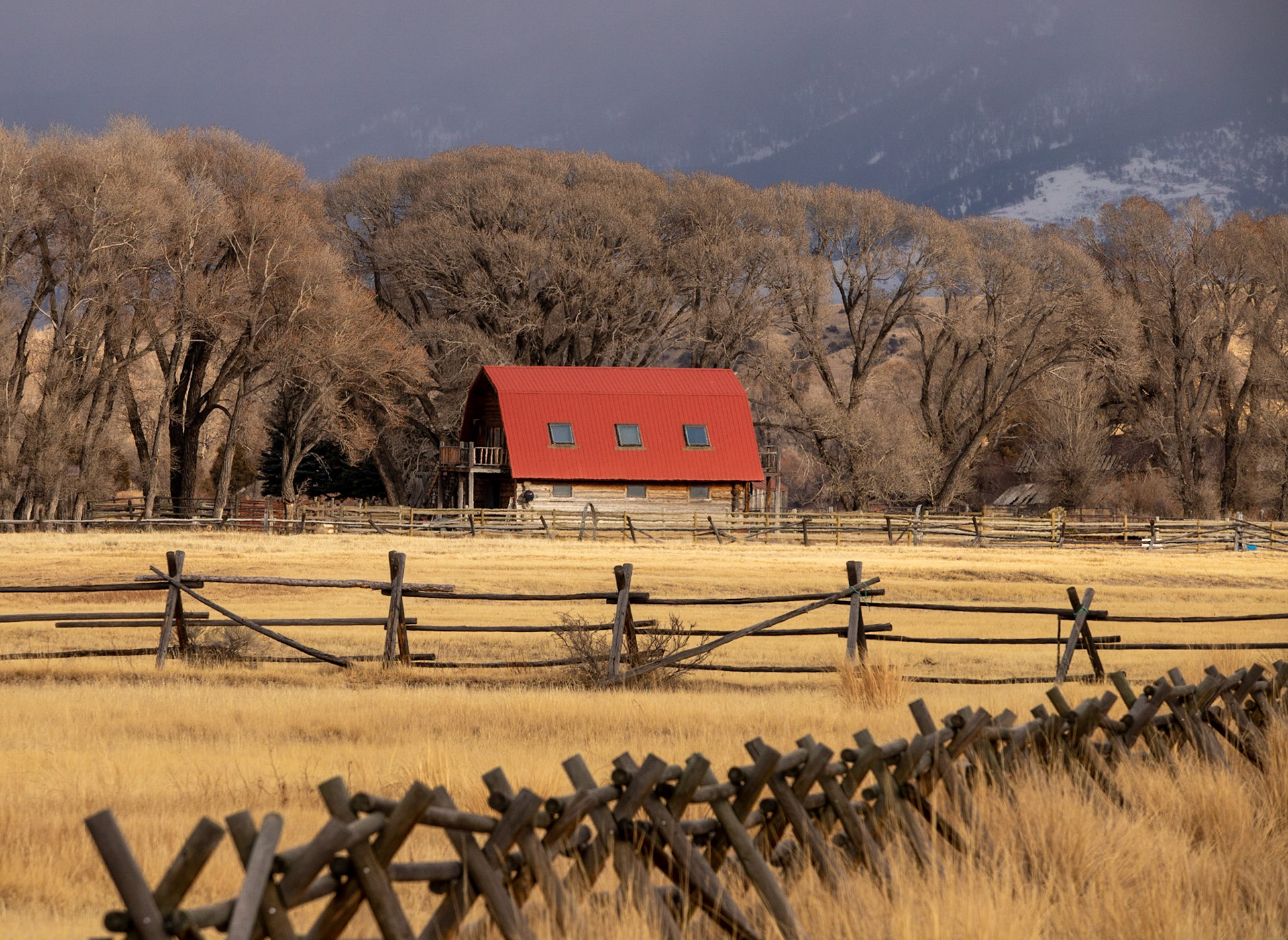
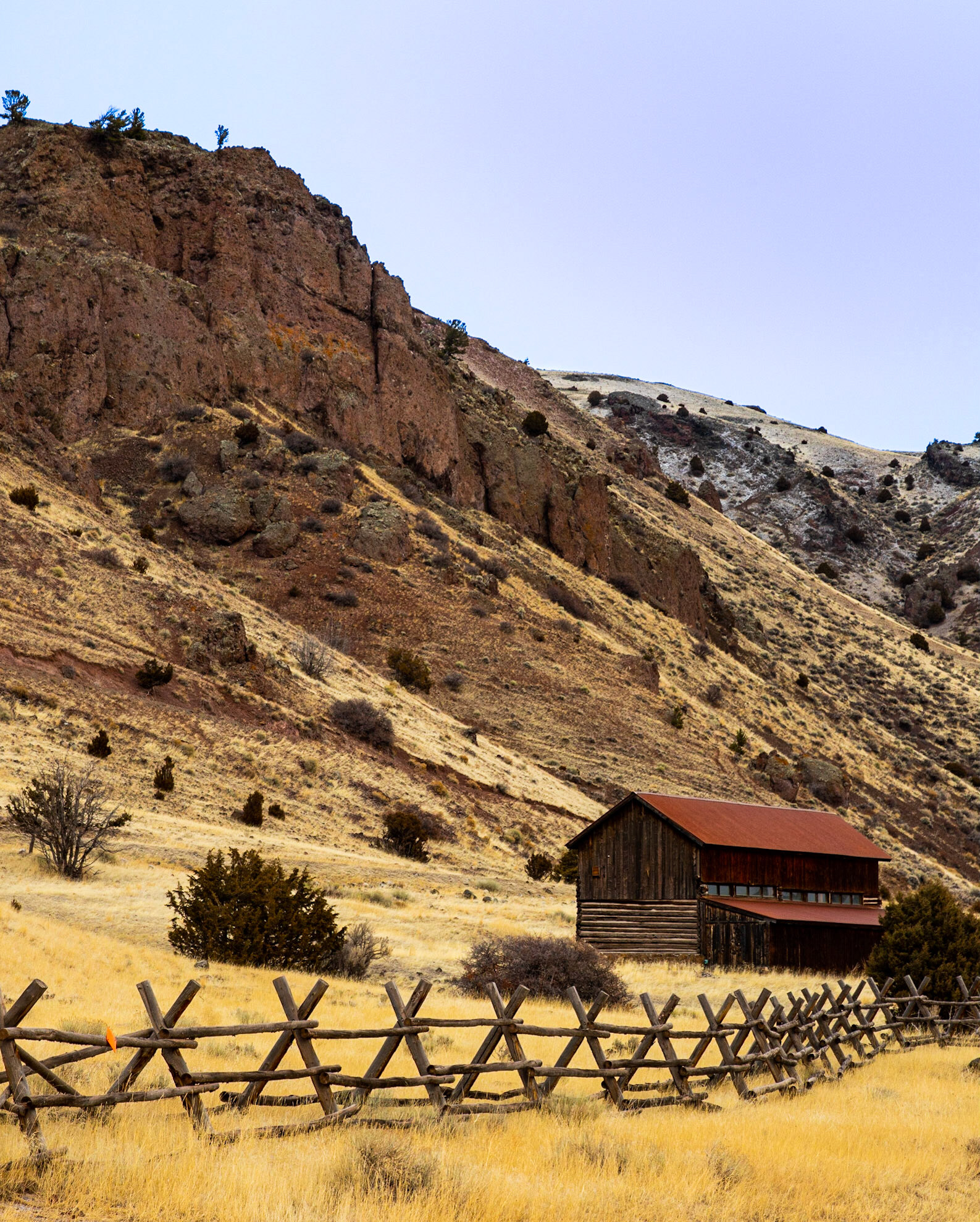
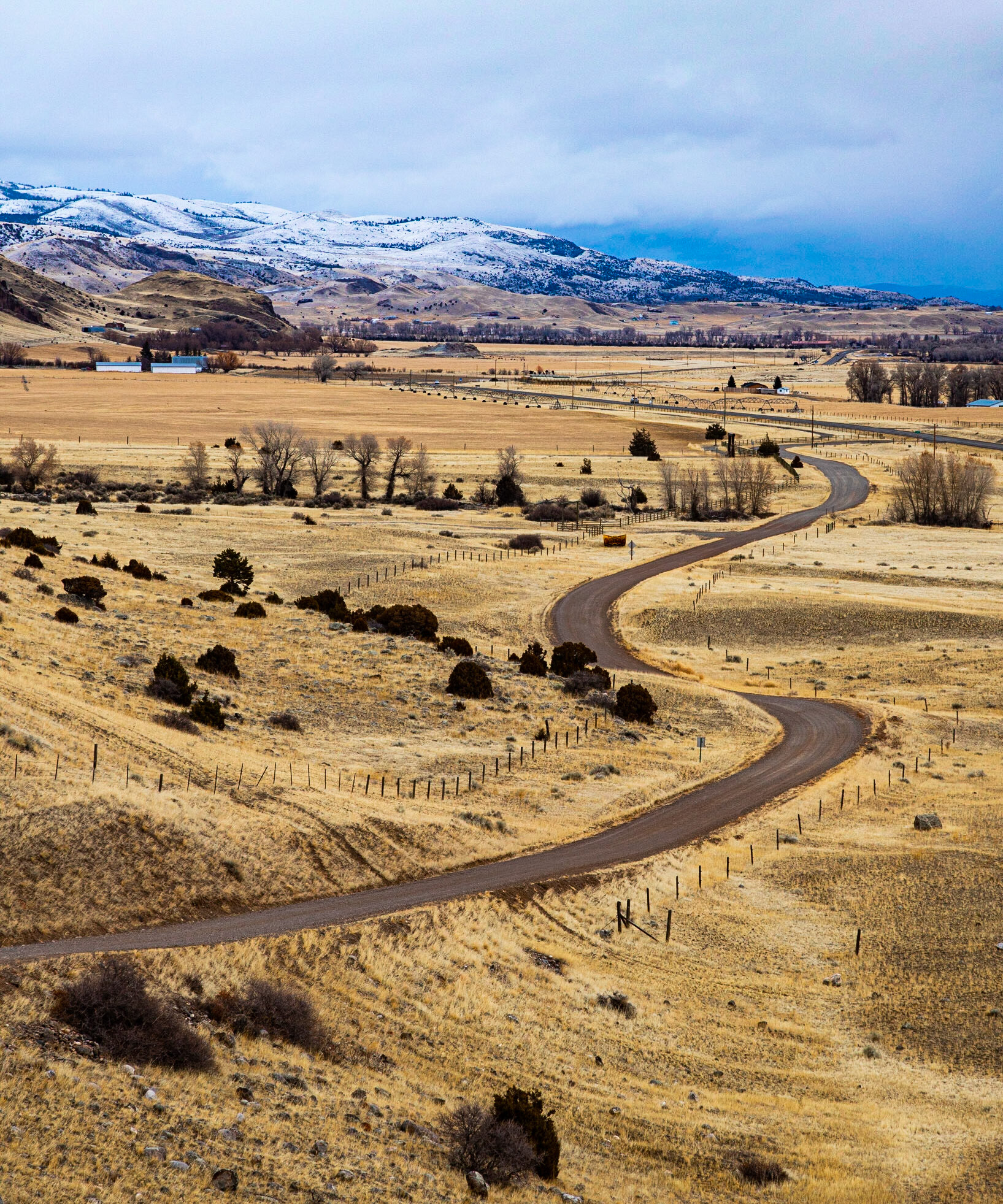
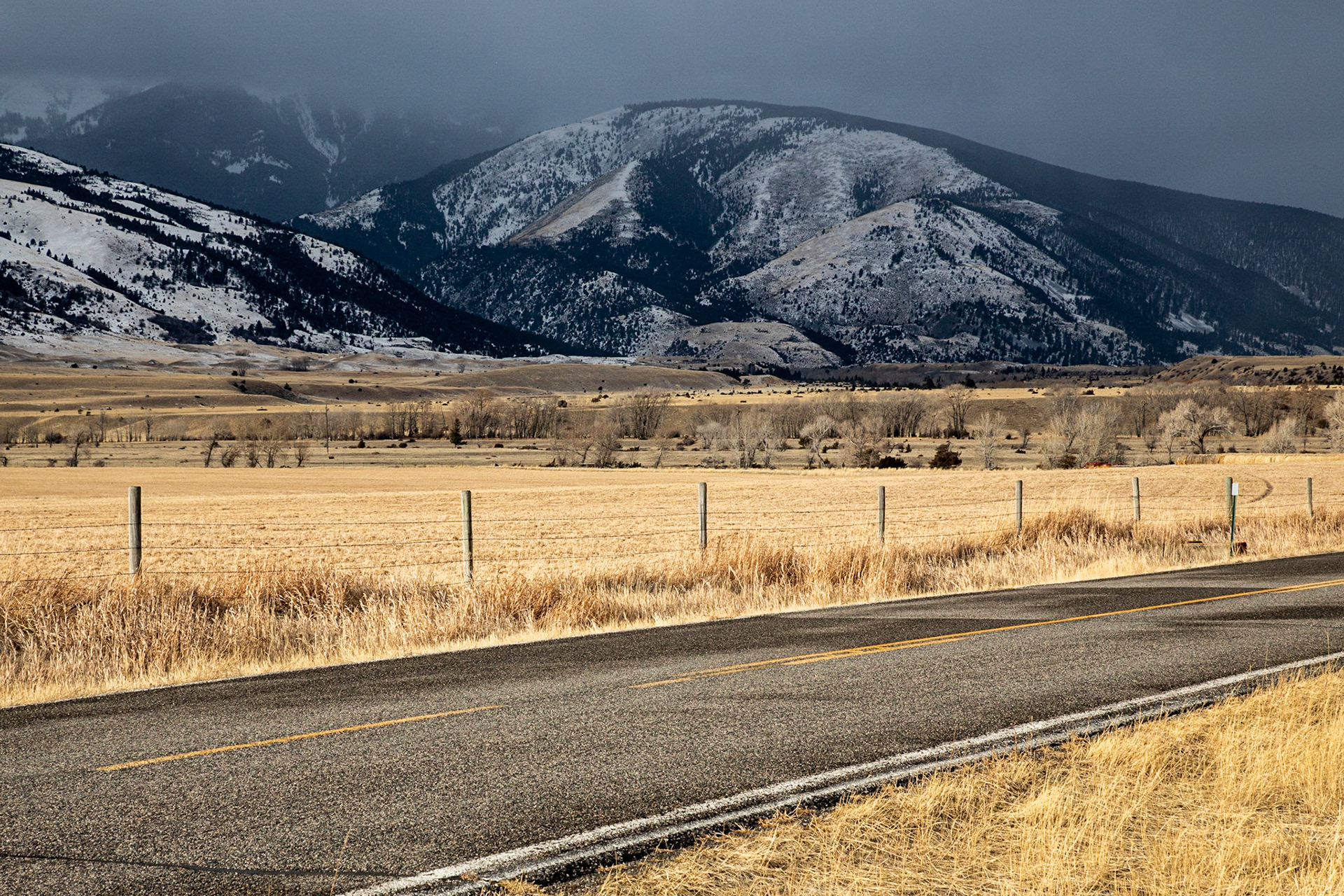
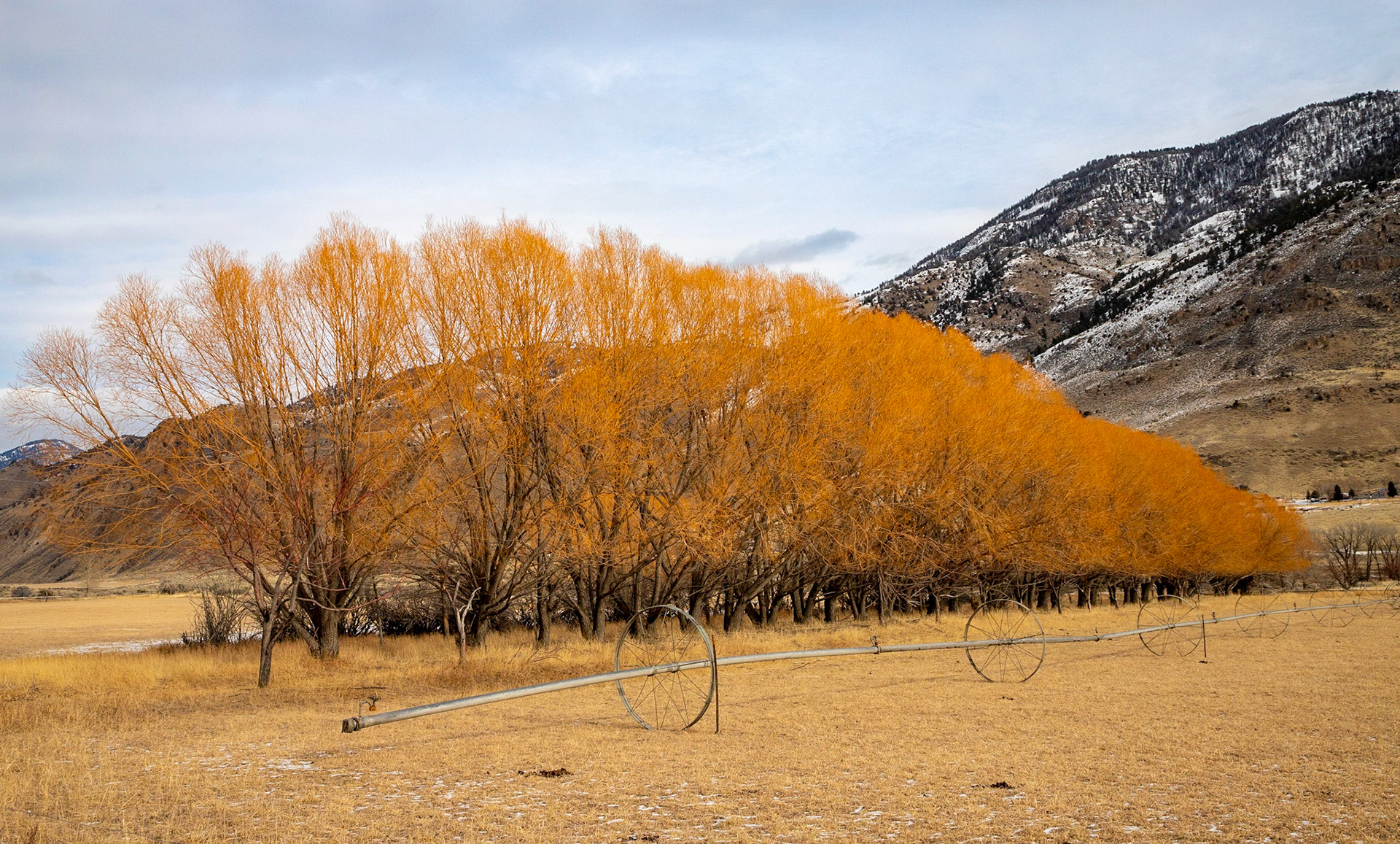
This is where most of our bighorn sheep, pronghorn, deer, and bird sightings occurred. In fact, each time we went through, we saw at least two eagles and a bunch of deer along the way without even trying. The trick was to go off the main road and creep along near the cliffs and fields. With fewer humans bumbling about, the wildlife is much easier to see and enjoy. I have decided that my second home will be a ranch with steep cliffs so the pronghorns and bighorns can scamper about willy-nilly as I watch from my windows.
Bouncy Things
Besides myself, a few other mammals bounce around the countryside. Elk graze along rivers while mule deer creep away shyly. Pronghorns tear across the golden grass plains away from some perceived threat as bighorn sheep stare down from their precarious perches many meters up in the jagged rocks. Presumably because they are delicious and everything in the park wants to chomp on them, these things are among the most challenging to capture in their wild state. Their sensitive ears and noses alert them of your presence long before you even spot them, camouflaged as they are against the background shrubbery. Most of our pictures were of a group of them staring right at us (trying to determine if we were a threat) or of their backsides as they calmly but quickly slunk away.
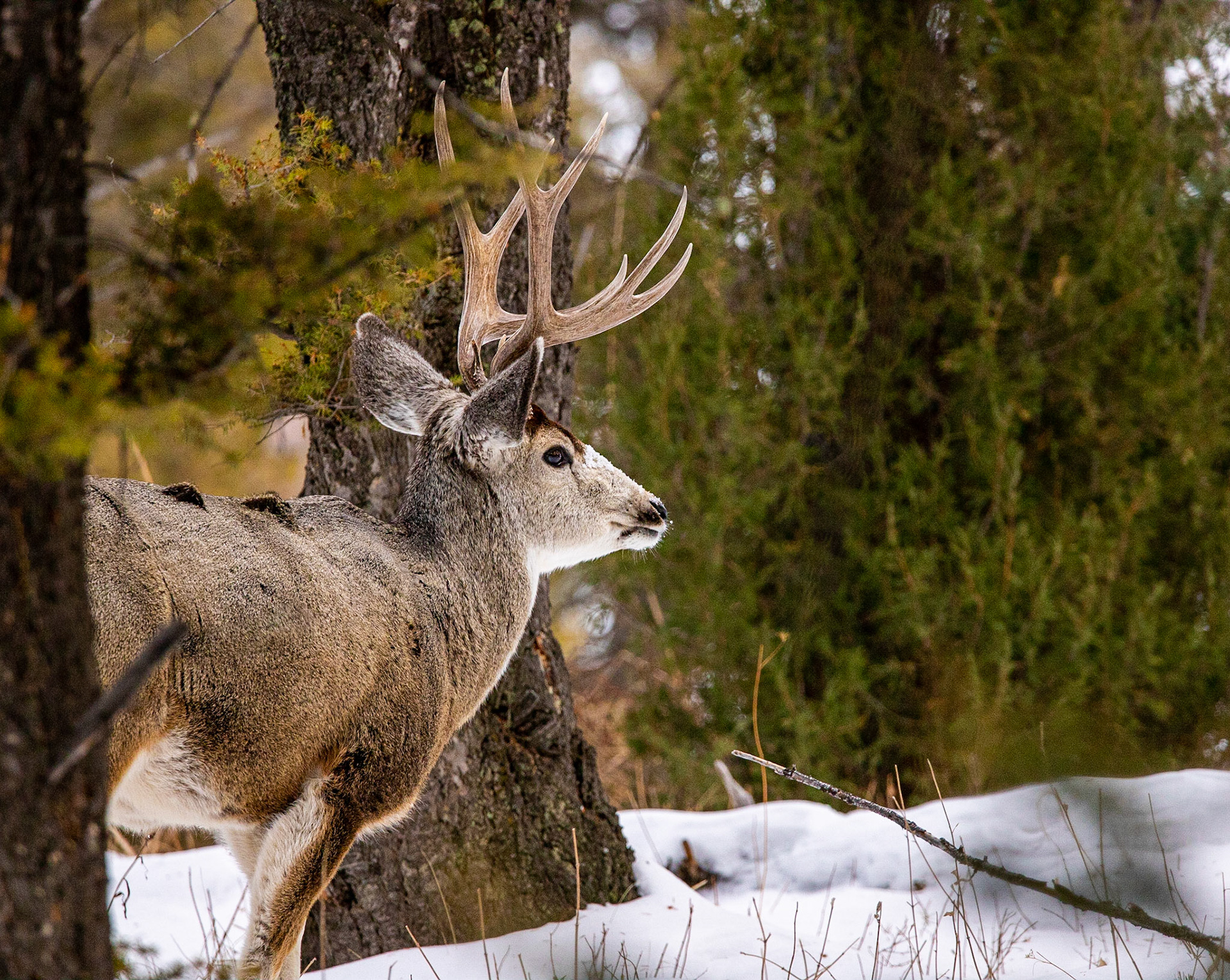
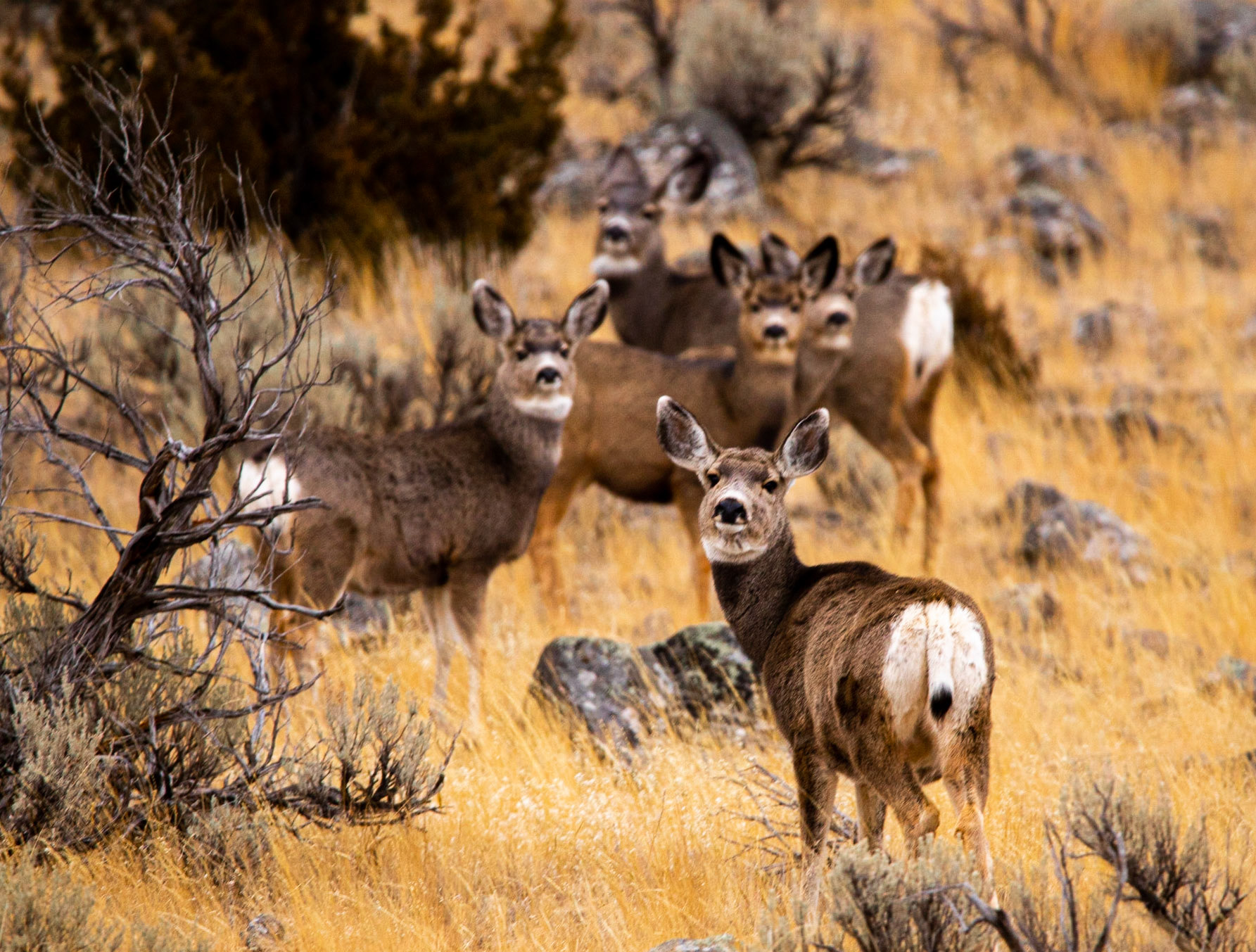
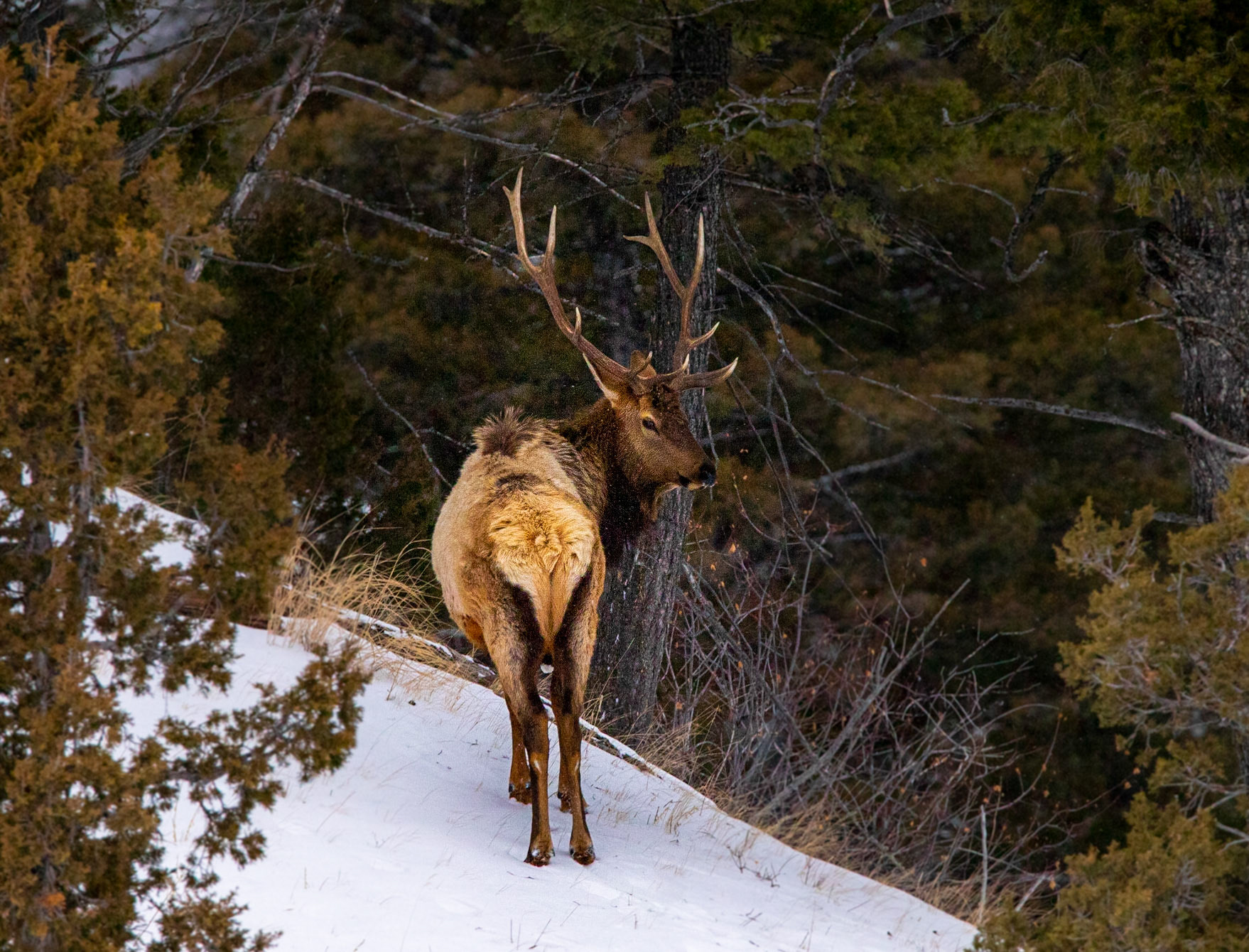
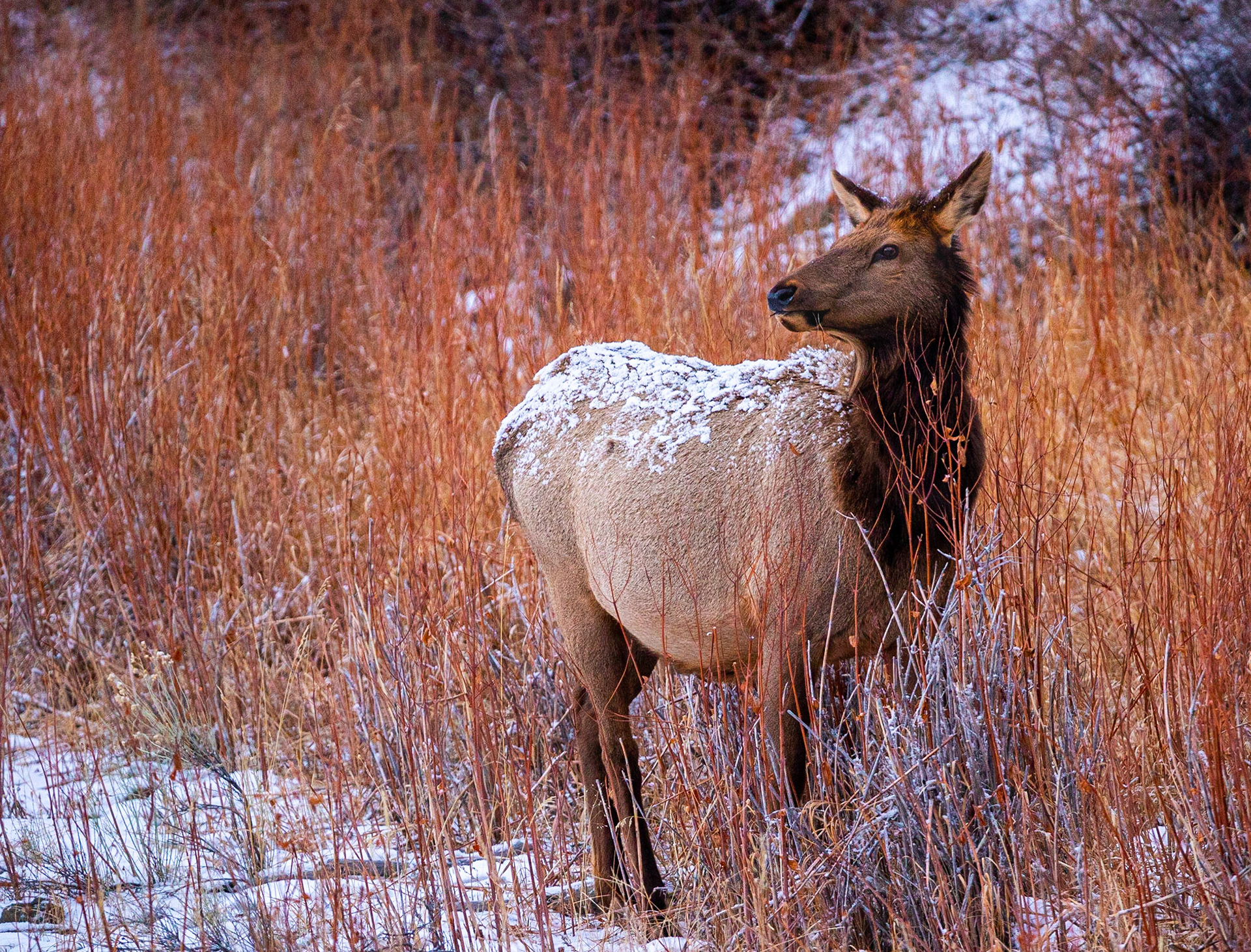
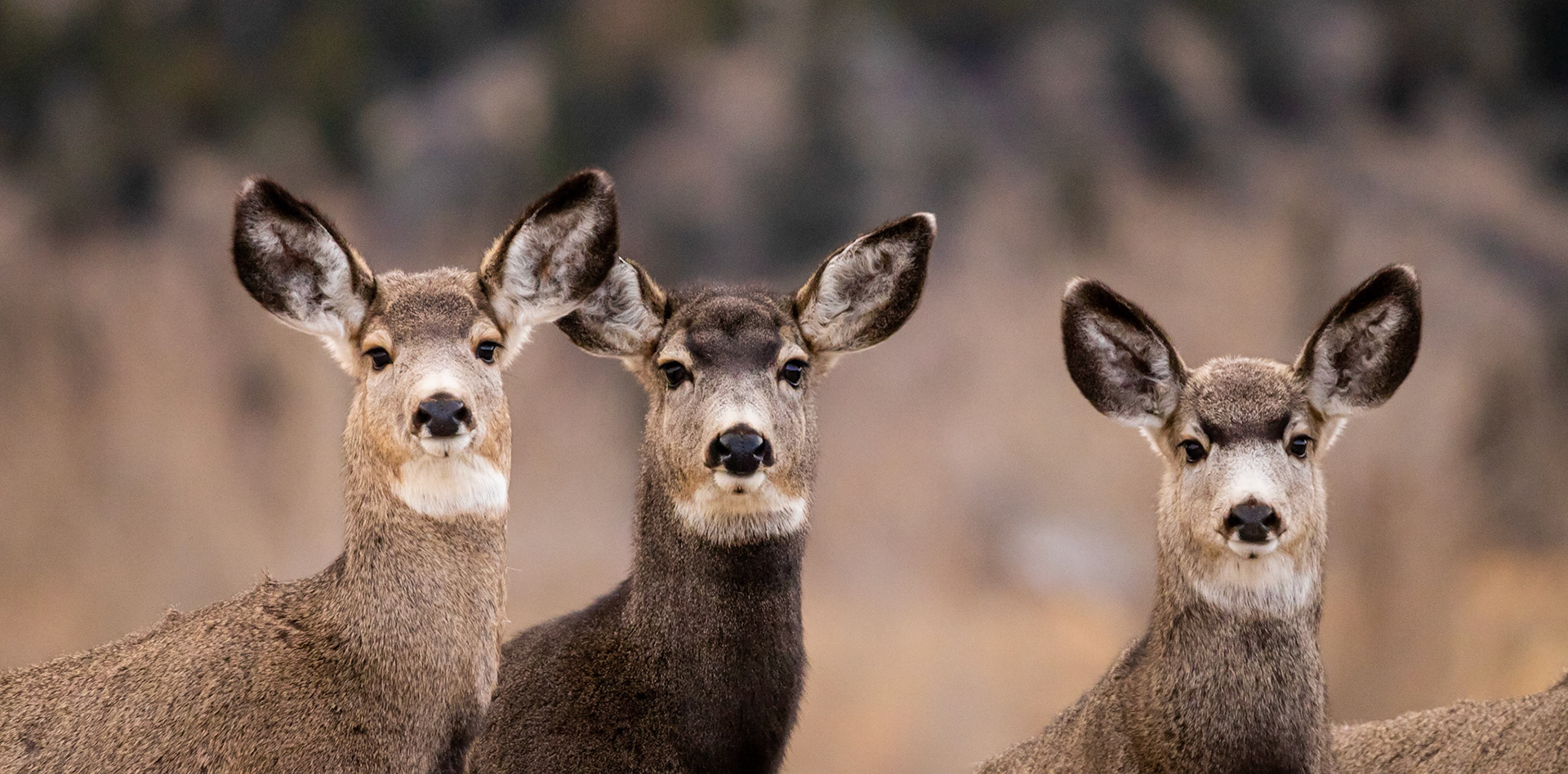
The best area to see these ended up being the Gallatin valley, but our most impressive encounter occurred just inside the north entrance to the park. We spotted a few bighorns along the top of a ridge near a hiking trail, so we grabbed our gear and headed up the path to see if we could get a closer shot. They must have seen us sneaking up because they started moving quickly along the top of the ridge and towards a large plain beyond the hiking trail. They ended up crossing the path just ahead of us, and we continued along the path a bit to where they had crossed so we could watch them disappear into the tall grass.
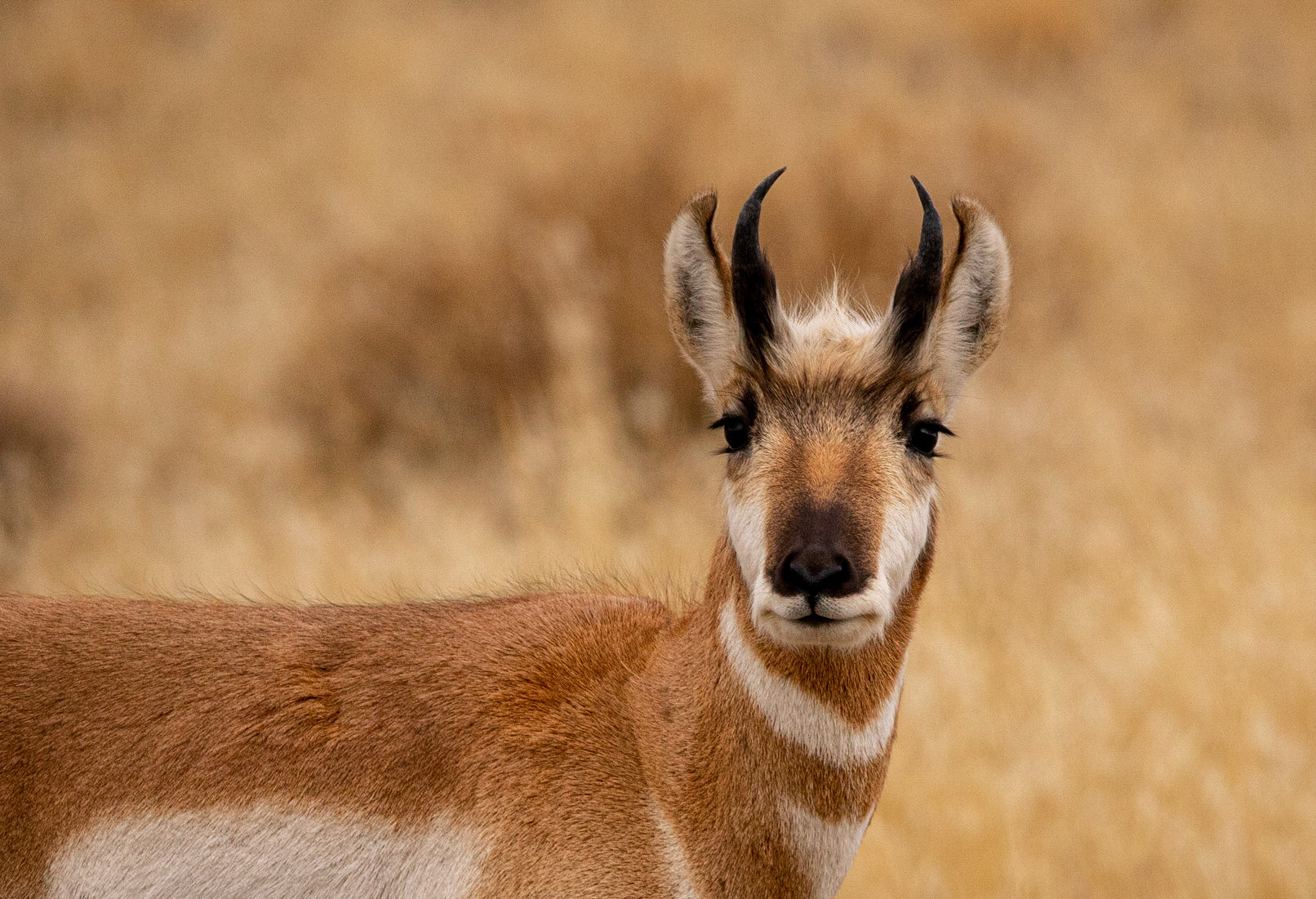
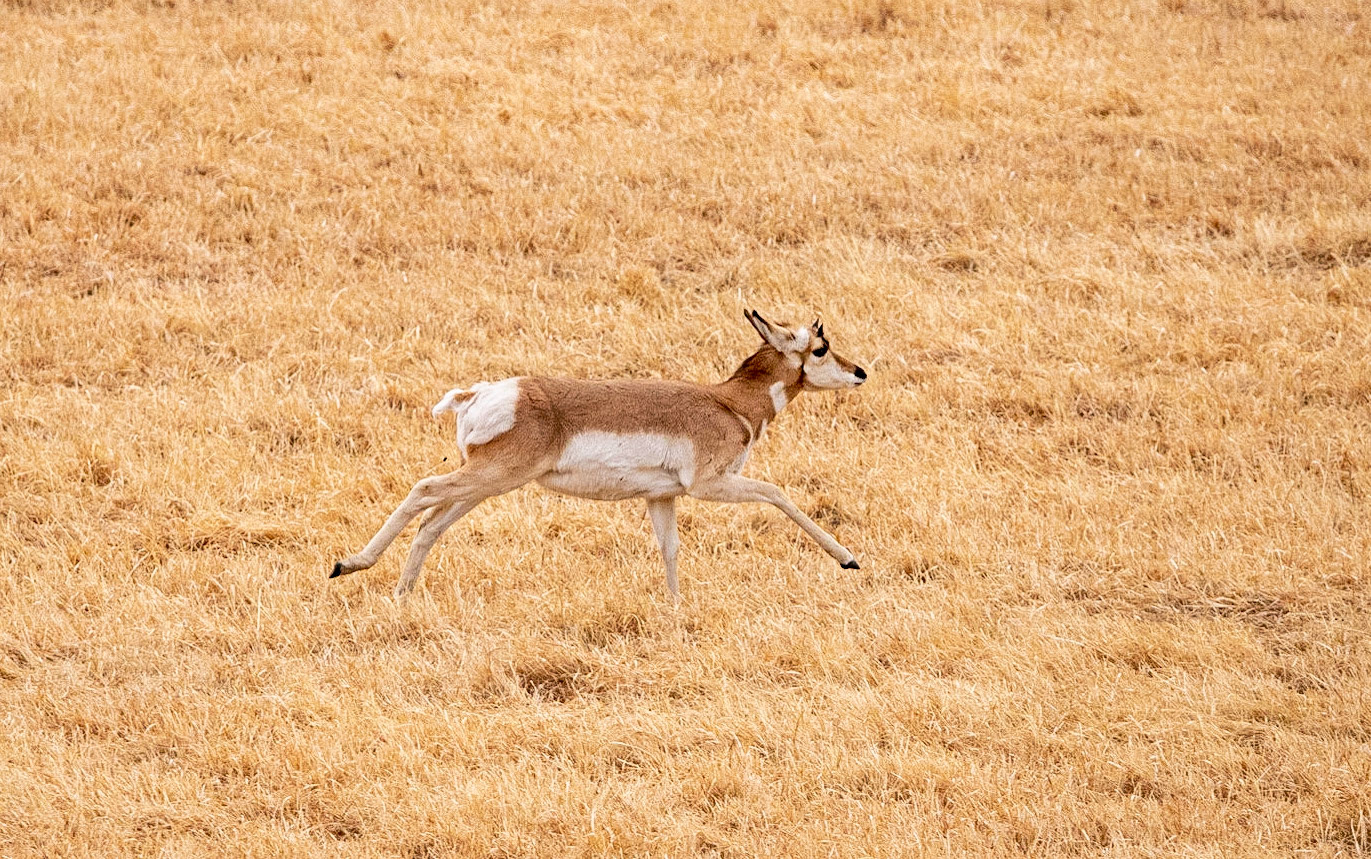

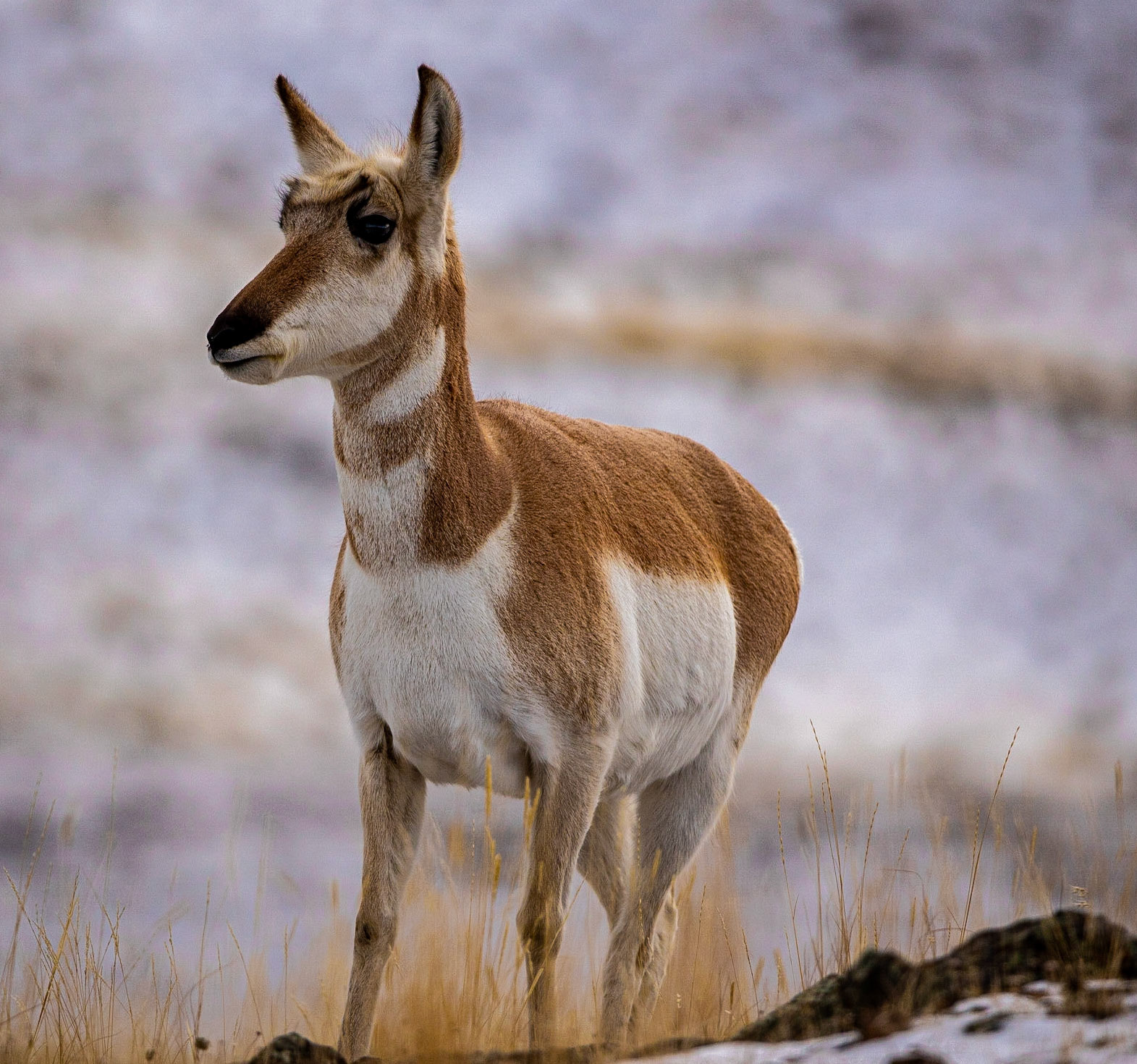
Just as we were admiring our shots, a sound behind us made me jump. I caught a glimpse of something large moving past us and exclaimed something I won't write here. It was a straggler trying to catch up to the others, and it basically glanced off of us on its way through. How this thing managed to sneak up on us so effectively, I will never know. My shame is undeniable. Though a little shaken, we still enjoyed watching it run through the field and rejoin its posse.
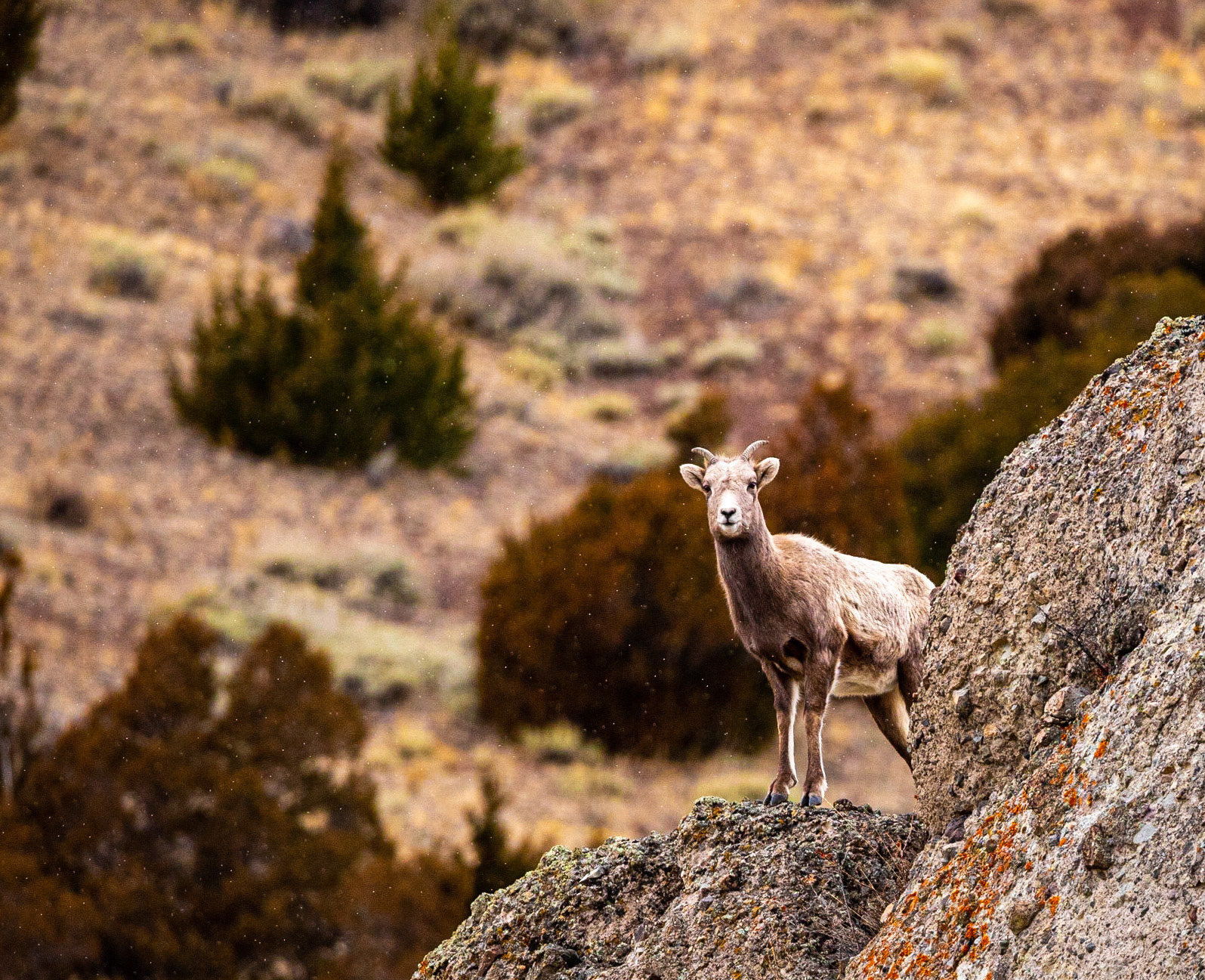

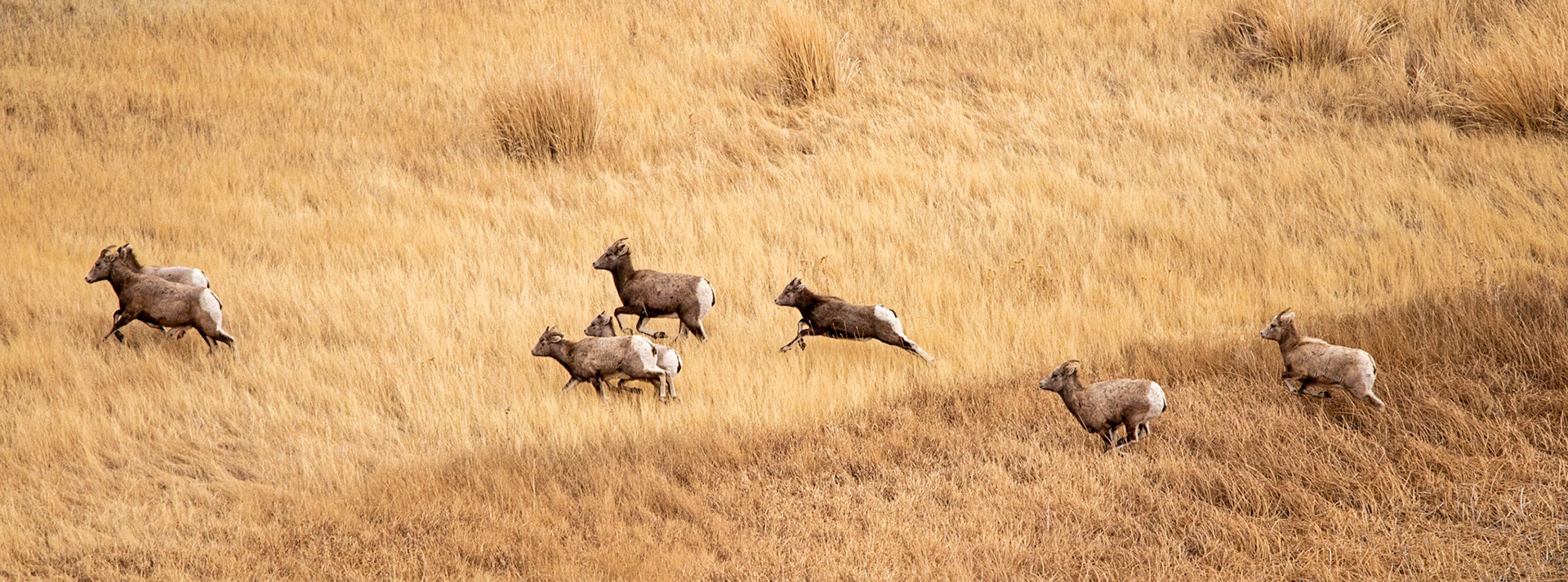
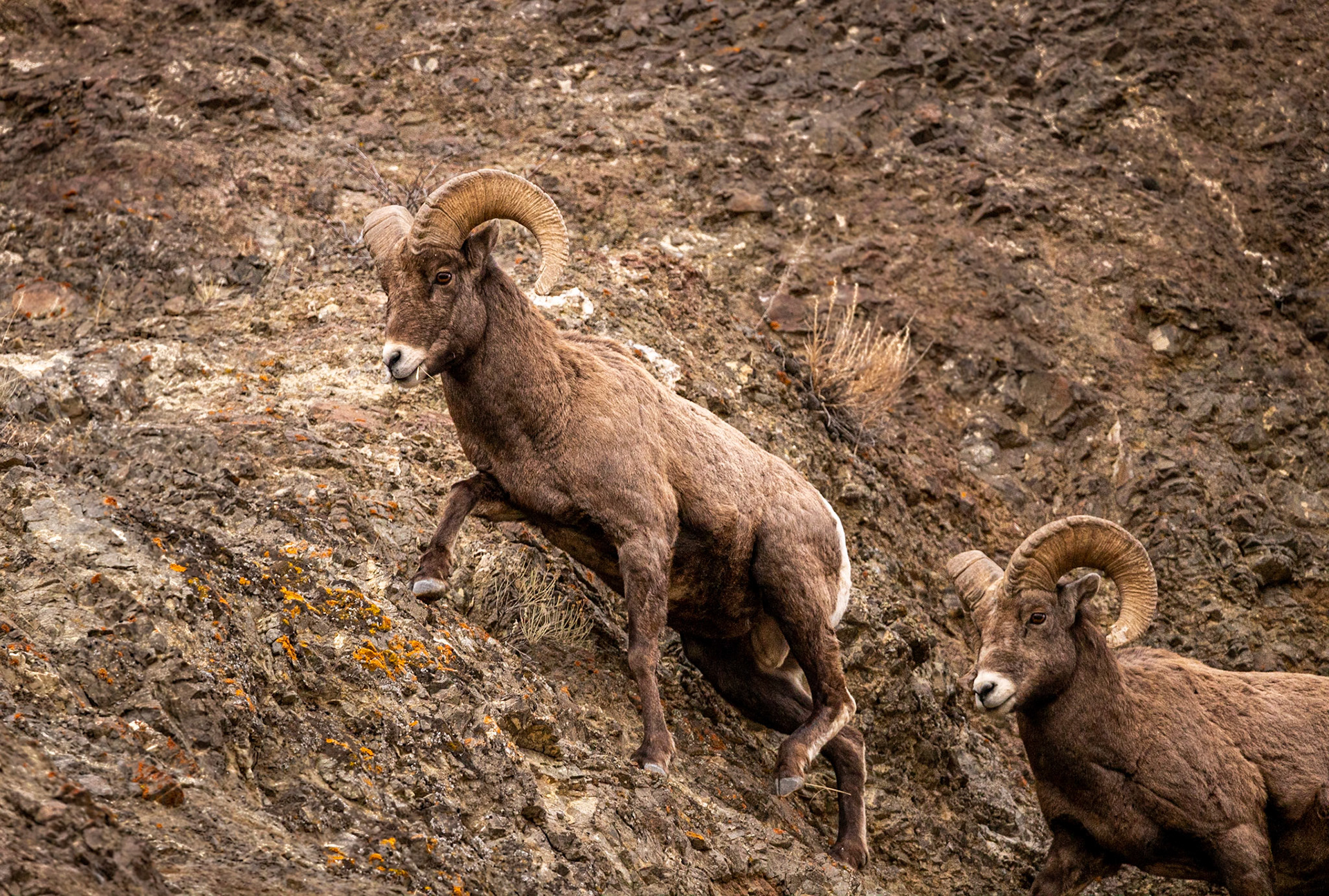
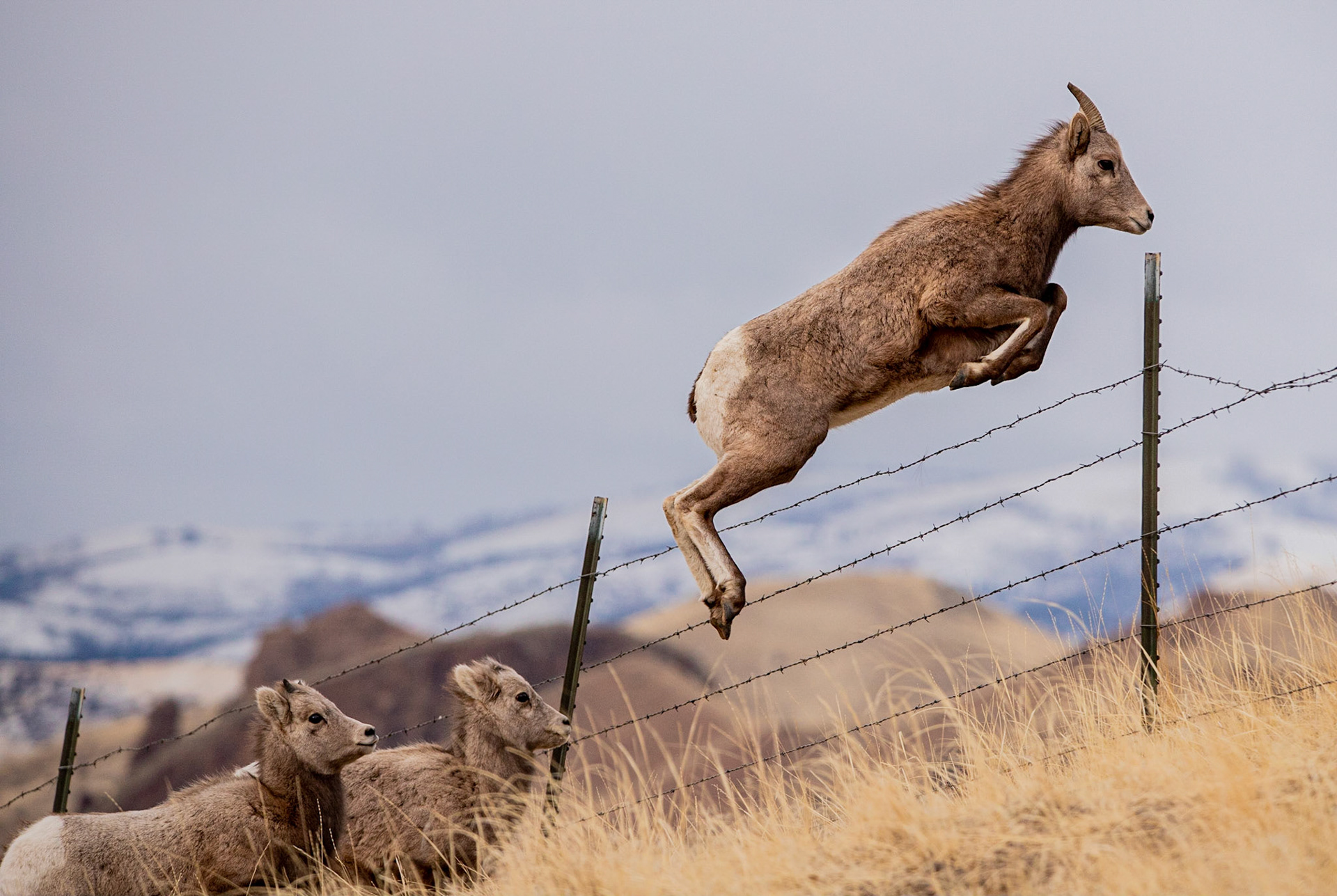
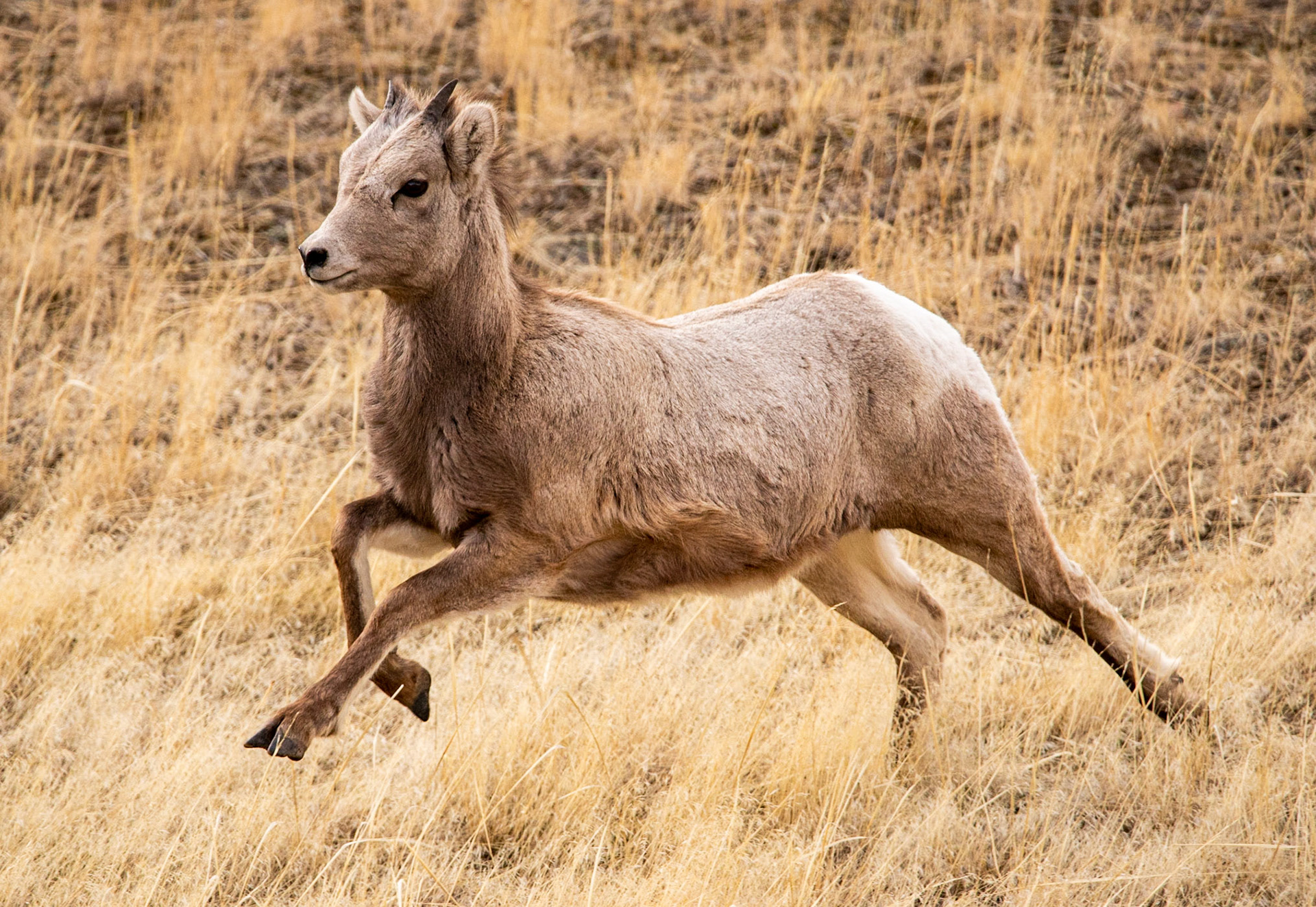
Norris, Canyon, Mammoth
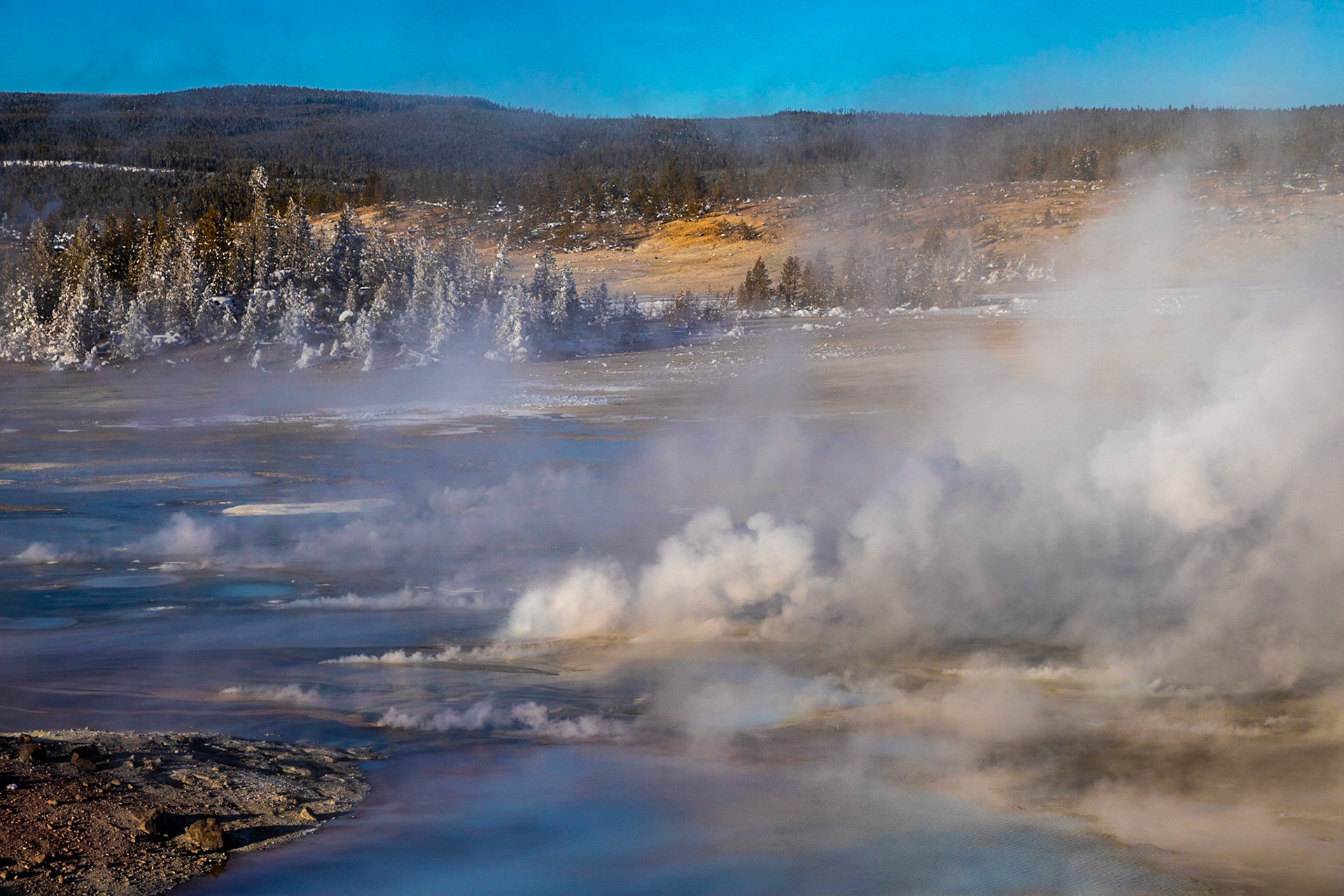
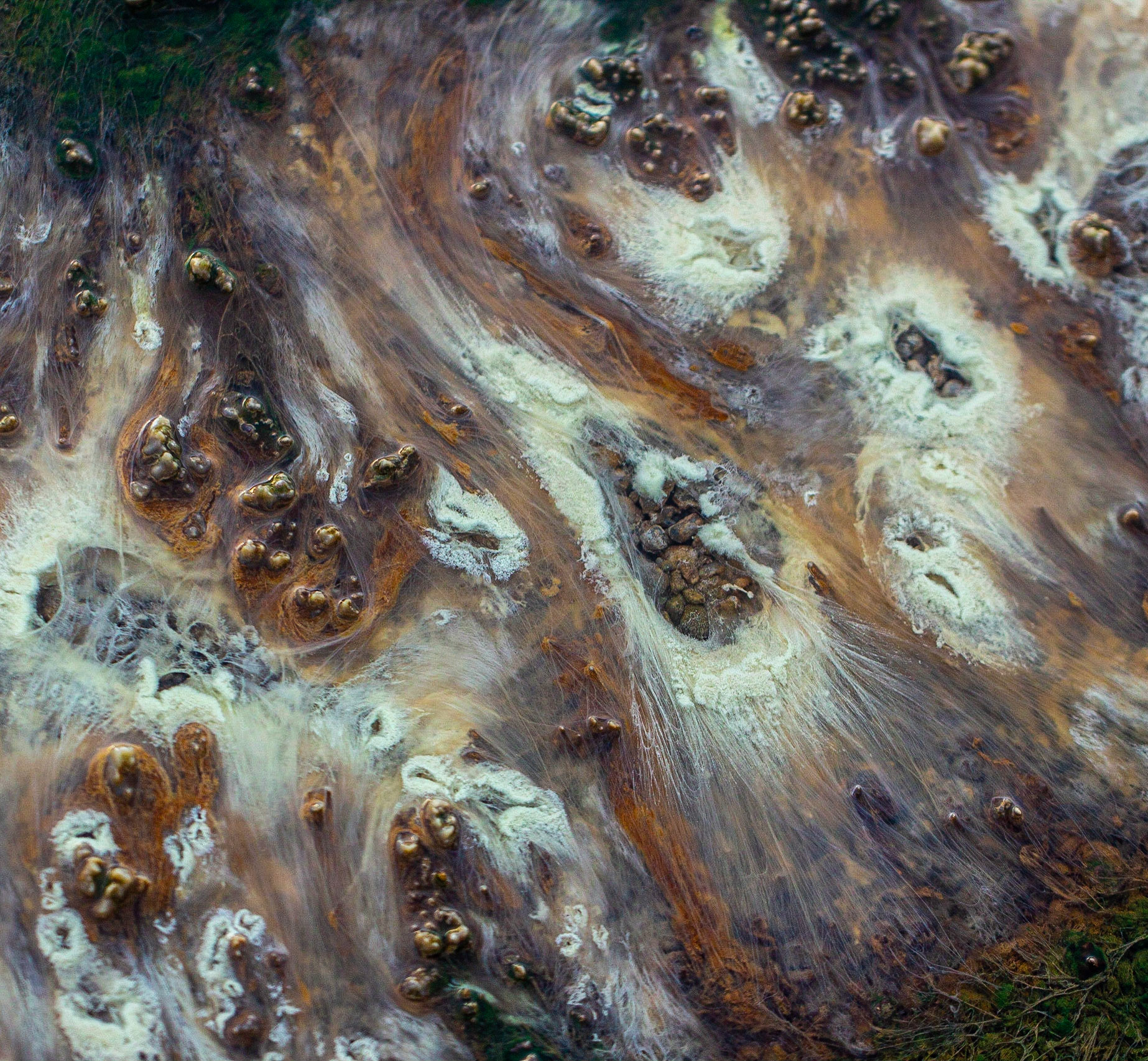
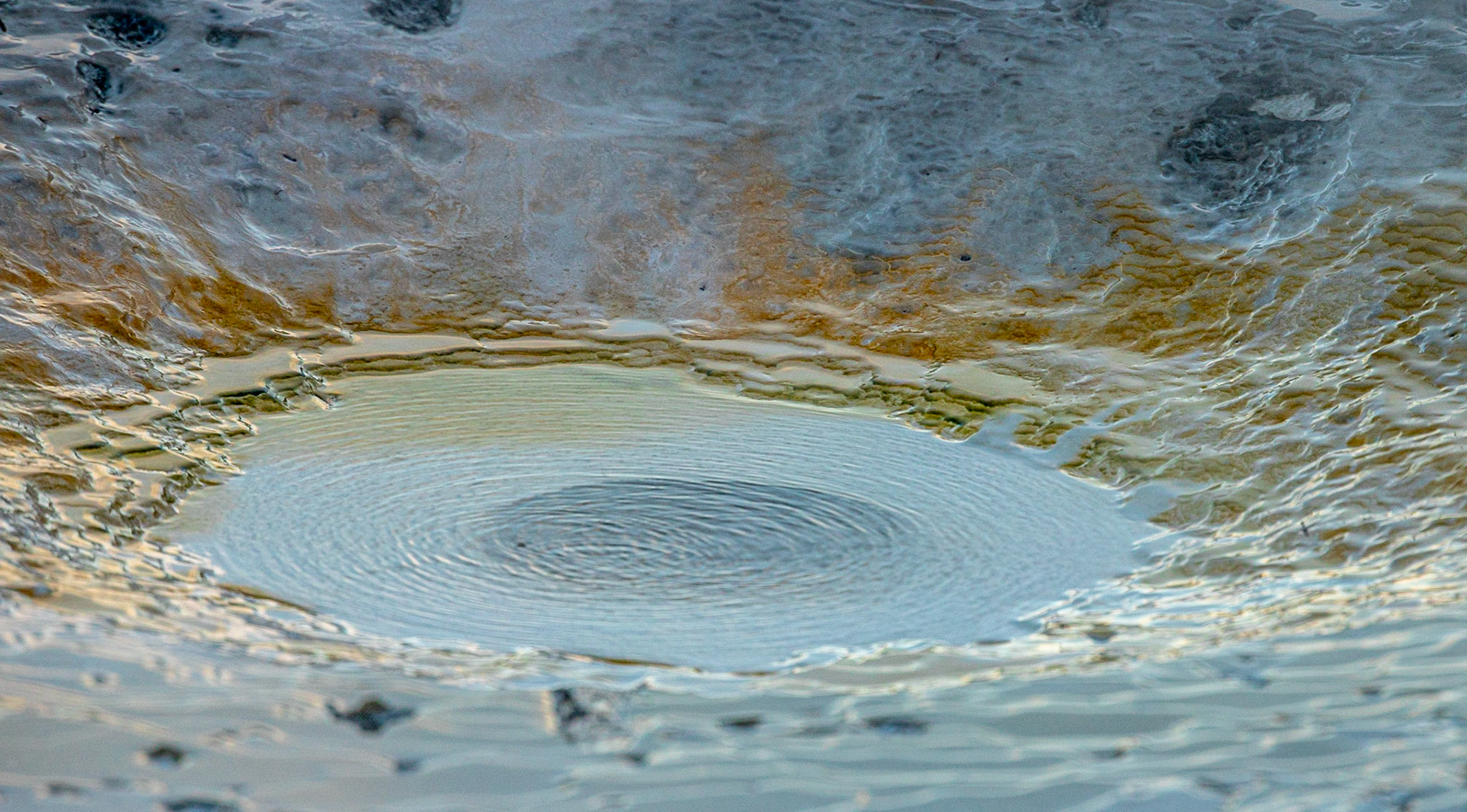
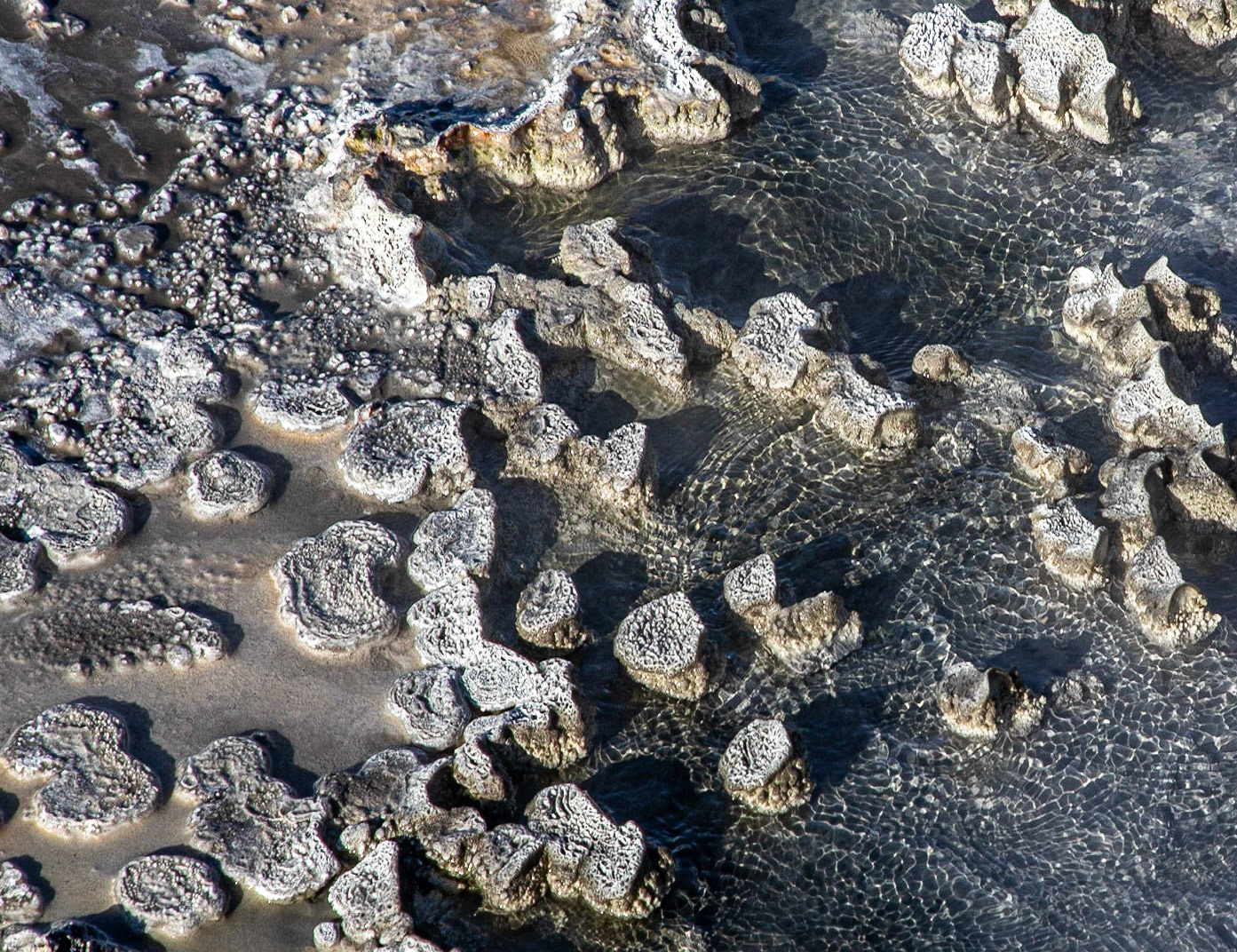
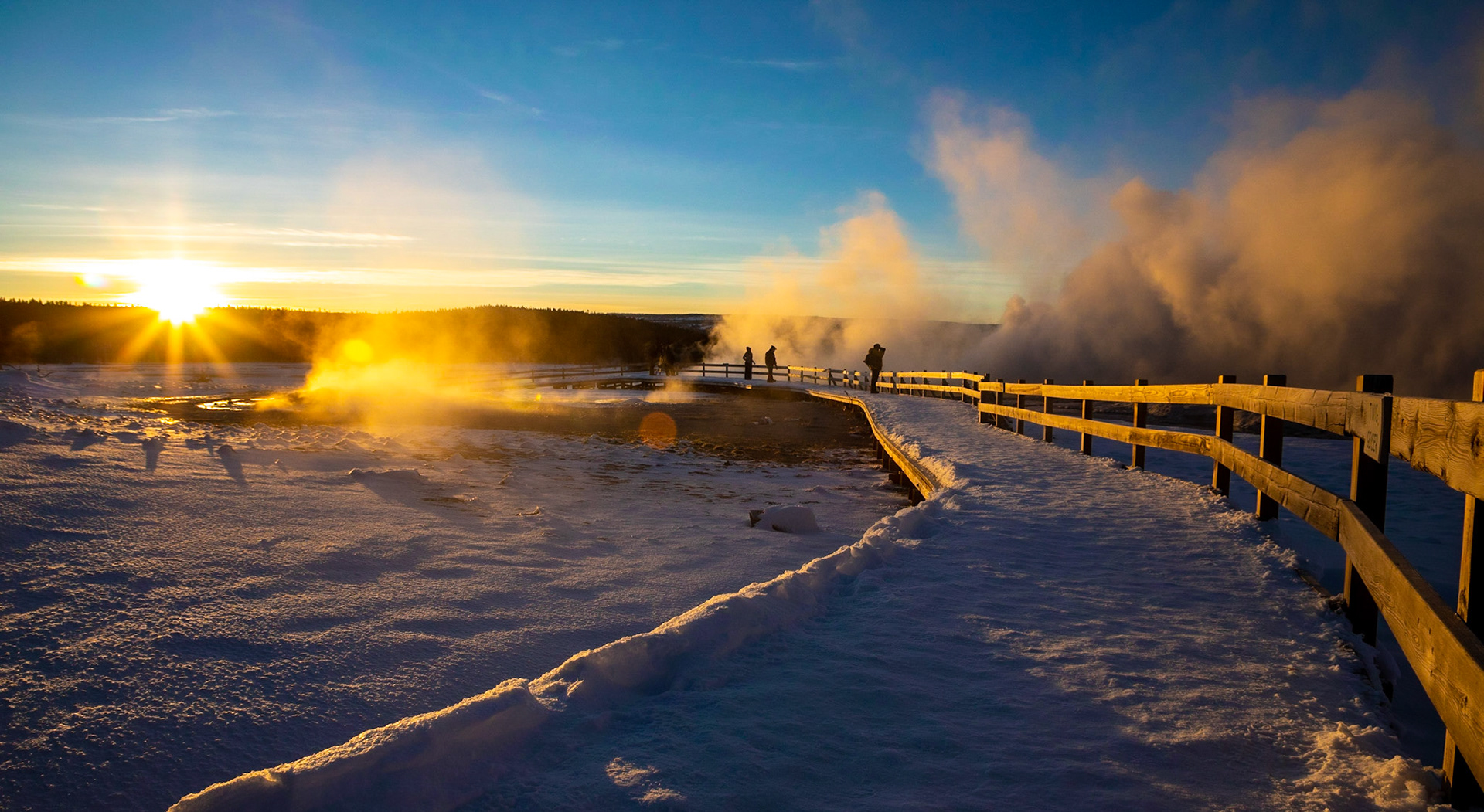
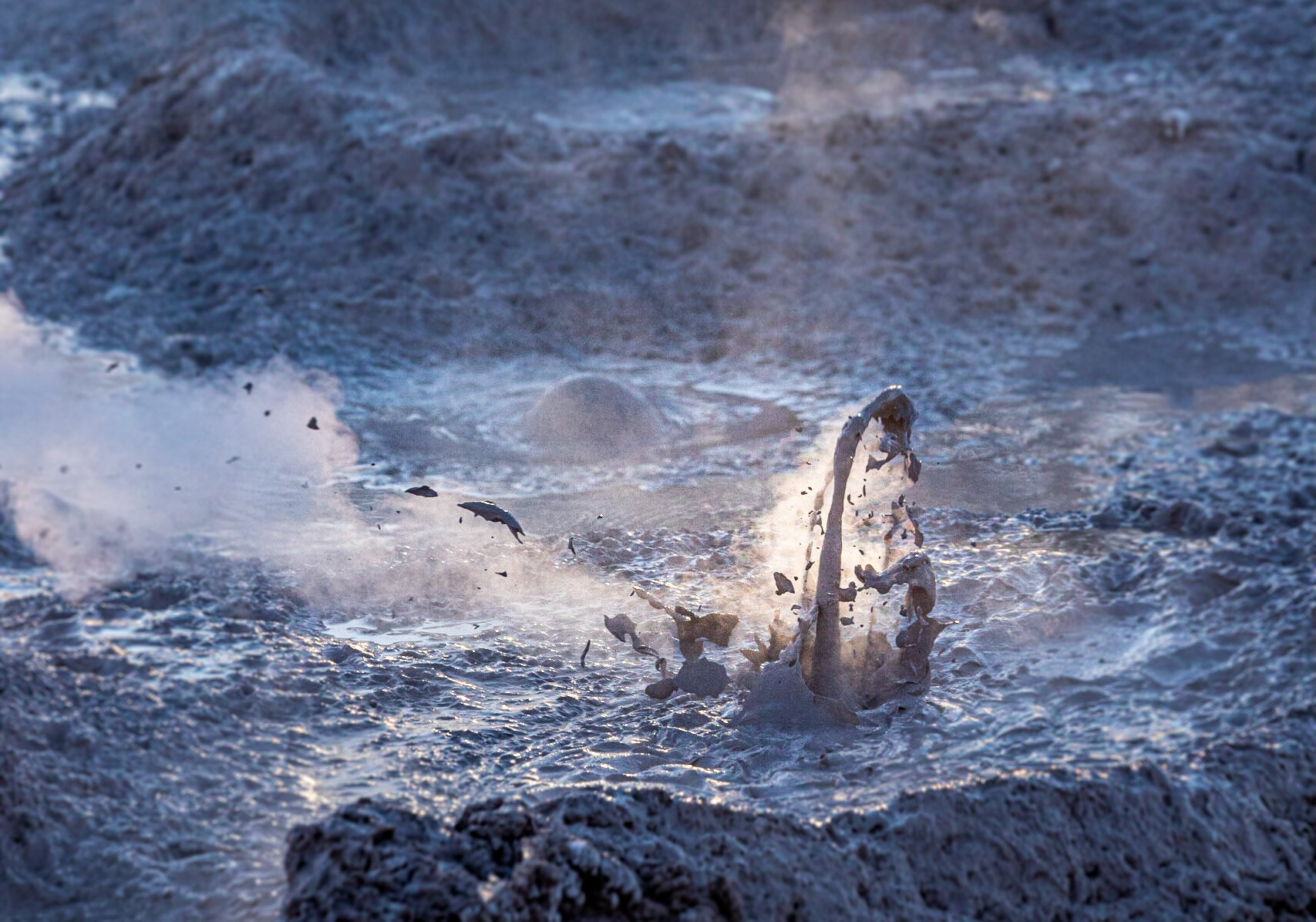
No description of Yellowstone would be complete without at least mentioning the geothermal features. The park sits on a very thin layer of Earth's crust, so the hot magma underneath is able to transform otherwise normal geological features into something else entirely. Deep water reservoirs begin to boil and turn into geysers, muddy swamps turn into bubbling cauldrons of hot mud, fissures pop out of dry land to spew gasses that smell like my omelets do after a week of laying out in the sun (don't ask how I know this), and mineral deposits along with extremophile bacteria paint the landscape with impossible rainbows of color.
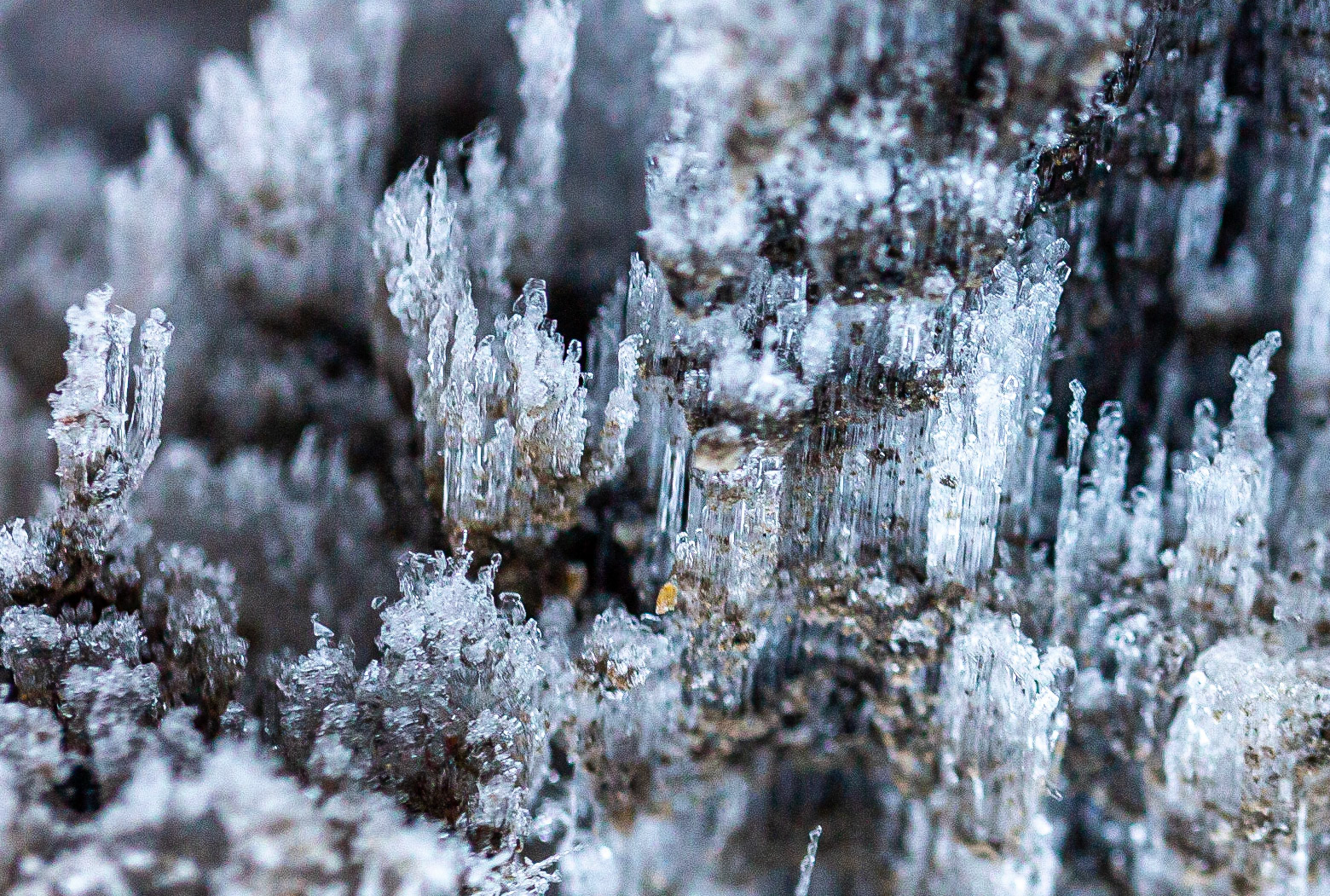
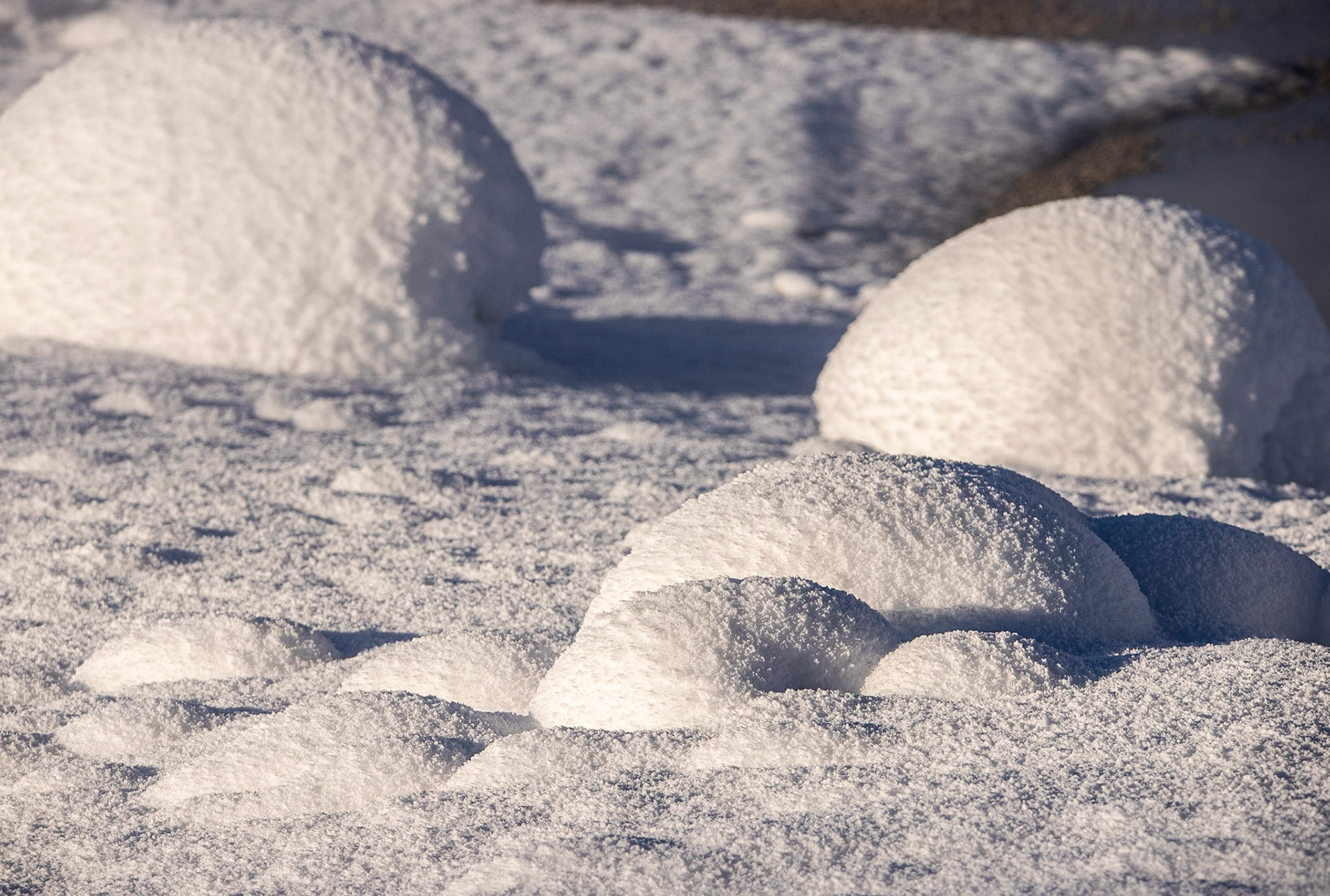
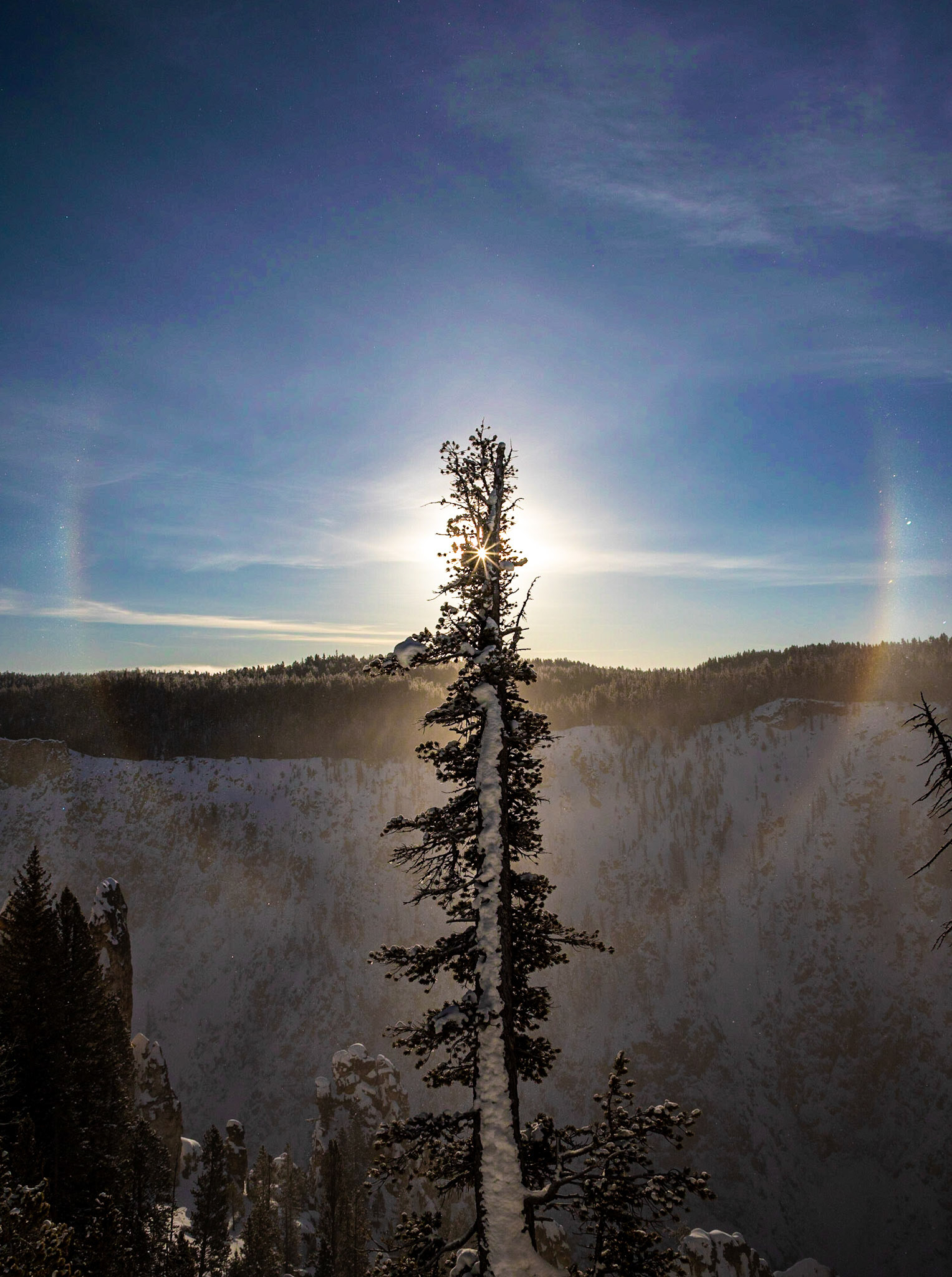
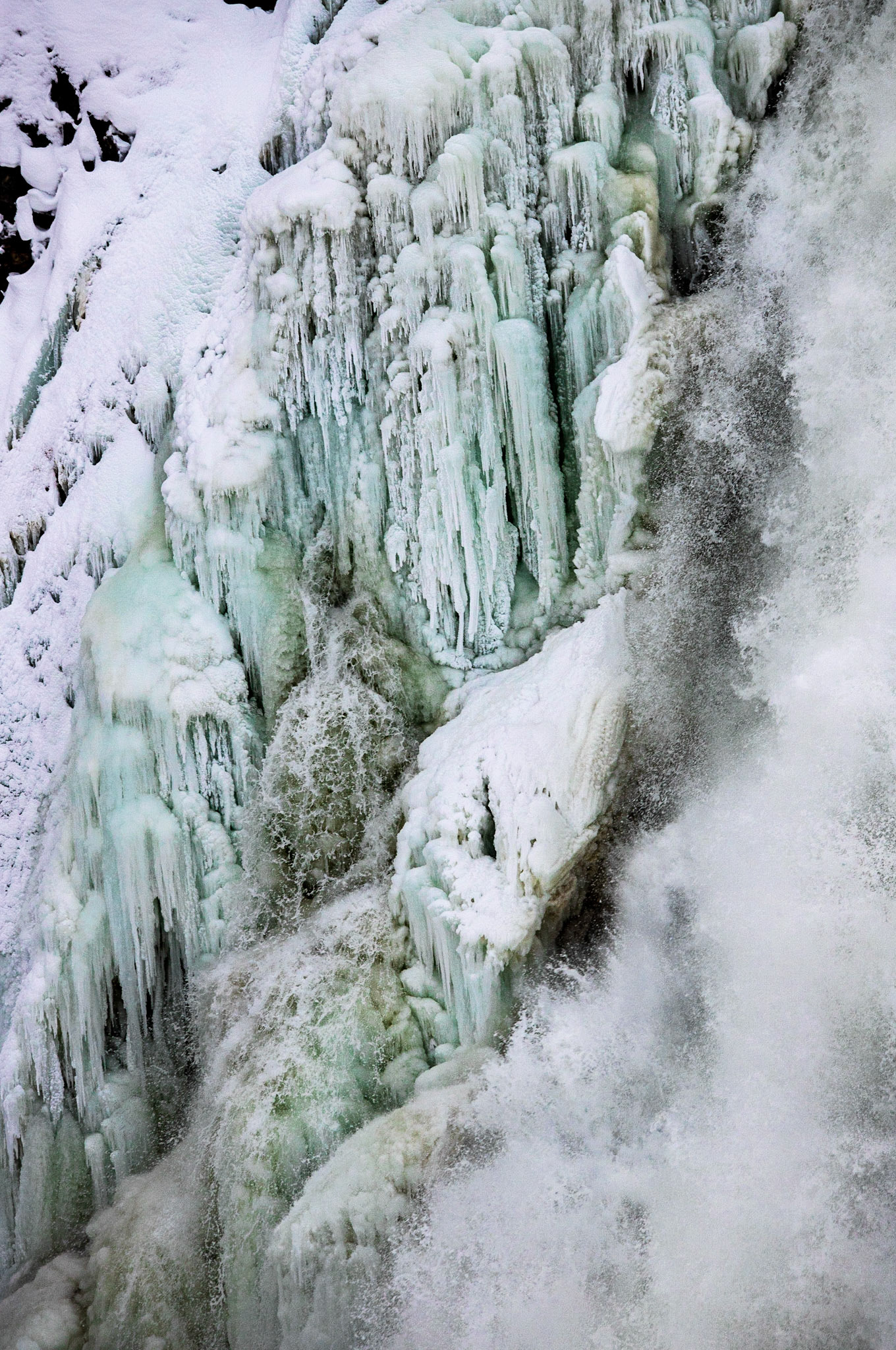
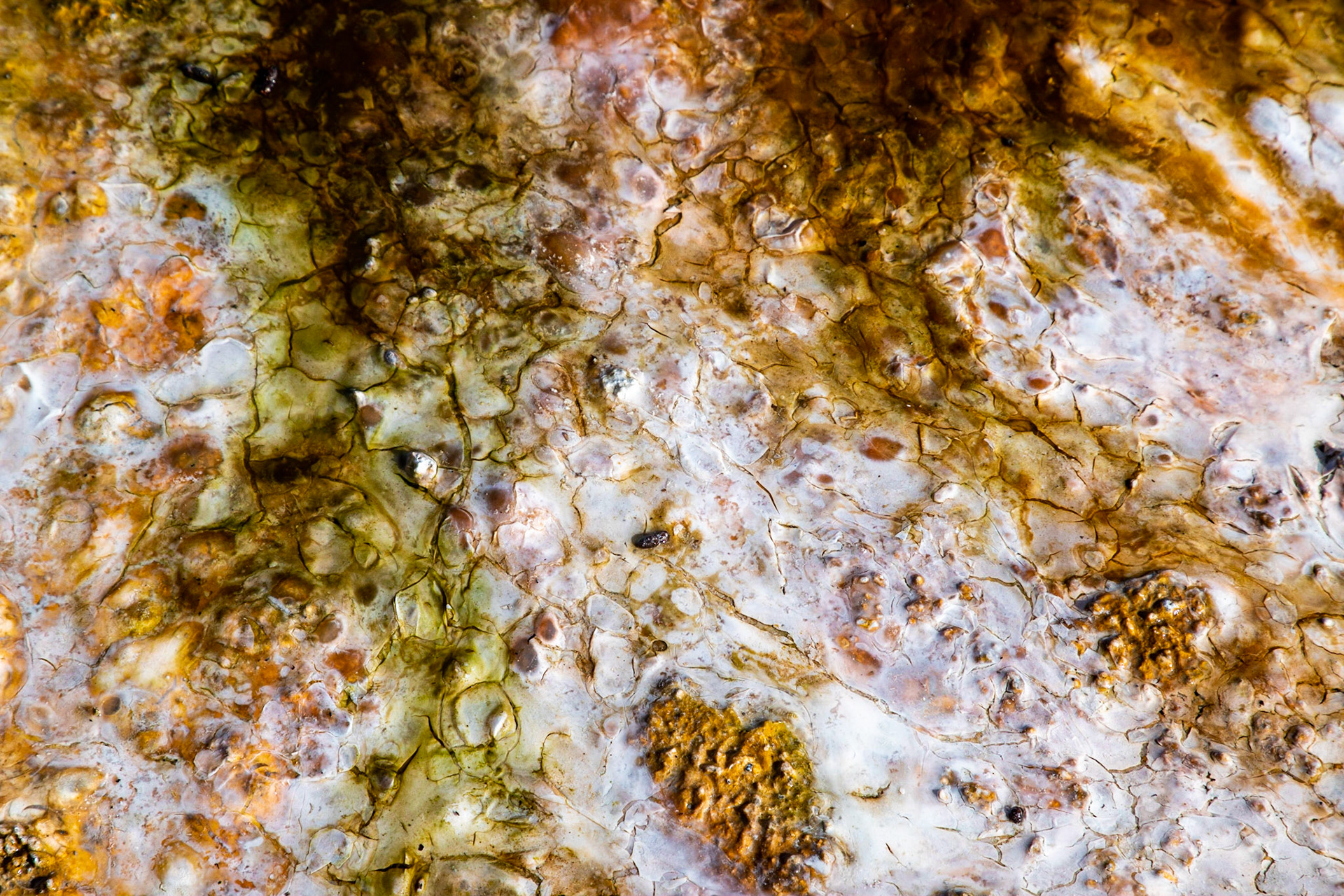
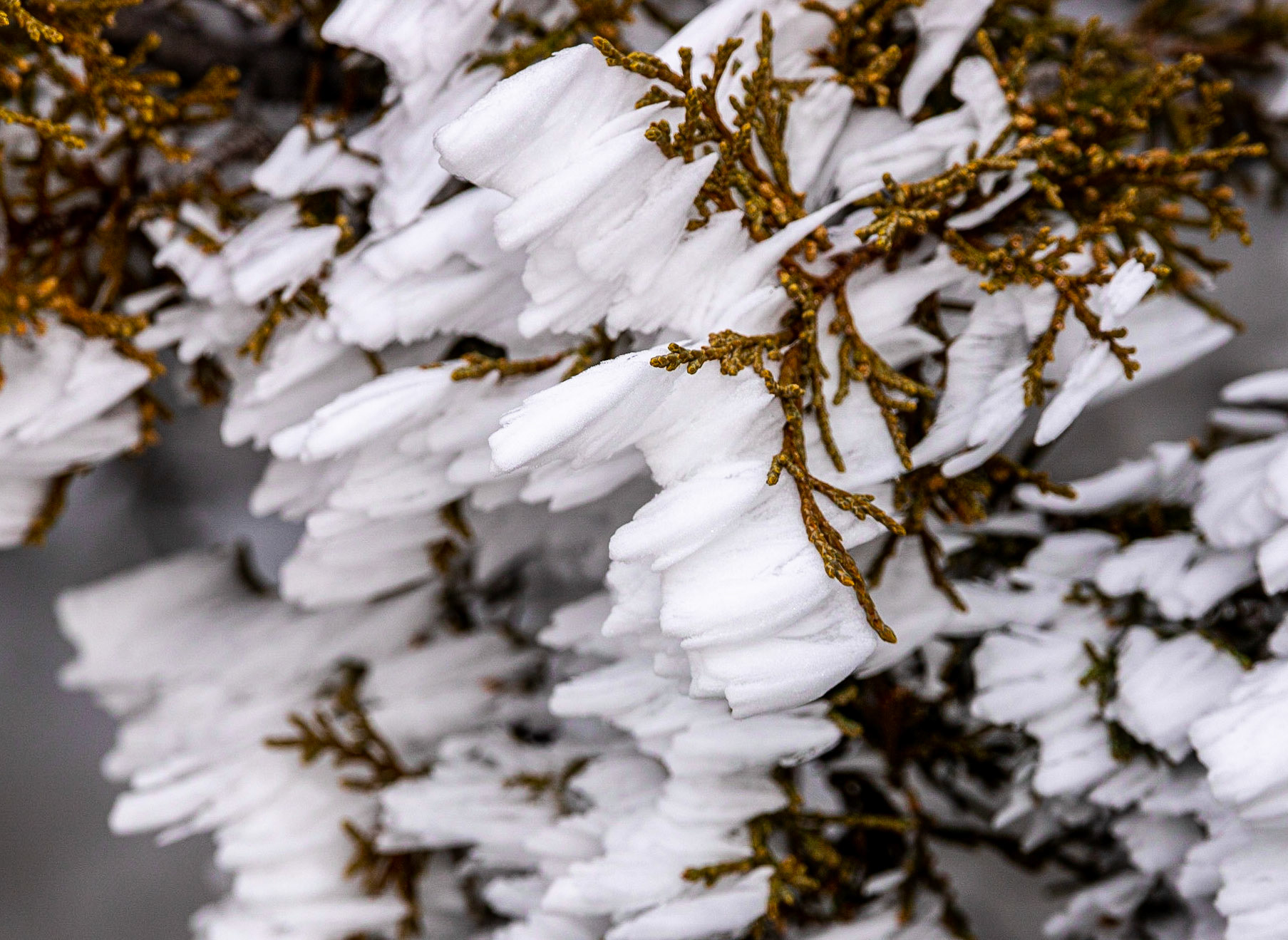
These features are particularly interesting where they meet the freezing cold boundary of winter. Steam from the hot springs blows against the cold trees, building up a layer of ice crystals on one side of those trees. A bison-shaped shadow will occasionally wander through, betraying the beast as it tries to warm up a bit in the warmer air. Waterfalls freeze on their way down cascading ice plateaus and icicles. If you time it right, you can even catch a halo in the sky as light reflects off millions of tiny ice crystals in the early morning sun. Once thriving trees, now only vertical barren poles, still stand amid mineral terraces, the bottom part of their trunks painted white with deposits over the eons. This sort of twisted beauty emerges everywhere even as the shattered land spews poison and death across large swathes of the park.
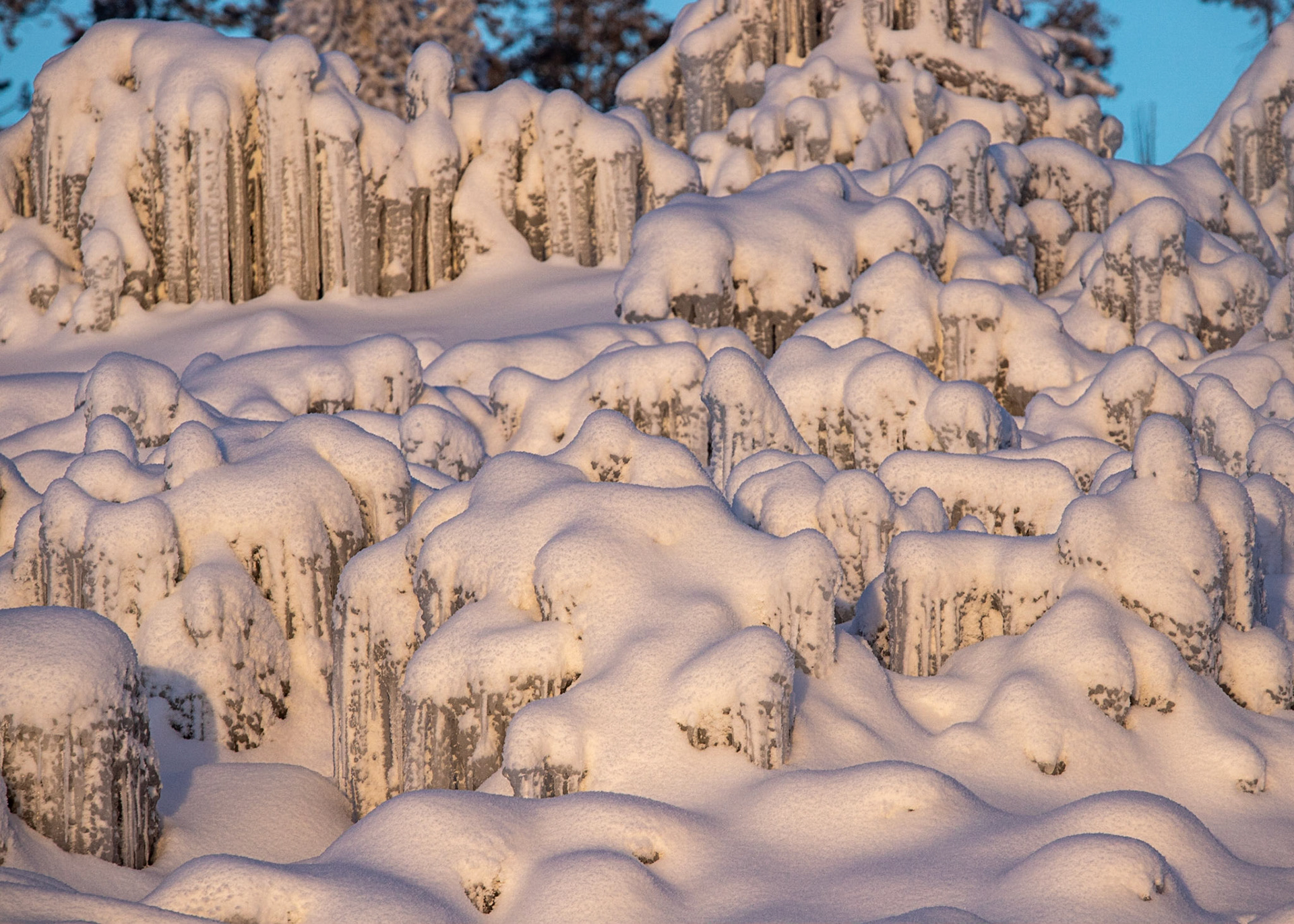
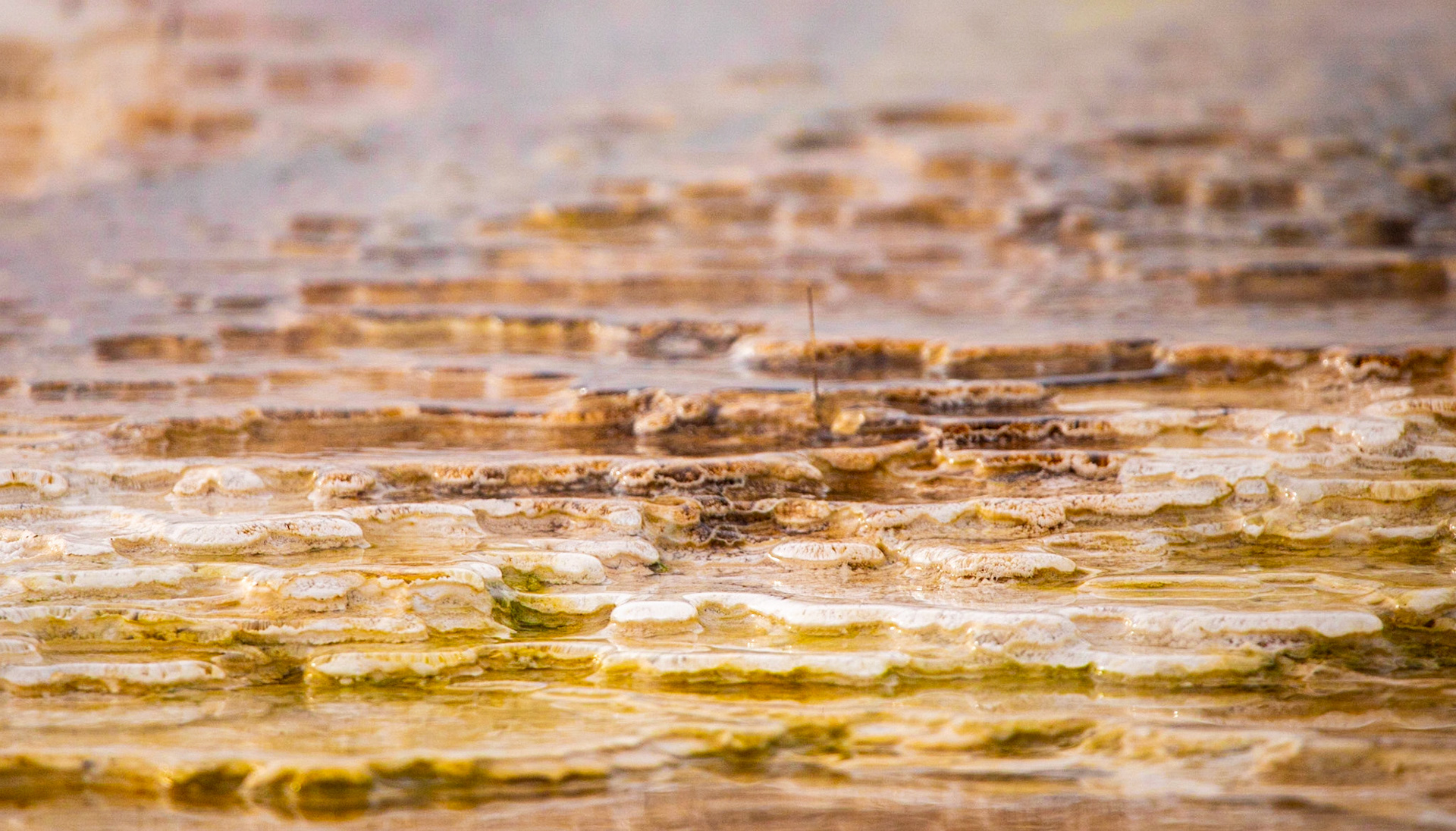
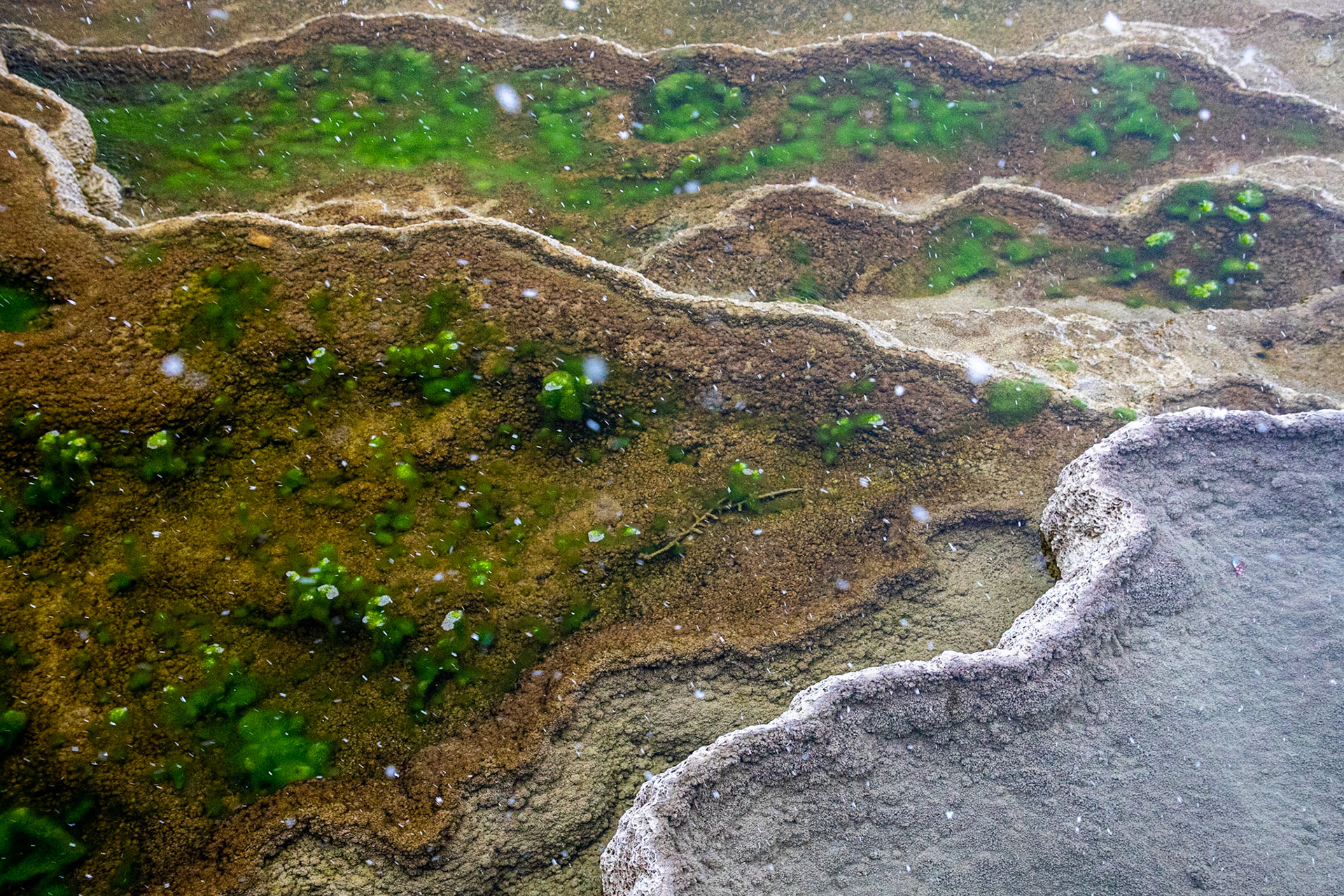
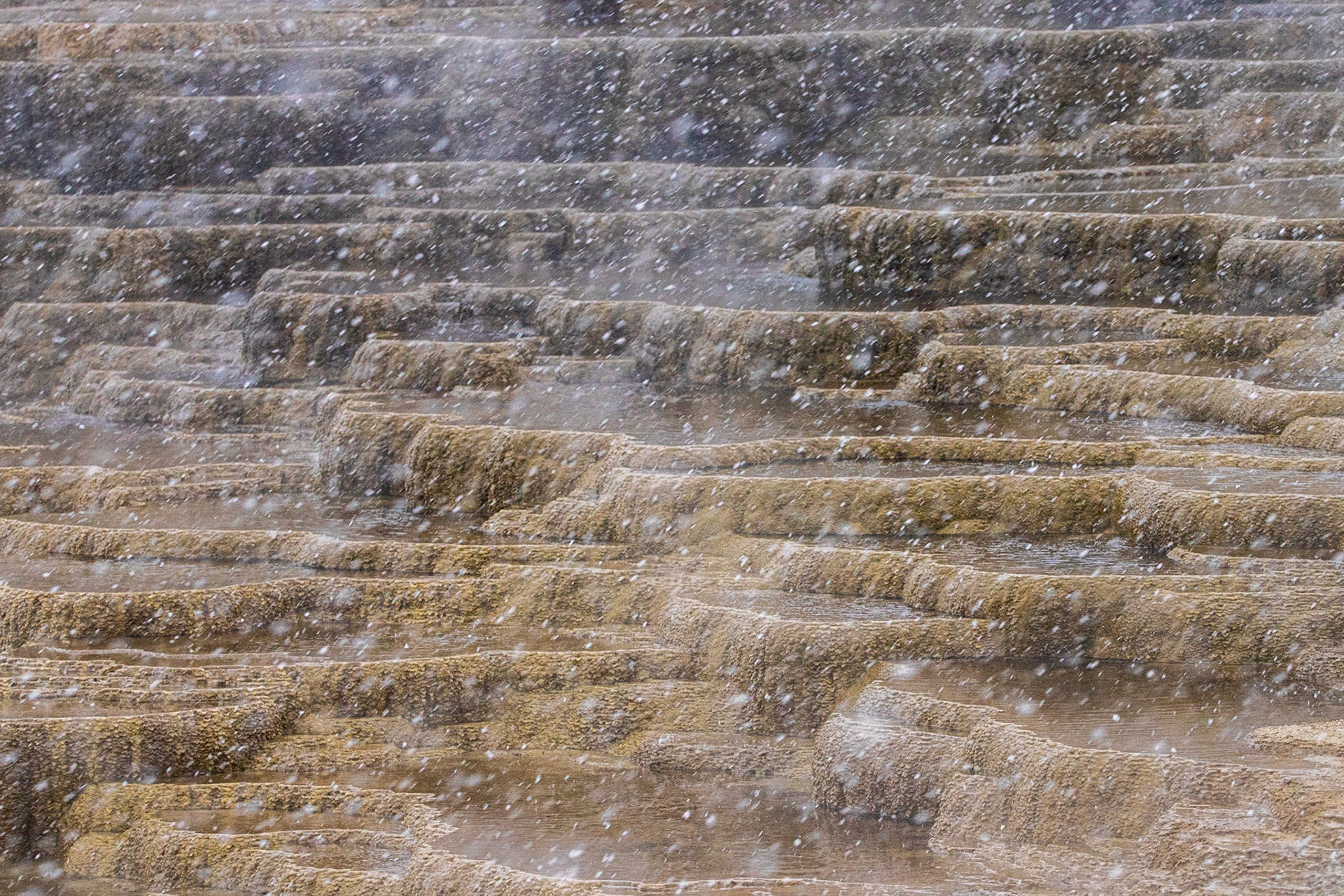
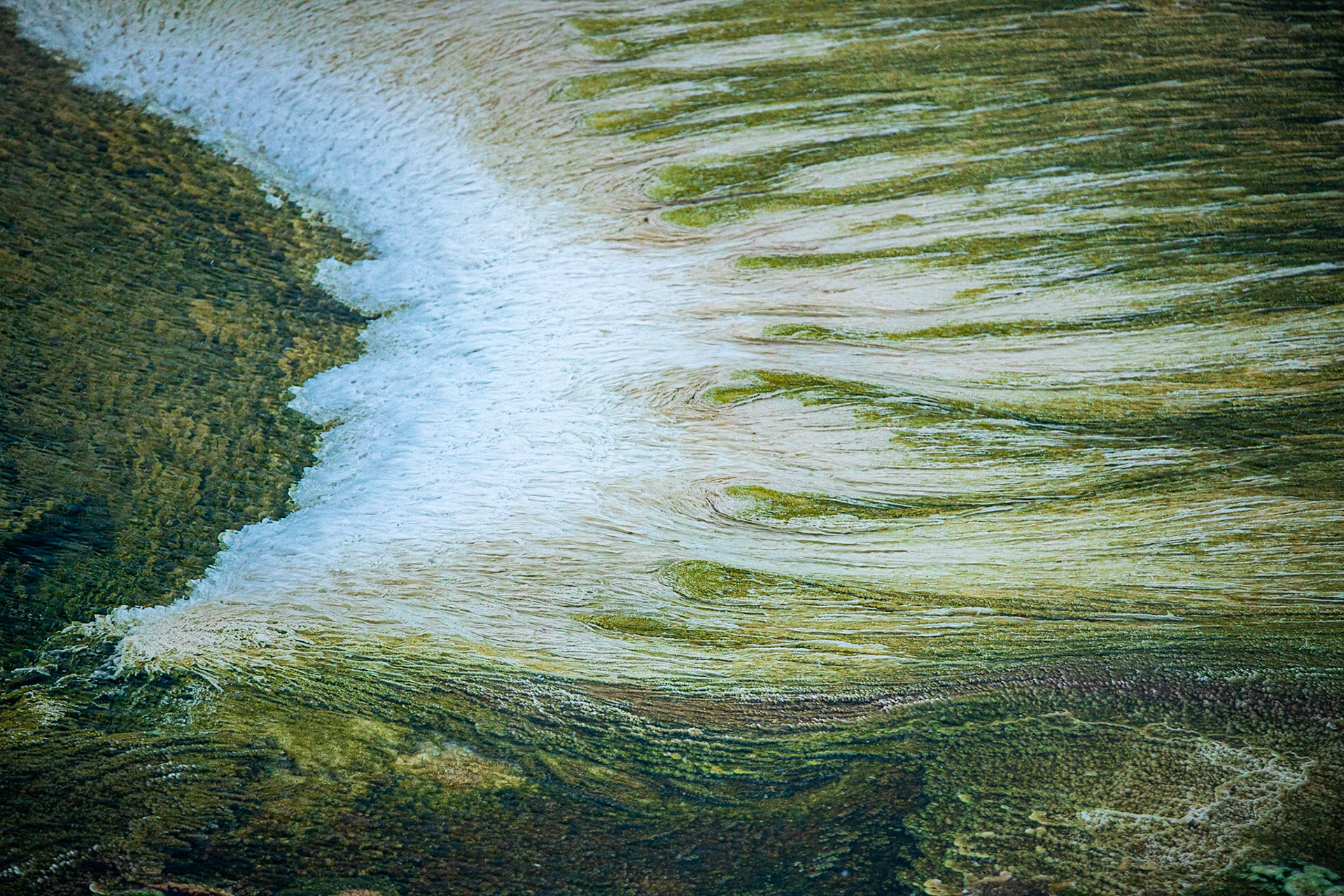
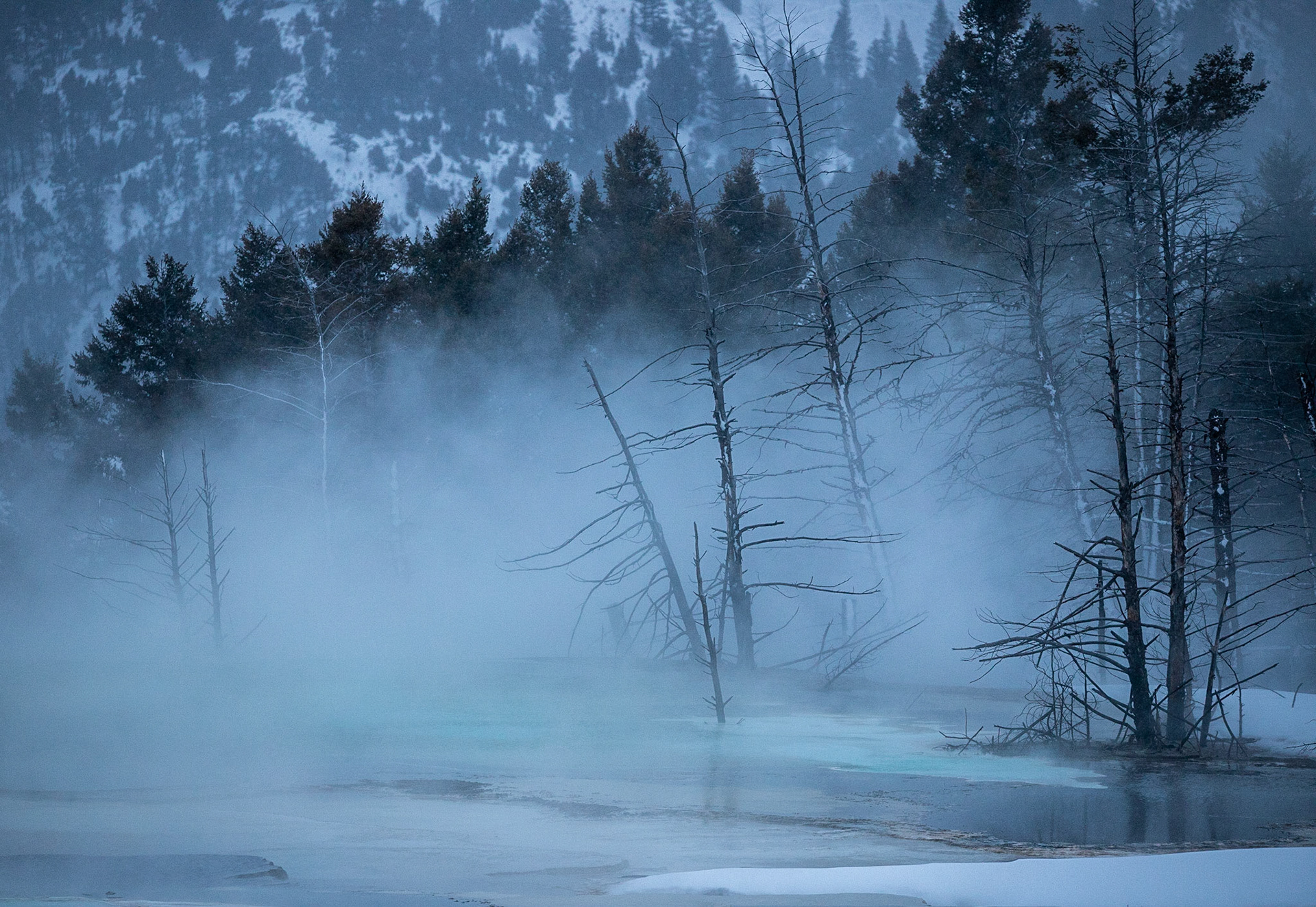
Wolves
Wolves are one of the most desired sightings in Yellowstone. Though there are several packs roaming the park, they are seldom seen, especially up close. For the best odds of finding them, you need to head out early or late in the day when the light is not so strong. Since wolves were on our must-see list, we headed out early and stayed until dark every night we were there.
We did eventually spot the Wapiti pack on our next-to-last day - the wolf trackers in the park pointed us to the top of "One Tree Hill" early that morning. With some maneuvering, we were able to get within a few hundred yards of the pack and made out their distinctive shapes and colors in the morning light as they played and rested following a successful hunting night. Though little more than specks at this distance, they nevertheless captivated our attention and sense of wonder. They truly are the apex predators of the park, and the comfort they displayed on the top of the hill demonstrated exactly the sort of confidence you would expect.
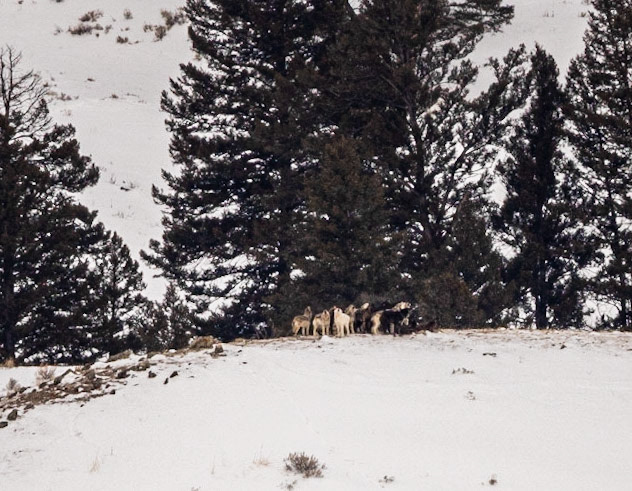
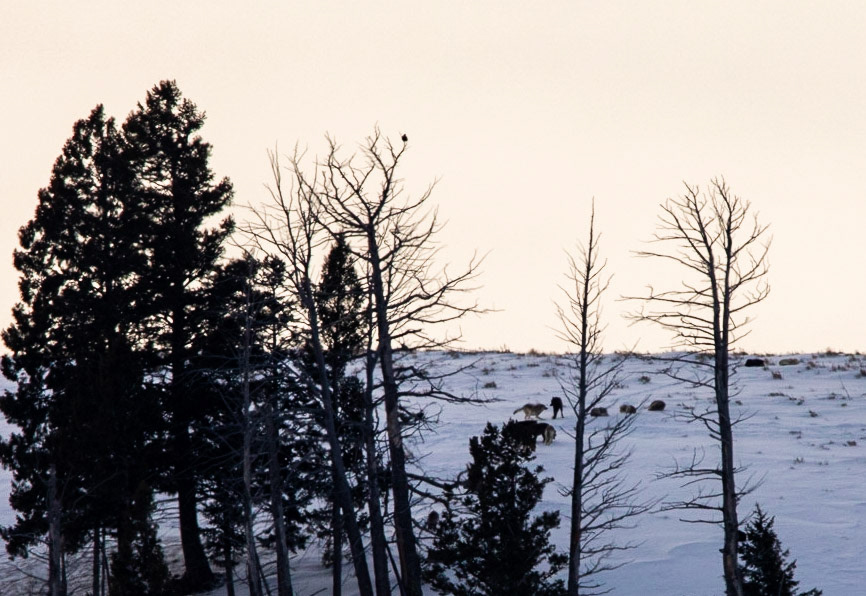

Our last morning offered one last chance to see them, and once again we were able to spot them in the distance near the Tower junction. This time they held a concert for us, trying to outdo a rival pack who were also singing in the distance. I was stunned by how loudly they howled. Their voices carried well even from several hundred meters away. Watching them sing brought chills to our spines and smiles to our faces; we had just witnessed one of the most magical events one could hope for in Yellowstone.










